1993 Tour de France
80th edition: july 2 - july 24, 1993, results, stages with running gc, map, photos and video.
1992 Tour | 1994 Tour | Tour de France database | 1993 Tour Quick Facts | Final 1993 Tour GC | Stage results with running GC | 1993 Tour de France photos | Video
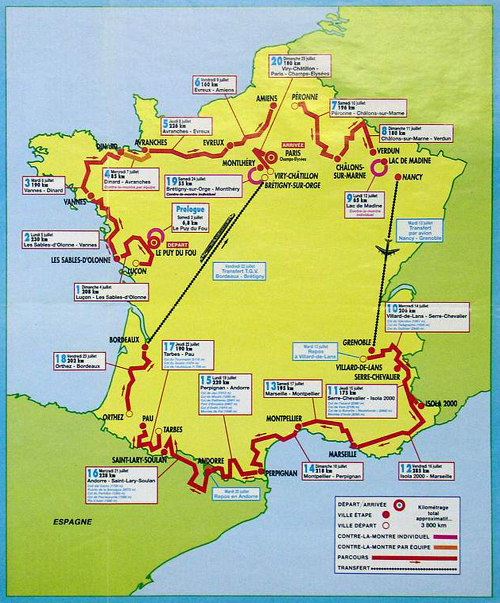
L es Woodland's book Tour of Flanders: The Inside Story - The rocky roads of the Ronde van Vlaanderen is available in print, Kindle eBook and audiobook versions. To get your copy, just click on the Amazon link on the right.
1993 Tour de France Quick Facts
The 1993 Tour had 20 stages plus a prologue that totaled 3,714.3 kilometers.
It was ridden at an average speed of 38.709 km/hr.
180 riders started and there were 136 classified finishers.
This was Miguel Indurain's third consecutive Tour victory.
1993 marked Indurain's second Giro-Tour double win. Coppi, Anquetil, Merckx and Hinault had done the Giro/Tour win in the same year twice as well, but only Indurain had done it in consecutive years.
In 1993 Indurain's main challenge came from Tony Rominger.
Rominger lost time early in the race during the team time trial.
After the race was over Rominger felt that without that catastrophic time loss (which included a 1-minute penalty because the CLAS riders were giving each other pushes) Indurain would not have had the luxury of riding conservatively and therefore would have been beatable.
We'll never know.
1993 Tour de France complete final General Classification:
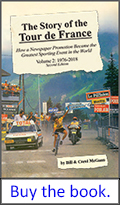
- Tony Rominger (Clas) @ 4min 59sec
- Zenon Jaskula (GB-MG) @ 5min 48sec
- Alvaro Mejia (Motorola) @ 7min 29sec
- Bjarne Riis (Ariostea) @ 16min 26sec
- Claudio Chiappucci (Carrera) @ 17min 18sec
- Johan Bruyneel (OMCE) @ 18min 4sec
- Andrew Hampsten (Motorola) @ 20min 14sec
- Pedro Delgado (Banesto) @ 23min 57sec
- Vladimir Poulnikov (Carrera) @ 25min 29sec
- Gianni Faresin (ZG Mobili) @ 29min 5sec
- Antonio Martin (Amaya Seguros) @ 29min 51sec
- Stephen Roche (Carrera) @ 29min 53sec
- Roberto Conti (Ariostea) @ 30min 5sec
- Jean-Philippe Dojwa (Festina) @ 30min 24sec
- Oliveiro Rincón (Amaya Seguros) @ 33min 19sec
- Alberto Elli (Ariostea) @ 33min 29sec
- Jon Unzaga (Clas) @ 38min 9sec
- Richard Virenque (Festina) @ 39min 12sec
- Gianni Bugno (Gatorade) @ 40min 8sec
- Franco Vona (GB-MG) @ 40min 39sec
- Laurent Madouas (Castorama) @ 41min 26sec
- Federico Echave (Clas) @ 42min 25sec
- Robert Millar (TVM) @ 44min 20sec
- Udo Bölts (Telekom) @ 44min 35sec
- Francisco Mauleón (Clas) @ 45min 18sec
- Raúl Alcala (Wordperfect) @ 47min 40sec
- Thierry Claveyrolat (Gan) @ 49min 21sec
- Giancarlo Perini (ZG Mobili) @ 52min 2sec
- Fernando Escartin (Clas) @ 53min 9sec
- Bo Hamburger (TVM) @ 53min 42sec
- Ramon Gaonzalez (Festina) @ 57min 57sec
- Massimo Ghirotto (ZG Mobili) @ 1hr 0min 15sec
- Leonardo Sierra (ZG Mobili) @ 1hr 1min 35sec
- Viatcheslav Ekimov (Novemail) @ 1hr 6min 43sec
- Thierry Bourguignon (Castorama) @ 1hr 8min 56sec
- Eric Caritoux (Chazal) @ 1hr 13min 57sec
- Bruno Cenghialta (Ariostea) @ 1hr 14min 46sec
- Dimitri Zhdanov (Novemail) @ 1hr 15min 17sec
- Charly Mottet (Novemail) @ 1hr 16min 15sec
- Alex Zülle (ONCE) @ 1hr 18min 58sec
- Laudelino Cubino (Amaya Seguros) @ 1hr 19min 26sec
- Pascal Lino (Fastina) @ 1hr 19min 53sec
- Laurent Brochard (Castorama) @ 1hr 20min 17sec
- Eddy Bouwmans (Novermail) @ 1hr 23min 12sec
- Gerard Rué (Banesto) @ 1hr 25min 34sec
- Ronan Pensec (Novemail) @ 1hr 33min 35sec
- Bruno Cornillet (Novemail) @ 1hr 34min 4sec
- Jean François Bernard (Banesto) @ 1hr 34min 48sec
- Johan Museeuw (GB-MG) @ 1hr 35min 45sec
- Flavio Vanzella (GB-MG) @ 1hr 35min 50sec
- Jörg Müller (Clas) @ 1hr 36min 37sec
- Jesper Skibby (TVM) @ 1hr 36min 43sec
- Rolf Järmann (Ariostea) @ 1hr 37min 23sec
- Gerrit de Vries (TVM) @ 1hr 37min 24sec
- Rolf Aldag (Telekom) @ 1hr 37min 36sec
- François Simon (Castorama) @ 1hr 41min 23sec
- Miguel Angel Martinez (ONCE) @ 1hr 43min 3sec
- François Lemarchand (Gan) @ 1hr 43min 20sec
- Stefano Colagè (ZG Mobili) @ 1hr 47min 8sec
- Franco Ballerini (GB-MG) @ 1hr 49min 25sec
- Jens Heppner (Telekom) @ 1hr 51min 32sec
- Eric Boyer (Gan) @ 1hr 52min 12sec
- Philippe Louviot (ONCE) @ 1hr 52min 19sec
- Mauro-Antonio Santaromita (Ariostea) @ 1hr 52min 24sec
- Laurent Pillon (GB-MG) @ 1hr 52min 42sec
- Guy Nulens (Novemail) @ 1hr 53min 40sec
- Pascal Lance (Gan) @ 1hr 54min 43sec
- Marc Sergeant (Novemail) @ 1hr 55min 21sec
- Rolf Sørensen (Carrera) @ 1hr 56min 50sec
- Maximilian Sciandri (Motorola) @ 1hr 57min 14sec
- Marino Alonso (Banesto) @ 1hr 58min 4sec
- Gianluca Bortolami (Lampre) @ 1hr 59min 14sec
- Julián Gorospe (Banesto) @ 2hr 0min 22sec
- Pascal Chanteur (Chazal) @ 2hr 0min 42sec
- Djamolidine Abduzhaprov (Lampre) @ 2hr 3min 33sec
- Brian Holm (Telekom) @ 2hr 4min 55sec
- Iñaki Gaston (Clas) @ 2hr 5min 32sec
- Fabian Jeker (Castorama) @ 2hr 7min 12sec
- John Van den Akker (ZG Mobili) @ 2hr 7min 17sec
- Dominique Arnould (Castorama) @ 2hr 7min 40sec
- Juan Carlos Martin (Amaya Seguros) @ 2hr 8min 53sec
- Luc Roosen (Lotto) @ 2hr 9min 16sec
- Phil Anderson (Motorola) @ 2hr 10min 45sec
- Fabio Roscioli (Carrera) @ 2hr 11min 31sec
- Wilfried Peeters (GB-MG) @ 2hr 11min 55sec
- Christian Henn (Telekom) @ 2hr 12min 13sec
- Sean Yates (Motorola) @ 2hr 16min 38sec
- Frankie Andreu (Motorola) @ 2hr 17min 10sec
- Dag Otto Lauritzen (TVM) @ 2hr 17min 40sec
- Maarten Den Bakker (TVM) @ 2hr 18min 32sec
- Mario Chiesa (Carrera) @ 2hr 18min 42sec
- Franck Pineau (Chazal) @ 2hr 18min 55sec
- José Ramon Uriarte (Banesto) @ 2hr 19min 44sec
- Javier Murguialday (Amaya Seguros) @ 2hr 19min 53sec
- Davide Bramati (Lampre) @ 2hr 22min 18sec
- Serhiy Otchakov (Lampre) @ 2hr 23min 8sec
- Uwe Raab (Telekom) @ 2hr 23min 24sec
- Gerd Audehm (Telekom) @ 2hr 24min 9sec
- Nelson Rodriguez (ZG Mobili) @ 2hr 24min 13sec
- Steve Bauer (Motorola) @ 2hr 25min 46sec
- Heminio Diaz (ONCE) @ 2hr 25min 57sec
- Laurent Biondi (Chazal) @ 2hr 26min 59sec
- Stefano Zanatta (Gatorade) @ 2hr 27min 37sec
- Davide Cassani (Ariostea) @ 2hr 27min 58sec
- Frans Maassen (Wordperfect) @ 2hr 28min 55sec
- Marc Wauters (Lotto) @ 2hr 30min 33sec
- Jean-Pierre Delphis (Chazal) @ 2hr 32min 50sec
- Laurent Debiens (Castorama) @ 2hr 33min 5sec
- Serge Baguet (Lotto) @ 2hr 34min 45sec
- Mario Kummer (Telekom) @ 2hr 35min 22sec
- Fédéric Moncassin (Wordperfect) @ 2hr 35min 35sec
- Michel Vermote (Festina) @ 2hr 36min 54sec
- Herman Frison (Lotto) @ 2hr 36min 58sec
- Christophe Capelle (Gan) @ 2hr 37min 23sec
- Michel Dernies (Motorola) @ 2hr 37min 37sec
- Jesus Montoya (Amaya Seguros) @ 2hr 38min 10sec
- Tom Cordes (Amaya Seguros) @ 2hr 40min 12sec
- Patrice Esnault (Chazal) @ 2hr 40min 47sec
- Mario Scirea (Gatorade) @ 2hr 40min 53sec
- Jacky Durand (Castorama) @ 2hr 40min 57sec
- Tohn Talen (TVM) @ 2hr 42min 11sec
- Philippe Casado (Gan) @ 2hr 43min 2sec
- Jean-Pierre Bourgeot (Chazal) @ 2hr 44min 5sec
- Giovanni Fidanza (Gatorade) @ 2hr 45min 31sec
- Prudencio Indurain (Banesto) @ 2hr 53min 49sec
- Gert Jakobs (Festina) @ 2hr 55min 48sec
- Andrea Tafi (Carrera) @ 2hr 56min 18sec
- Jelle Nijdam (Wordperfect) @ 2hr 56min 52sec
- Danny Nelissen (TVM) @ 3hr 0min 9sec
- Dieter Runkel (Wordperfect) @ 3hr 1min 59sec
- Peter De Clercq (Lotto) @ 3hr 5min 21sec
- Jean-Claude Colotti (Gan) @ 3hr 5min 40sec
- Rob Mulders (Wordperfect) @ 3hr 6min 6sec
- Peter Farasijn (Lotto) @ 3hr 11min 43sec
- Edwig van Hooydonck (Wordperfect) @ 3hr 30min 15sec
Climbers Competition:
- Claudio Chiappucci (Carrera): 301
- Oliviero Rincón (Amaya Seguros): 286
- Miguel Indurain (Banesto): 239
- Richard Virenque (Festina): 191
- Alvaro Mejia (Motorola): 187
- Davide Cassani (Ariostea): 155
- Zenon Jaskula (GB-MG): 153
- Leonardo Sierra (ZG Mobili): 136
- Bjarne Riis (Ariostea): 113
Points Competition:
- Johan Museeuw (GB-MG): 157
- Maximilian Sciandri (Motorola): 153
- François Simon (Castorama): 149
- Christophe Capelle (Gan): 147
- Frédéric Moncassin (Wordperfect): 145
- Miguel Indurain (Banesto): 136
- Bjarne Riis (Ariostea): 133
- Tony Rominger (Clas): 126
- Stefano Colagè (ZG Mobili): 120
Team Classification:
- Carrera 288hr 9min 22sec
- Ariostea @ 47min 40sec
- Clas @ 48min 49sec
- Festina @ 1hr 8min 42sec
- Banesto @ 1hr 8min 57sec
- GB-MG @ 1hr 13min 59sec
- Motorola @ 1hr 27min 22sec
- ZG Mobili @ 1hr 35min 3sec
- Amaya Seguros @ 1hr 48min 48sec
- ONCE @ 1hr 51min 12sec
- Antonio Martin (Amaya Seguros) 96hr 27min 0sec
- Oliviero Rincón (Amaya Seguros) @ 3min 28sec
- Richard Virenque (Festina) @ 8min 21sec
- Fernando Escartin (Clas) @ 23min 18sec
- Bo Hambeurger (TVM) @ 23min 51sec
- Leonardo Sierra (ZG Mobili) @ 31min 44sec
- Dimitri Zhdanov (Novemail) @ 45min 26sec
- Alex Zülle (ONCE) @ 49min 7sec
- Laurent Brochard (Castorama) @ 50min 26sec
- Eddy Bouwmans (Novemail) @ 53min 21sec

Content continues below the ads
1993 Tour de France stages and results
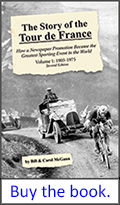
Prologue: Saturday, July 3, Puy du Fou 6.8 km Individual Time Trial. Stage and GC places and times are the same.
Stage 1: Sunday, July 4, Lucon - Les Sables d'Olonne, 215 km
GC after Stage 1:
Stage 2: Monday, July 5, Les Sables d'Olonne - Vannes, 227.5 km
GC after stage 2:
Stage 3: Tuesday, July 6, Vannes - Dinard, 189.5 km
GC after Stage 3:
Stage 4: Wednesday, July 7, Dinard - Avranches 81 km Team Time Trial
GC after Stage 4:
Stage 5: Thursday, July 8, Avranches - Evreux, 225.5 km
GC after stage 5:
Stage 6: Friday, July 9, Evreux - Amiens, 158 km
GC after Stage 6:
Stage 7: Saturday, July 10, Péronne - Chalons sur Marne, 199 km
GC after Stage 7:
Stage 8: Sunday, July 11, Chalons sur Marne - Verdun, 184.5 km
GC after stage 8:
Stage 9: Monday, July 12, Lac de Madine 59 km Individual Time Trial
GC after Stage 9:
Stage 10: Wednesday, July 14, Villard de Lans - Serre Chevalier, 203 km
GC after Stage 10:
Stage 11: Thursday, July 15, Serre Chevalier - Isola 2000, 179 km
GC after Stage 11:
Stage 12: Friday, July 16, Isola 2000 - Marseille, 285.5 km
GC after stage 12:
Stage 13: Saturday, July 17, Marseille - Montpellier, 181.5 km
GC after Stage 13:
Stage 14: Sunday, July 18, Montpellier - Perpagnan, 223 km
GC after stage 14:
Stage 15: Monday, July 19, Perpignan - Andorra, 231.5 km
GC after stage 15:
Stage 16: Wednesday, July 21, Andorra - St. Lary du Soulan, 230 km
GC after Stage 16:
Stage 17: Thursday, July 22, Tarbes - Pau, 190 km
GC after stage 17:
Stage 18: Friday, July 23, Orthez - Bordeaux, 199.5 km
GC after Stage 18:
Stage 19: Saturday, July 24, Bretigny sur Orge - Monthléry 48 km Individual Time Trial
GC after Stage 19:
20th and Final Stage: Sunday, July 25, Viry Chatillon - Paris/Champs Elysées, 196.5 km
Complete Final 1993 Tour de France General Classification
1993 Tour de France photos:
French video of stage 11 to Isola 2000
© McGann Publishing
- Share full article
Advertisement
Supported by

CYCLING; Gentleman, Start Your Bicycles: It's Time for the 1993 Tour de France
By Samuel Abt
- July 2, 1993
Claudio Chiappucci, who has twice finished second in the Tour de France, knows how to beat Miguel Indurain. So does Frederic Moncassin, who has never come closer to the Tour than watching it on television.
"It can be done," said Chiappucci. "The way is to attack him, attack him and attack him again."
"Keep him under attack," echoed Moncassin, who will be riding his first Tour. "Keep him and his team under pressure."
Everybody knows the strategy, it seems. Why then has nobody been able to defeat the Spaniard since 1990 in the world's most important bicycle race? And why then will Indurain be such an overwhelming favorite when the three-week Tour begins Saturday in le Puy du Fou in western France?
The answer can be found in a question: Who will volunteer to throw away his own chances by carrying the fight to Indurain, the strongest rider in the pack? Hard to Tire Out
As Chiappucci proved in the Tour of Italy last month, the rider who devotes himself to attacking Indurain risks exhaustion long before his intended victim does. After days of trying -- and failing -- to speed away from Indurain in the mountains, the spent Italian staggered in ninth, 4 minutes 15 seconds behind, in the decisive time trial. The time-trial winner was, of course, Indurain, who was en route to his second successive victory in Italy, matching his string in the Tour.
Chiappucci has wisely declined the kamikaze role in this Tour de France, but has nominated a couple of other riders. They are Tony Rominger and Alex Zulle, two Swiss who this year have dominated the stage races that Indurain hasn't. Rominger won the Vuelta de Espana for the second successive year, barely beating Zulle, who won Paris-Nice. Both are strong climbers and splendid time-trialers, as is Indurain.
This 80th Tour de France seems designed for them.
Included in its 2,311 miles, will be five days in the mountains -- two in the Alps and three in the Pyrenees. Twenty-one major climbs are scheduled, with nine mountains towering more than 6,600 feet. The list includes such standard Tour backbreakers as the Galibier, Glandon and Izoard passes in the Alps (July 14 and 15) and the Peyresourde, Aubisque and Tourmalet passes in the Pyrenees (July 19, 21 and 22). The climb to Alpe d'Huez, usually a centerpiece, has been dropped this year. Three Time Trials
Three long time trials, or races against the clock, are scheduled. Two will be on an individual basis: 36.5 miles on July 10 and 30 miles on July 24, the day before the finish in Paris. Preceding them will be a team time trial on July 7 over a shattering 50 miles.
The team time trial is regarded as Indurain's weakness because his Banesto teammates cannot match his pace over the long haul, and the time for each rider is that of the fifth man in the team to finish. Look for Zulle and his Once team, Chiappucci and his Carrera team and Rominger and his Clas team to leave Banesto far behind.
If they do, the first individual time trial should not allow Indurain to open a formidable lead over all, as he did last year, when he came in three minutes ahead of his nearest rival. According to the new script, Indurain will enter the individual time trial with a big enough deficit -- say 2 minutes -- to offset whatever his winning margin is that day.
Nor is he likely to leave most of his rivals behind in the Alps on the fearsome climb to Isola 2000 at the end of a 111-mile stage on July 15. The authority for that statement is Indurain himself, who predicts that the Tour will not be decided until late in the Pyrenees. Take a Deep Breath
The date circled on most riders' calendars is July 21. The 143-mile stage that day goes from Andorra to St. Lary Soulan in France over five peaks, culminating in a 7.4-mile ascent up an 8 percent grade. If it's hot, and it usually is, the carnage could be terrible.
"That will be my big day," said Moncassin, who rides for the Dutch-based WordPerfect team. What he meant was not that he expected to do well. Like all first-rate sprinters, he is a terrible climber.
It will be his big day, he continued, because that stage will be as close as the Tour will pass to his home near Toulouse, about 93 miles away.
"Everybody will come see me," he said. "My family, my friends, everybody will come to see if I make it over the mountains." Moncassin and a lot of other riders, including those brash enough to keep attacking Indurain.
Cycling Around the Globe
The cycling world can be intimidating. but with the right mind-set and gear you can make the most of human-powered transportation..
Are you new to urban biking? These tips will help you make sure you are ready to get on the saddle .
Whether you’re mountain biking down a forested path or hitting the local rail trail, you’ll need the right gear . Wirecutter has plenty of recommendations , from which bike to buy to the best bike locks .
Do you get nervous at the thought of cycling in the city? Here are some ways to get comfortable with traffic .
Learn how to store your bike properly and give it the maintenance it needs in the colder weather.
Not ready for mountain biking just yet? Try gravel biking instead . Here are five places in the United States to explore on two wheels.
- Sport Betting
- Yearly calendar
- Latest results
- English Español French Italiano Nederlands
TheSports.org
All sports Site

Cycling - Tour de France - 1993 - Detailed results
Choice of a season : 2024 2023 2022 2021 2020 2019 2018 2017 2016 2015 2014 2013 2012 2011 2010 2009 2008 2007 2006 2005 2004 2003 2002 2001 2000 1999 1998 1997 1996 1995 1994 1993 1992 1991 1990 1989 1988 1987 1986 1985 1984 1983 1982 1981 1980 1979 1978 1977 1976 1975 1974 1973 1972 1971 1970 1969 1968 1967 1966 1965 1964 1963 1962 1961 1960 1959 1958 1957 1956 1955 1954 1953 1952 1951 1950 1949 1948 1947 1939 1938 1937 1936 1935 1934 1933 1932 1931 1930 1929 1928 1927 1926 1925 1924 1923 1922 1921 1920 1919 1914 1913 1912 1911 1910 1909 1908 1907 1906 1905 1904 1903

Results 1993
Information, tour de france 1993.

General Classification - 25 July 1993
Ranking by points - 25 july 1993, mountains ranking - 25 july 1993, prologue - puy du fou, 6.8 km - 3 july 1993, stage 1 - luçon - les sables d'olonne, 215 km - 4 july 1993, stage 2 - les sables d'olonne - vannes, 227.5 km - 5 july 1993, stage 3 - vannes - dinard, 189.5 km - 6 july 1993, stage 4 - dinard - avranches, 81 km - 7 july 1993, stage 5 - avranches - evreux, 225.5 km - 8 july 1993, stage 6 - evreux - amiens, 158 km - 9 july 1993, stage 7 - péronne - chalons sur marne, 199 km - 10 july 1993, stage 8 - chalons sur marne - verdun, 184.5 km - 12 july 1993, stage 9 - lac de madine, 59 km - 13 july 1993, stage 10 - villard de lans - serre chevalier, 203 km - 14 july 1993, stage 11 - serre chevalier - isola 2000, 179 km - 15 july 1993, stage 12 - isola - marseille, 286.5 km - 16 july 1993, stage 13 - marseille - montpellier, 181.5 km - 17 july 1993, stage 14 - montpellier - perpignan, 223 km - 19 july 1993, stage 15 - perpignan - andorra, 231.5 km - 20 july 1993, stage 16 - andorra - st lary du soulan, 230 km - 21 july 1993, stage 17 - tarbes - pau, 190 km - 22 july 1993, stage 18 - orthez - bordeaux, 199.5 km - 23 july 1993, stage 19 - bretigny sur orge - monthléry, 48 km - 24 july 1993, stage 20 - viry chatillon - paris/champs - elysées, 196.5 km - 25 july 1993, tour de france - archives.
- 1903 - Tour de France
- 1904 - Tour de France
- 1905 - Tour de France
- 1906 - Tour de France
- 1907 - Tour de France
- 1908 - Tour de France
- 1909 - Tour de France
- 1910 - Tour de France
- 1911 - Tour de France
- 1912 - Tour de France
- 1913 - Tour de France
- 1914 - Tour de France
- 1919 - Tour de France
- 1920 - Tour de France
- 1921 - Tour de France
- 1922 - Tour de France
- 1923 - Tour de France
- 1924 - Tour de France
- 1925 - Tour de France
- 1926 - Tour de France
- 1927 - Tour de France
- 1928 - Tour de France
- 1929 - Tour de France
- 1930 - Tour de France
- 1931 - Tour de France
- 1932 - Tour de France
- 1933 - Tour de France
- 1934 - Tour de France
- 1935 - Tour de France
- 1936 - Tour de France
- 1937 - Tour de France
- 1938 - Tour de France
- 1939 - Tour de France
- 1947 - Tour de France
- 1948 - Tour de France
- 1949 - Tour de France
- 1950 - Tour de France
- 1951 - Tour de France
- 1952 - Tour de France
- 1953 - Tour de France
- 1954 - Tour de France
- 1955 - Tour de France
- 1956 - Tour de France
- 1957 - Tour de France
- 1958 - Tour de France
- 1959 - Tour de France
- 1960 - Tour de France
- 1961 - Tour de France
- 1962 - Tour de France
- 1963 - Tour de France
- 1964 - Tour de France
- 1965 - Tour de France
- 1966 - Tour de France
- 1967 - Tour de France
- 1968 - Tour de France
- 1969 - Tour de France
- 1970 - Tour de France
- 1971 - Tour de France
- 1972 - Tour de France
- 1973 - Tour de France
- 1974 - Tour de France
- 1975 - Tour de France
- 1976 - Tour de France
- 1977 - Tour de France
- 1978 - Tour de France
- 1979 - Tour de France
- 1980 - Tour de France
- 1981 - Tour de France
- 1982 - Tour de France
- 1983 - Tour de France
- 1984 - Tour de France
- 1985 - Tour de France
- 1986 - Tour de France
- 1987 - Tour de France
- 1988 - Tour de France
- 1989 - Tour de France
- 1990 - Tour de France
- 1991 - Tour de France
- 1992 - Tour de France
- 1993 - Tour de France
- 1994 - Tour de France
- 1995 - Tour de France
- 1996 - Tour de France
- 1997 - Tour de France
- 1998 - Tour de France
- 1999 - Tour de France
- 2000 - Tour de France
- 2001 - Tour de France
- 2002 - Tour de France
- 2003 - Tour de France
- 2004 - Tour de France
- 2005 - Tour de France
- 2006 - Tour de France
- 2007 - Tour de France
- 2008 - Tour de France
- 2009 - Tour de France
- 2010 - Tour de France
- 2011 - Tour de France
- 2012 - Tour de France
- 2013 - Tour de France
- 2014 - Tour de France
- 2015 - Tour de France
- 2016 - Tour de France
- 2017 - Tour de France
- 2018 - Tour de France
- 2019 - Tour de France
- 2020 - Tour de France
- 2021 - Tour de France
- 2022 - Tour de France
- 2023 - Tour de France
- 2024 - Tour de France
Tour de France - Information
General informations.
- First edition : 1903
- Editions : 109 (including 2022)
- Official name : Tour de France
- Wikipedia link : http://en.wikipedia.org/wiki/Tour_de_France
- Organiser : Amaury Sport Organisation
- Official website : http://www.letour.fr/
Postal Address
- © Info Média Conseil : 419 Rue Lemelin, St-François QC G0A3S0, Canada
1993 Tour de France: results and classification
General classification of the 1993 tour de france, jerseys of the 1993 tour de france, stages of the 1993 tour de france.
Prologue (Le Puy du Fou - Le Puy du Fou, 6.8 km in Individual Time Trial)
Stage 1 (Luçon - Les Sables d'Olonne, 215 km)
Stage 2 (Les Sables d'Olonne - Vannes, 227.5 km)
Stage 3 (Vannes - Dinard, 189.5 km)
Stage 4 (Dinard - Avranches, 81 km in Team Time Trial)
Stage 5 (Avranches - Evreux, 225.5 km)
Stage 6 (Evreux - Amiens, 158 km)
Stage 7 (Péronne - Chalons sur Marne, 199 km)
Stage 8 (Chalons sur Marne - Verdun, 184.5 km)
Stage 9 (Lac de Madine - Lac de Madine, 59 km in Individual Time Trial)
Stage 10 (Villard de Lans - Serre Chevalier, 203 km)
Stage 11 (Serre Chevalier - Isola 2000, 179 km)
Stage 12 (Isola - Marseille, 286.5 km)
Stage 13 (Marseille - Montpellier, 181.5 km)
Stage 14 (Montpellier - Perpignan, 223 km)
Stage 15 (Perpignan - Andorra, 231.5 km)
Stage 16 (Andorra - St Lary du Soulan, 230 km)
Stage 17 (Tarbes - Pau, 190 km)
Stage 18 (Orthez - Bordeaux, 199.5 km)
Stage 19 (Bretigny sur Orge - Monthléry, 48 km in Individual Time Trial)
Stage 20 (Viry Chatillon - Paris/Champs-Elysées, 196.5 km)
- Championship and cup winners
- Club honours
- World Cup: results of all matches
- Winners of the most important cycling races
- Tour de France winners (yellow jersey)
- Best sprinters (green jersey)
- Best climbers (polka dot jersey)
- Best young riders (white jersey)
- Tour de France: Stage winners
- Australian Open: Men's singles
- Australian Open: Women's singles
- Australian Open: Men's doubles
- Australian Open: Women's doubles
- Australian Open: Mixed doubles
- French Open: Men's singles
- French Open: Women's singles
- French Open: Men's doubles
- French Open: Women's doubles
- French Open: Mixed doubles
- US Open: Men's singles
- US Open: Women's singles
- US Open: Men's doubles
- US Open: Women's doubles
- US Open: Mixed doubles
- Wimbledon: Men's singles
- Wimbledon: Women's singles
- Wimbledon: Men's doubles
- Wimbledon: Women's doubles
- Wimbledon: Mixed doubles
- Season Calendar 1993
- Tour de France
Search Rider
Search team, search race, tour de france 1993 | stage overview.
80th edition 3 July 1993 - 26 July 1993
- General Classification
- Tour de France History
- Previous year
- Tour de France
- Giro d'Italia
- La Vuelta ciclista a España
- World Championships
- Amstel Gold Race
- Milano-Sanremo
- Tirreno-Adriatico
- Liège-Bastogne-Liège
- Il Lombardia
- La Flèche Wallonne
- Paris - Nice
- Paris-Roubaix
- Volta Ciclista a Catalunya
- Critérium du Dauphiné
- Tour des Flandres
- Gent-Wevelgem in Flanders Fields
- Clásica Ciclista San Sebastián
- INEOS Grenadiers
- Groupama - FDJ
- EF Education-EasyPost
- Decathlon AG2R La Mondiale Team
- BORA - hansgrohe
- Bahrain - Victorious
- Astana Qazaqstan Team
- Intermarché - Wanty
- Lidl - Trek
- Movistar Team
- Soudal - Quick Step
- Team dsm-firmenich PostNL
- Team Jayco AlUla
- Team Visma | Lease a Bike
- UAE Team Emirates
- Arkéa - B&B Hotels
- Alpecin-Deceuninck
- Grand tours
- Countdown to 3 billion pageviews
- Favorite500
- Profile Score
- Stage winners
- All stage profiles
- Race palmares
- Complementary results
- Finish photo
- Contribute info
- Contribute results
- Contribute site(s)
- Results - Results
- Info - Info
- Live - Live
- Game - Game
- Stats - Stats
- More - More
- »
Points at finish
Sprint | castelnau-chalosse, sprint | saucats, kom sprint | côte de sarret, race information.

- Date: 23 July 1993
- Start time: -
- Avg. speed winner: 38.73 km/h
- Race category: ME - Men Elite
- Distance: 199.5 km
- Points scale: GT.A.Stage
- Parcours type:
- ProfileScore: 20
- Vert. meters: 1215
- Departure: Orthez
- Arrival: Bordeaux
- Race ranking: 0
- Startlist quality score: 1804
- Won how: Sprint of small group
- Avg. temperature:
Grand Tours
- Vuelta a España
Major Tours
- Volta a Catalunya
- Tour de Romandie
- Tour de Suisse
- Itzulia Basque Country
- Milano-SanRemo
- Ronde van Vlaanderen
Championships
- European championships
Top classics
- Omloop Het Nieuwsblad
- Strade Bianche
- Gent-Wevelgem
- Dwars door vlaanderen
- Eschborn-Frankfurt
- San Sebastian
- Bretagne Classic
- GP Montréal
Popular riders
- Tadej Pogačar
- Wout van Aert
- Remco Evenepoel
- Jonas Vingegaard
- Mathieu van der Poel
- Mads Pedersen
- Primoz Roglic
- Demi Vollering
- Lotte Kopecky
- Katarzyna Niewiadoma
- PCS ranking
- UCI World Ranking
- Points per age
- Latest injuries
- Youngest riders
- Grand tour statistics
- Monument classics
- Latest transfers
- Favorite 500
- Points scales
- Profile scores
- Reset password
- Cookie consent
About ProCyclingStats
- Cookie policy
- Contributions
- Pageload 0.0666s
Tour de France gallery: 40 years of time trial technology
An overview of how time trial technology has evolved
The individual time trial of the Tour de France has long been a fixture of the race, and a lasting legacy of the true intention of the event: to test one athlete against another over a set distance under the watchful eye of the clock.
The number of time trialling kilometres has dwindled throughout the 21st century. In 2002 for example, there was 176.5km spread over four stages. By 2012, that had dropped to 96km over three stages, and in 2020, there was just one stage covering 36km in total. With 58km worth in the 2021 Tour de France route , the individual time trial has seen a small resurgence, but despite the still relatively minimal distance, it remains as crucial as ever to the GC battle.
In the '70s and '80s, technology played only a minor role in the individual time trial, but as time has progressed, our collective understanding of the importance of aerodynamics has grown. As a result, riders have turned to new - and sometimes radical - equipment to get faster, while the equipment itself has improved with each iteration.
Time triallists will go to extreme lengths for free speed. Some of which thankfully didn't catch on, such as hooded full-body speed suits and shaving strips into leg hairs, but many, such as TT extensions, aero tube shapes and disc wheels have become part and parcel of the contemporary concept.
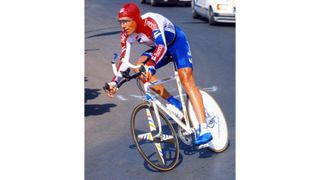
One of the early high-profile examples of this came in the 1989 Tour de France, when Greg LeMond famously added handlebar extensions to his bike, helping him to put 58 seconds into Laurent Fignon on the streets of Paris to win the 1989 Tour de France by eight seconds.
But that's not the first instance where riders aimed to cheat the wind in a time trial. Prior to LeMond, riders wore aero shells on their heads to improve their aerodynamics, as Bernard Hinault did in 1985, and used disc wheels to cut down on drag. The latter increased in popularity after the Olympic Games and Francesco Moser's successful hour record attempt in 1984. The disc wheel first appeared en masse at the Tour de France in 1986, and are a staple inclusion on a time trial bike today, but the smaller front wheel used by Moser was eventually outlawed by the UCI.
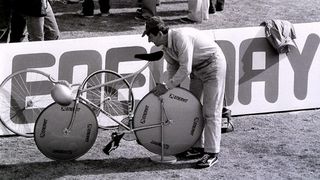
- Cycling Hour Record: History of hour record bikes
With the advent of carbon fibre technology, frames not only became lighter but they also took on aerodynamic shapes, meaning round tubes could be replaced by truncated teardrops and Kamm tail designs. Indurain's Pinarello was a radical example of this in 1995. Luckily, bike design has come a long way since 1997, when Bjarne Riis chucked his Pinarello into the verge after several technical problems in the final time trial of that year's Tour.
Get The Leadout Newsletter
The latest race content, interviews, features, reviews and expert buying guides, direct to your inbox!
Technology became more and more radical and, as a consequence, the UCI stepped in and put the brakes on secret innovations in 2000. It introduced new rules governing the design of time trial bikes to a "triangular form" and other restrictions.
Regulations have tightened further in recent years, putting various stipulations on rider position, while banning fairings and various other elements that the UCI has deemed to serve only aerodynamic purposes. Many of those decisions have profoundly impacted manufacturers. Aerocoach, for example, recently had to redesign a hub cap midway through the Giro d'Italia for Ineos Grenadiers when the UCI banned it after stage 1.
Not only improving the products themselves, brands and teams have also invested in improving their ability to test the performance of their equipment and riders. Wind tunnel testing is almost considered a prerequisite for a successful time trialist these days, CFD testing can use computing power to simulate real-world results, while supercomputers can iterate thousands of design concepts without needing to physically test a single one. Meanwhile, focus has also grown toward other factors that affect speed, such as drivetrain friction and rolling resistance.
As a result, certain theories that were once considered the gospel truth have recently been redefined or quashed altogether. For example, the idea that having a lower handlebar equals a faster rider has been replaced by the desire to balance a rider's CdA (Coefficient of drag x area) and their power output capability. Also, the preference for higher tyre pressures has been put to bed by a better understanding of tyre rolling resistance, and that lower pressures deform to road imperfections and maintain momentum as a result.
Time trial technology has come a very long way in the past 40 years, and this special time trial gallery tells the story of the design and development of the time trial bike, equipment and accessories throughout that time.

Thank you for reading 5 articles in the past 30 days*
Join now for unlimited access
Enjoy your first month for just £1 / $1 / €1
*Read any 5 articles for free in each 30-day period, this automatically resets
After your trial you will be billed £4.99 $7.99 €5.99 per month, cancel anytime. Or sign up for one year for just £49 $79 €59

Try your first month for just £1 / $1 / €1
Don't think, just dance: Alison Jackson's Paris-Roubaix Bike
Specialized teams to ditch Roubaix for Paris-Roubaix, brand predicts
Olympics: Mads Pedersen, Skjelmose, Mørkøv selected to Danish team for Paris
Most Popular
By Josh Ross April 02, 2024
By Laura Weislo April 01, 2024
By Fabian Cancellara April 01, 2024
By James Moultrie March 30, 2024
By Fabian Cancellara March 30, 2024
By Alasdair Fotheringham March 30, 2024
By Barry Ryan March 29, 2024
By Laura Weislo March 28, 2024
By Stephen Farrand March 28, 2024
By Barry Ryan March 28, 2024
What Happened to the
Roubaix bike.
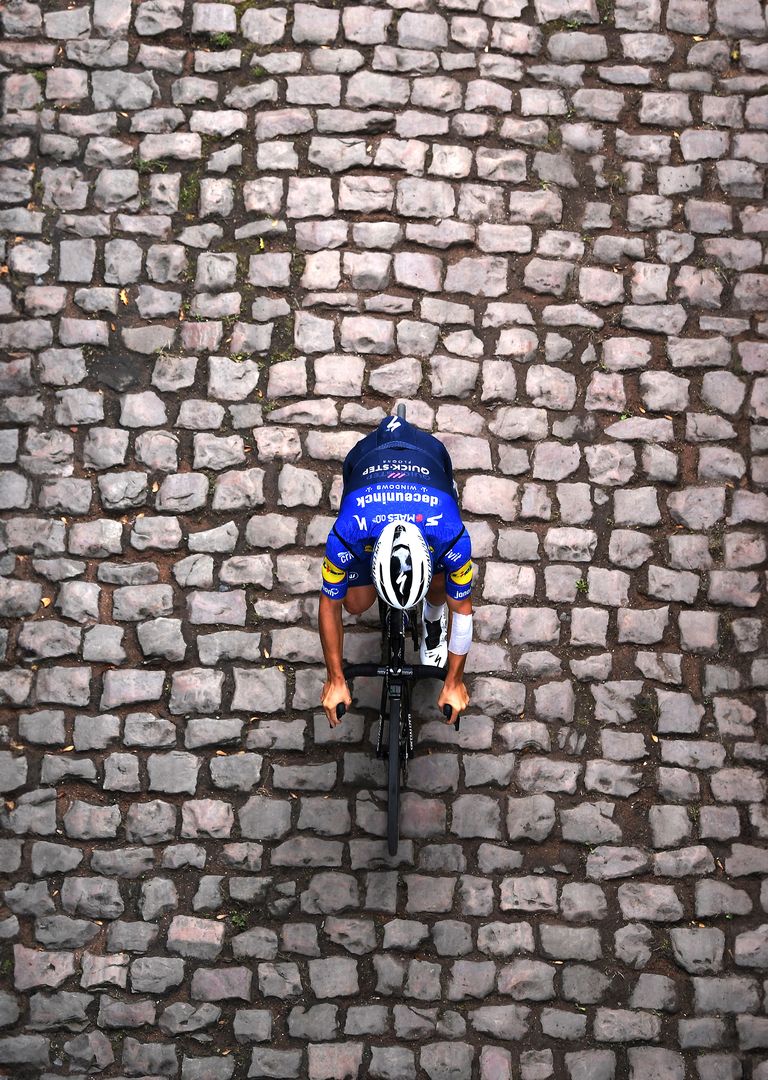
What Happened to the Roubaix Bike?
Why did a unique kind of race bike that evolved in response to a race notorious for destroying frames, cracking wheels, and crushing the ambitions of champions largely vanish?
Starting in Compiègne for the men and Denain for the women, with both races finishing on the velodrome in Roubaix, Paris-Roubaix ’s challenge—and the biggest draw for cycling fans—is the cobblestone roads of northern France .
Some of these roads (or sectors ) have been made famous by the race, including Trouée d’Arenberg , traditionally considered the first decisive point in the men’s race. Along with the fearsome duo of Mons-en-Pévèle and Carrefour de l’Arbre, these three sections are considered Roubaix’s most difficult.
The countless cobblestones (also called pavé) that make up these roads aren’t the typical brick pavers used in suburban driveways or to line city streets. For starters, at about 8 inches by 8 inches, the pavé are larger and bulkier. Years of weather have swept away the dirt that once smoothed over the gaps between stones, making for a jarring and uneven surface. It is perhaps the worst road surface imaginable for a road bike.
But it’s the cobbles that define Paris-Roubaix and have made it the best-known single-day bike race and perhaps the most famous cycling event outside the Tour de France . The pavé’s unique demands give Paris-Roubaix its character, but they also create a technical challenge for the racers and modern road-racing bicycles.
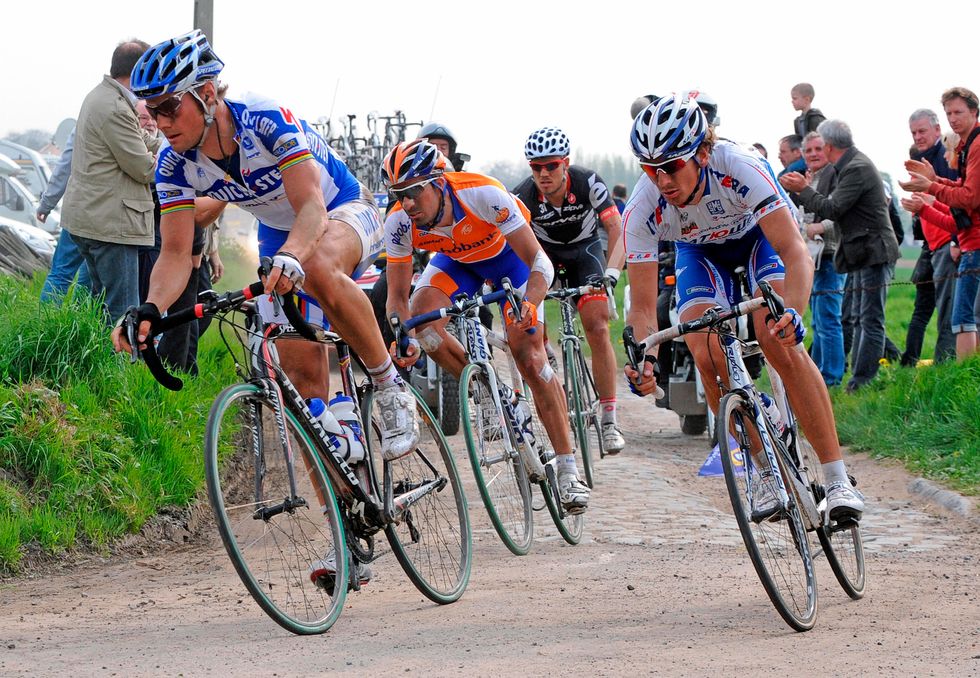
The special Roubaix bike is a relatively modern invention. As the late French racer and co-winner of Roubaix’s 1949 running, André Mahé told Procycling magazine in 2007: “[Back then], we rode the same bikes as the rest of the season. The frames moved all over the place. When I attacked, I could feel the bottom bracket swaying underneath me.”
Still, even in the early days, riders would experiment with their bicycles for Roubaix, looking for a more comfortable ride over the stones. Although aluminum rims replaced wooden ones in the 1930s, some racers would still compete with wooden rims at Roubaix into the next decade. Francesco Moser of Italy, a three-time Paris-Roubaix winner, is said to have wrapped his handlebar with foam strips in the 1970s. American cycling legend Greg LeMond was among the first racers to use a RockShox suspension fork at Roubaix in the early 1990s—a product LeMond’s French teammate Gilbert Duclos-Lassalle used for his 1992 and 1993 Roubaix wins.
.css-dd784d:before{width:100%;-webkit-filter:invert(32%) sepia(81%) saturate(5886%) hue-rotate(5deg) brightness(105%) contrast(104%);filter:invert(32%) sepia(81%) saturate(5886%) hue-rotate(5deg) brightness(105%) contrast(104%);height:2.1875rem;margin:0 auto;content:'';display:block;margin-bottom:0.25rem;-webkit-background-size:2.1875rem;background-size:2.1875rem;background-repeat:no-repeat;-webkit-background-position:center;background-position:center;}.loaded .css-dd784d:before{background-image:url(/_assets/design-tokens/bicycling/static/images/quote.53198c0.svg);} .css-1hihk6d{font-family:Velo,Velo-fallback,Velo-roboto,Velo-local,Georgia,Serif;font-size:1.625rem;line-height:1.2;margin:0rem;margin-left:0;text-align:center;}@media(max-width: 48rem){.css-1hihk6d{font-size:1.5rem;line-height:1;}}@media(min-width: 40.625rem){.css-1hihk6d{font-size:1.6875rem;line-height:1.1;}}@media(min-width: 61.25rem){.css-1hihk6d{font-size:1.875rem;line-height:1.1;}}@media(min-width: 64rem){.css-1hihk6d{font-size:2.375rem;line-height:1.2;}}.css-1hihk6d b,.css-1hihk6d strong{font-family:inherit;font-weight:bold;}.css-1hihk6d em,.css-1hihk6d i{font-style:italic;font-family:inherit;} [Back then], we rode the same bikes as the rest of the season. The frames moved all over the place. When I attacked, I could feel the bottom bracket swaying underneath me.
Instead of technological tricks, some riders experimented with the bicycle’s geometry. Into the 2000s, many racers (especially the sport’s top names) used custom-built frames for Roubaix with modifications that provided more stability and added comfort. In 2005, Belgian Tom Boonen used a custom Time bicycle with a longer wheelbase to capture his first of four Paris-Roubaix wins.
Specialized introduced its Roubaix model in 2004, considered the first commercially available “endurance road bike.” The Roubaix implemented many of the features of the custom bicycles raced at its namesake event: slacker and more upright geometry, a frame that accommodated wider tires, and additional flex for a smoother ride.
These modifications and frame geometries not only helped sponsored professionals tackle the cobblestones of Paris-Roubaix, they were features sought out by many riders who never considered themselves racers. Cyclists needed bikes to ride over many different road surfaces, not just smooth asphalt—and the all-road or endurance bike came to life. Competing brands soon followed Specialized and launched road bikes with similar features. Cannondale’s Synapse , Trek’s Domane , and Giant’s Defy are all examples of endurance-category bikes with Paris-Roubaix roots.
Peter Sagan raced the 2014 Paris-Roubaix on this Cannondale Synapse.
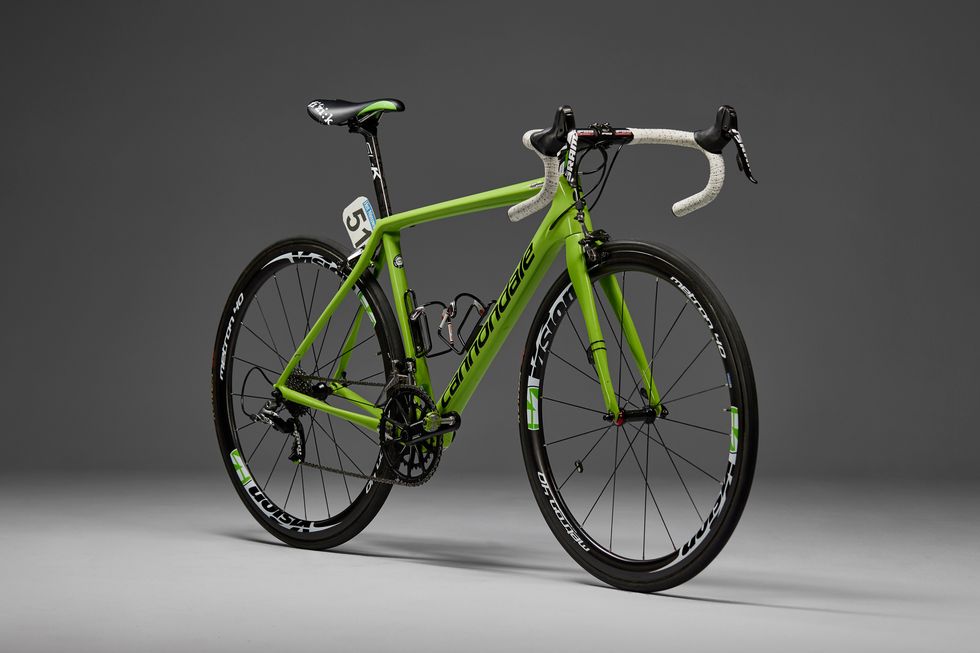
The mid-2000s marked another significant shift for Roubaix race bikes. After the wild suspension experiments of the ’90s and the custom frames that came after, the widespread use of endurance bikes mostly returned the special Roubaix bike’s form to a traditional bicycle silhouette. Instead of over-the-top technological solutions, manufacturers went all-in on maximizing carbon fiber’s material capabilities. These bikes—with a combination of robust wheels, tweaked geometries, a set of top-mounted brake levers, larger-volume tires with top-secret pressures, and double-wrapped handlebars—were the machines of choice for a generation of Roubaix racers.
Fast-forward to 2023 and these unique bikes for Paris-Roubaix are gone. Mathieu van der Poel won the men’s race on a Canyon Aeroad; except for wider tires and gearing, the bike was virtually identical to the Aeroad his Belgian teammate Jasper Philipsen used to win the green jersey in the Tour de France four months later. Similarly, in the women’s race, Canadian Alison Jackson won on an unremarkable (by Roubaix standards) Cannondale SuperSix Evo—the same bike she raced for the entire 2023 season. In less than 15 years, the Roubaix bike simply vanished from the race that had shaped it for a hundred years.
T he disappearance of the Roubaix bike did not happen overnight. In 2009, Tom Boonen won his third Paris-Roubaix on a Specialized Roubaix featuring custom geometry to accommodate Boonen’s preference for a very long and low fit. This victory marked the first step in the disappearance of the Roubaix bike; it was the last time the race winner used traditional box-section aluminum rims. The following year, Boonen’s rival, Fabian Cancellara, was the first rider to win Roubaix on a carbon-fiber wheelset, Zipp’s 303.
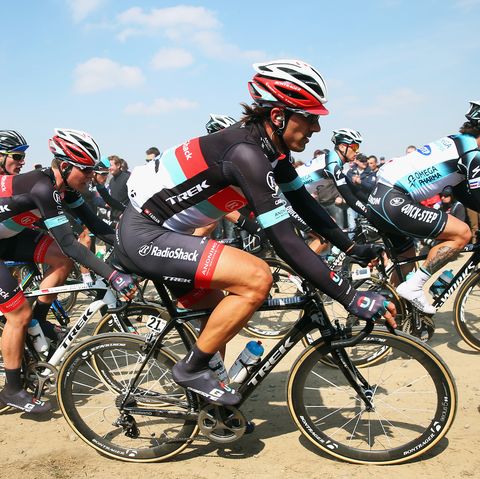
The next domino fell in 2015 when Germany’s John Degenkolb became the first rider to win using electronic shifting. Then, in 2016, another bell of doom rang for the Roubaix bike when Australian Matt Hayman won aboard a stock aero bike. At the time, racers considered aero bikes too harsh for all but sprint stages in a Grand Tour, much less a race like Roubaix. Three years later, France’s Philip Gilbert became the first rider to win Paris-Roubaix using a disc-brake-equipped bike.
The 2021 edition of Paris-Roubaix saw Sonny Colbrelli of Italy become the first winner to use tubeless tires . Colbrelli was also riding his team’s aero bike, the Merida Reacto, equipped with disc brakes and electronic shifting. In other words, it was the first time in the modern era that Roubaix—the race long considered one of the harshest technological challenges for cycling equipment—was won on a bike almost identical to the ones used for races contested over normal roads.
So what happened? Why did a category of bikes that evolved in response to a race notorious for destroying frames, cracking wheels, and crushing the ambitions of champions just go away? I contacted the product teams at Trek, Specialized, and Cannondale to find out. All three supply equipment to men’s and women’s teams racing Paris-Roubaix this year. They’ve also provided bikes to past Paris-Roubaix winners over the years, some on many occasions.
The brands all pointed to the adoption of disc brakes as the fundamental shift in tech that gave road bikes the versatility and capability to handle the demands of Roubaix. Disc brakes removed space constraints (usually 28mm maximum width) of traditional rim-brake calipers and allowed frame engineers to design bikes with sufficient clearance for higher-volume tires. Even road models purely developed for on-pavement performance and speed—like Trek’s Madone , Specialized’s Tarmac , Cervélo’s S5 , and Cannondale’s SuperSix Evo —can now safely fit tires as large as 32mm.
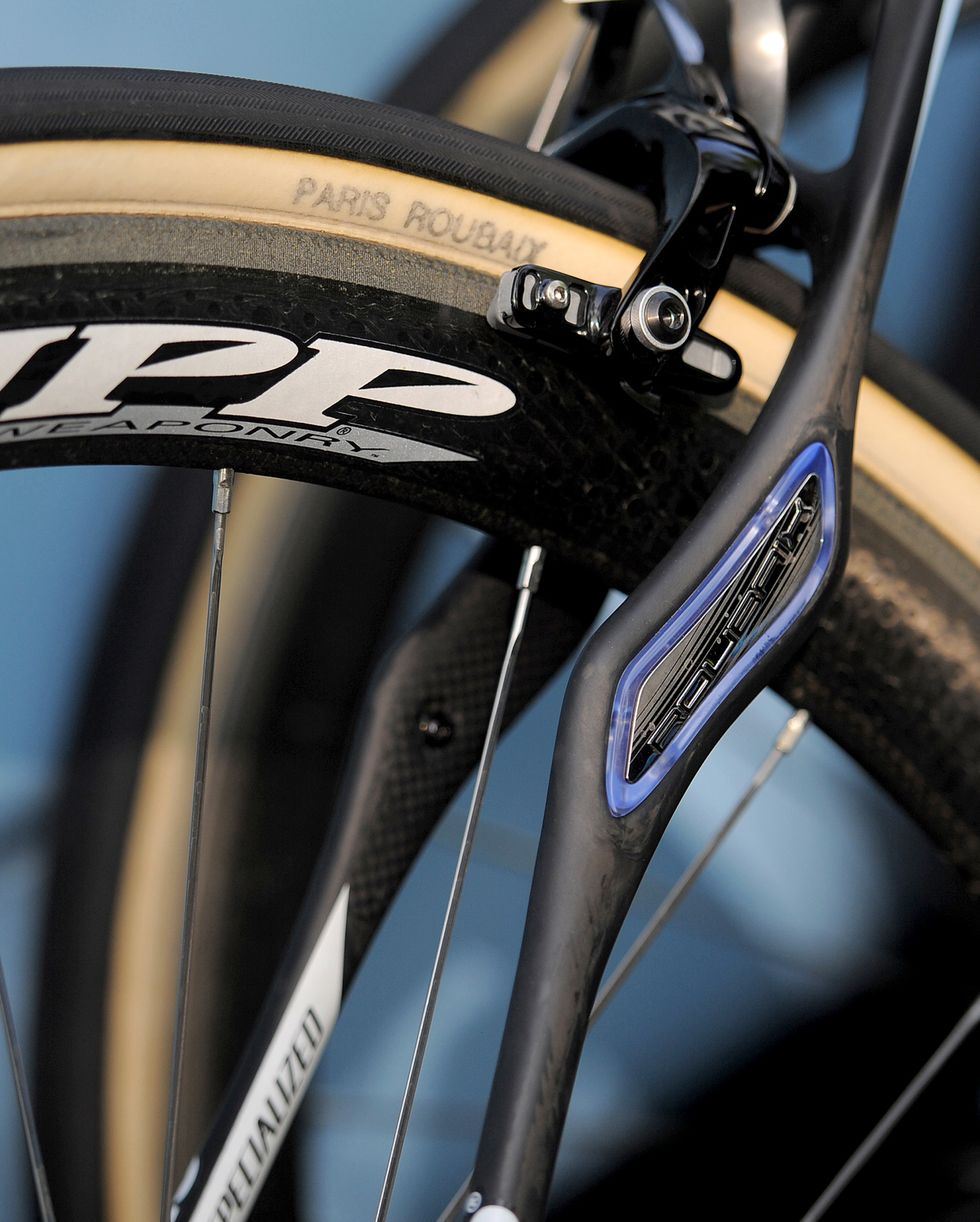
The added clearance enables increasingly wide rims and tires on road race bikes. Only five years ago, riders contested Roubaix on 28mm-wide tires (riders were on 23s or sometimes 25s for most other races on the calendar). But in 2023, the narrowest tires of podium-finishing riders at Roubaix were labeled 30mm, with van der Poel riding to victory on 32s . It’s hard to measure the comfort improvement provided by the increase in tire volume.
But brands cited larger tires as the number one reason for the disappearance of more traditional Roubaix tricks like double-wrapped handlebars. Jonathan Geran, Global Director of Sports Marketing for Cannondale, explained that “tire clearance on the bikes has been a game changer. The riders love that they can use their normal bikes. They don’t have to deal with any fit issues. And it’s much easier for the mechanics, as well.”
Alison Jackson won in 2023 on this nearly stock Cannondale SuperSix Evo.
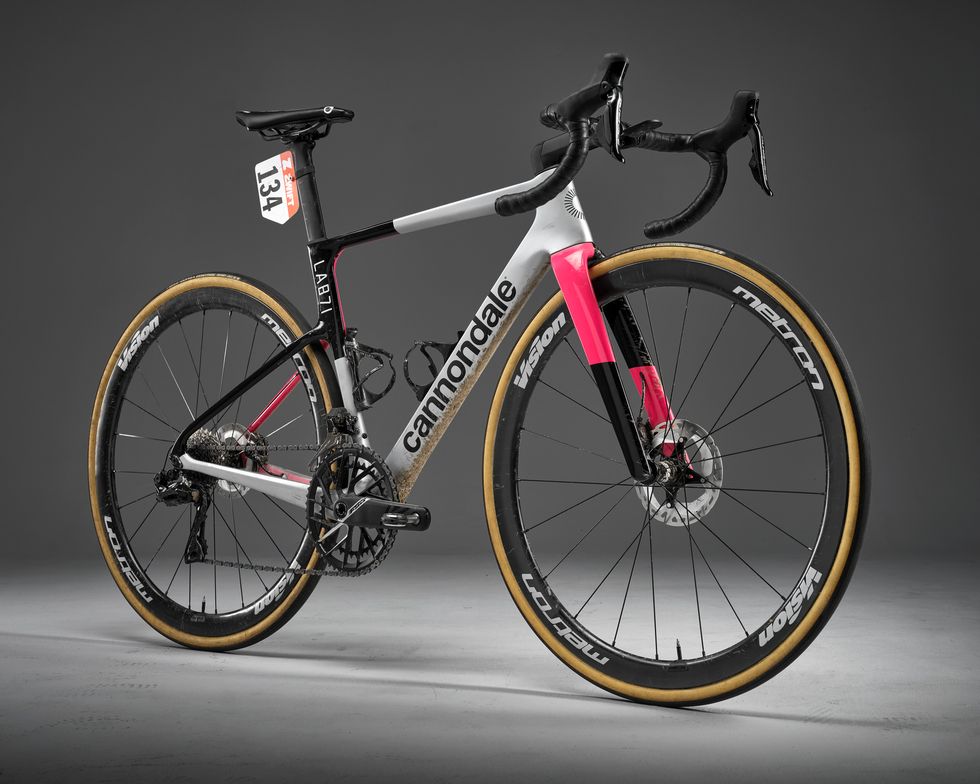
Another factor in the pivot away from Roubaix-specific bikes is how teams and riders race Paris-Roubaix. “There would be an early break, and the peloton would mosey along for the first 100km or then catch the break shortly after Arenberg,” noted Trek’s Director of Road Bikes, Jordan Roessingh. “Now they’re basically racing from the gun with splits and potential race-winning moves from favorites happening before they even get to Arenberg.”
It’s hard to pinpoint exactly why the men’s race now unfolds more aggressively, but there are some likely reasons. Since 2016, the men’s race has been broadcast live from start to finish, tempting riders to try early attacks to gain exposure for their teams. After COVID-19 canceled the 2020 running, the race’s pace only increased. The 2022 and 2023 editions were the two fastest-recorded Paris-Roubaix races, with van der Poel’s average speed in 2023 a ludicrous 29.1 mph.
The steadily increasing pace combined with more intense racing early in the race (where there are no cobbles) means that aerodynamics plays a more important role in rider performance than in years past. The speed has caused teams to reach for aerodynamically optimized (or full-on aero) bikes from their equipment sponsors versus more comfortable endurance models.
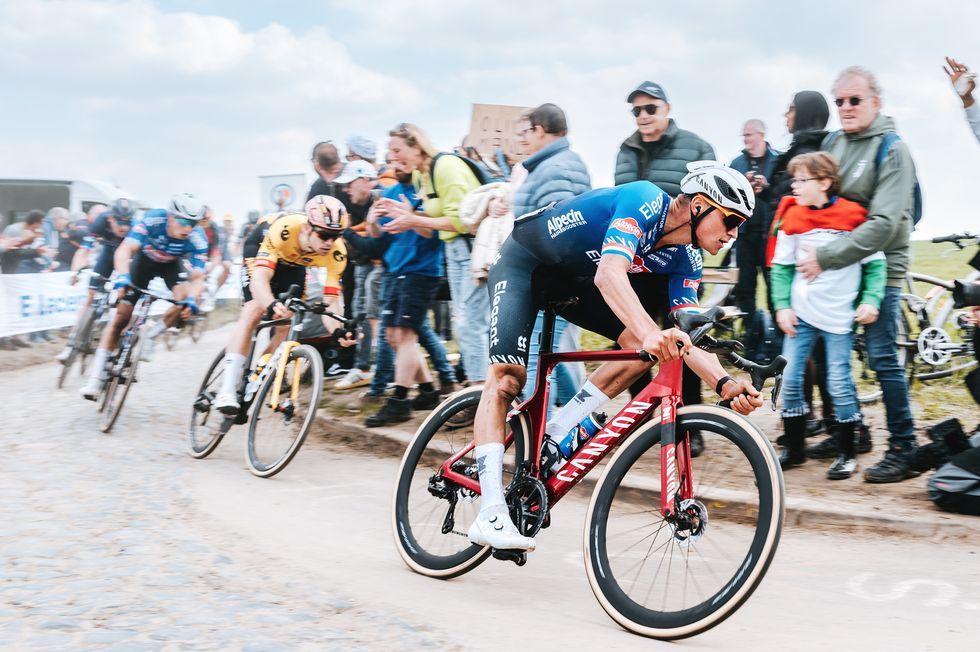
Trek’s men’s team chose the aero-focused Madone (which can clear a 32mm tire) despite having access to the Domane, Trek’s compliance-focused road model. Roessingh said this was entirely due to the team doing the math on how much more efficient the Madone would be at that speed over such a long distance.
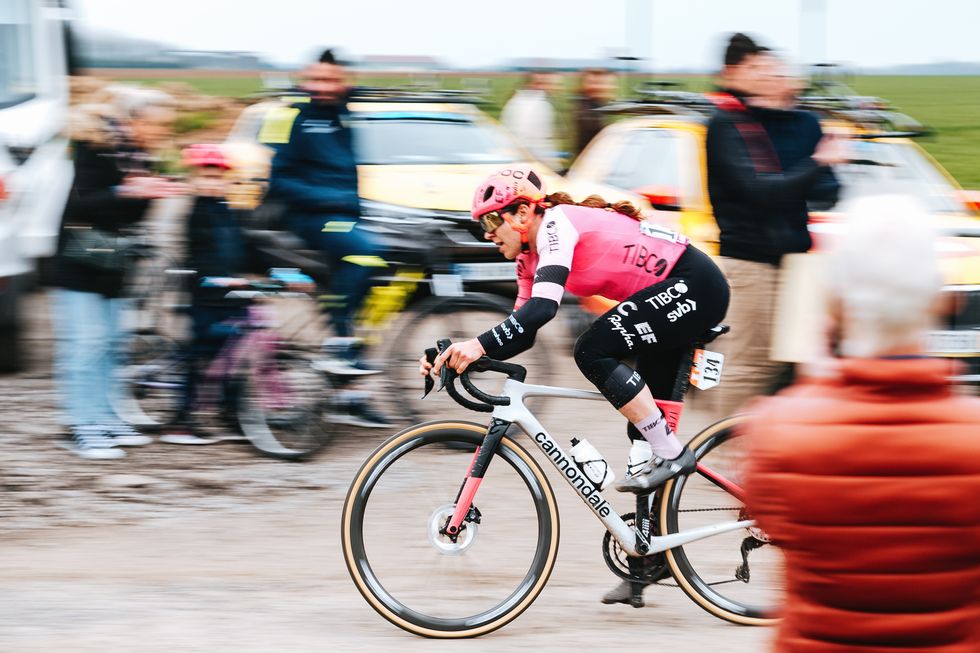
Interestingly, the Trek women’s team opted for the Domane. Roessingh explained that the women’s race is 111km (69 miles) shorter than the men’s version. “Because the women hit the stones earlier in their race, and the sectors make up a larger percentage of the kilometers they race, the women’s team opted for the Domane,” he said. “However, we could see this changing in the future if the women’s race continues to evolve similarly to the men’s,” he added.
Meanwhile, most athletes on the Specialized-sponsored Soudal Quick-Step and Bora-Hansgrohe squads opted for the brand’s Roubaix endurance model for the 2023 race. Stewart Thompson, Road and Gravel Category Leader for Specialized explained that the Tarmac SL7 (the race bike option for Specialized’s teams in ’23) was simply too stiff, and most of the riders preferred the comfort provided by the Roubaix platform despite the aerodynamic penalty.
However, with the dynamics of the Paris-Roubaix changing and Specialized’s new Tarmac model offering more tire clearance and rider comfort, the era of the Roubaix racing Paris-Roubaix might be over. “We will likely see more riders switch from the Roubaix to the Tarmac SL8,” Thompson conceded.
The days of riders racing Paris-Roubaix on special equipment are likely behind us, but so are the days of high-end race bikes ignoring comfort as an important metric for rider performance. For its part, Specialized is not renaming the Roubaix anytime soon, even if the bike will likely see far less use in its namesake race. “The current version of the Roubaix is more capable than ever,” said Thompson. “We see the Roubaix as the gravel racers’ road bike or perhaps the perfect bike to tackle lighter gravel events like Steamboat Gravel.”
As stock race bikes became capable enough to tackle Paris-Roubaix, they also became better suited to the demands of everyday riding—and this benefits all road cyclists, not only professional racers. A set of 32mm tires can transform an unforgiving race machine into a comfortable, all-day-riding bike. As someone who loves both nerding out on bike tech and the classic look of box-section 32-spoke wheels on a modern race bike, I am genuinely sad that the era of the special race-day Roubaix bike is behind us. But it’s a testament to how great modern bikes have become when the only thing needed to transform a bike from a Grand Tour racer to a cobble-ready machine is a simple tire swap.
Test Editor Dan Chabanov got his start in cycling as a New York City bike messenger but quickly found his way into road and cyclocross racing, competing in professional cyclocross races from 2009 to 2019 and winning a Master’s National Championship title in 2018. Prior to joining Bicycling in 2021, Dan worked as part of the race organization for the Red Hook Crit, as a coach with EnduranceWERX, as well as a freelance writer and photographer.

.css-1t6om3g:before{width:1.75rem;height:1.75rem;margin:0 0.625rem -0.125rem 0;content:'';display:inline-block;-webkit-background-size:1.25rem;background-size:1.25rem;background-color:#F8D811;color:#000;background-repeat:no-repeat;-webkit-background-position:center;background-position:center;}.loaded .css-1t6om3g:before{background-image:url(/_assets/design-tokens/bicycling/static/images/chevron-design-element.c42d609.svg);} Member Exclusive
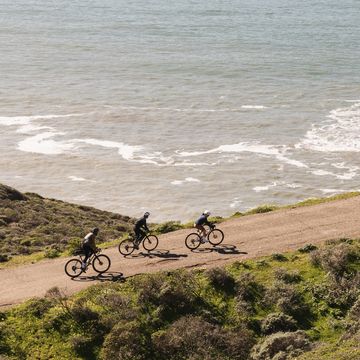
I Drank a Gallon of Water a Day for a Month
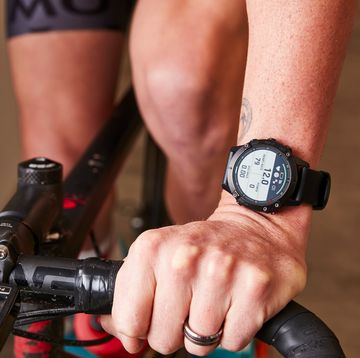
What to Know About Cycling and A Normal Heart Rate
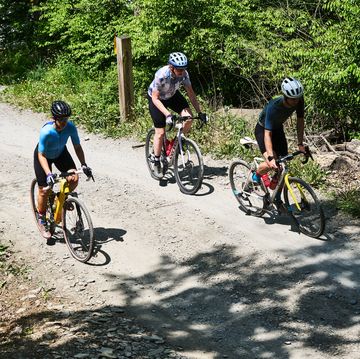
How to Plan a Century Ride Route

Yoga May Ease Chronic Lower Back Pain
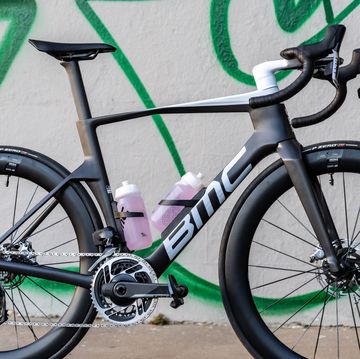
Reviewed: BMC‘s Fast and Unique Teammachine R 01
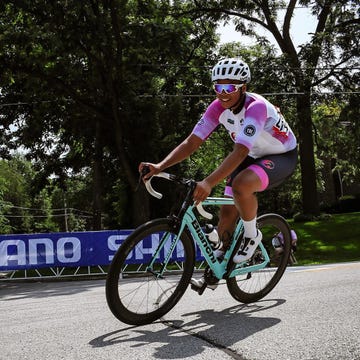
She’s on a Mission to Bring Cycling to Kids
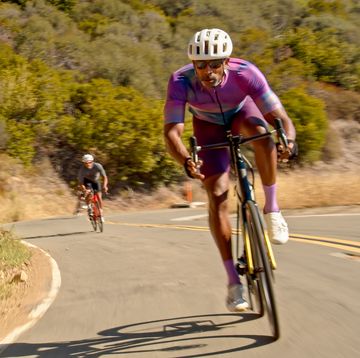
A Guide to HIIT Workouts for Older Adults
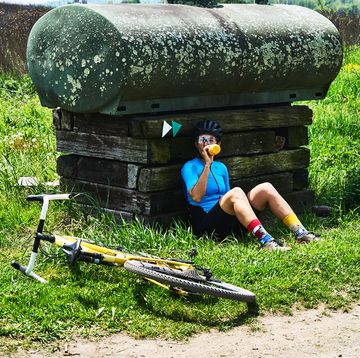
Will Salt Tablets Improve Your Ride?
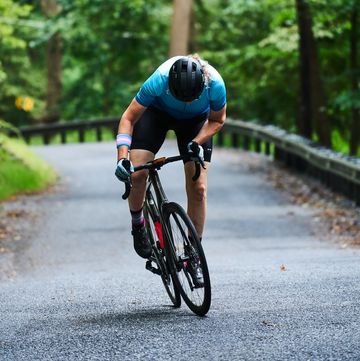
6 Threshold Workouts for Cyclists
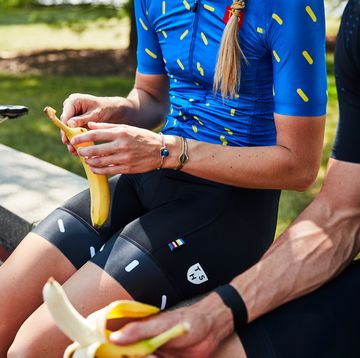
10 Foods That Help You Beat Bloat
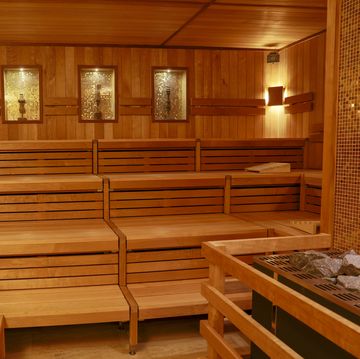
Can Sitting in a Sauna Improve Your Performance?
- off.road.cc
- Dealclincher
- Fantasy Cycling
Support road.cc
Like this site? Help us to make it better.
- Sportive and endurance bikes
- Gravel and adventure bikes
- Urban and hybrid bikes
- Touring bikes
- Cyclocross bikes
- Electric bikes
- Folding bikes
- Fixed & singlespeed bikes
- Children's bikes
- Time trial bikes
- Accessories - misc
- Computer mounts
- Bike bags & cases
- Bottle cages
- Child seats
- Lights - front
- Lights - rear
- Lights - sets
- Pumps & CO2 inflators
- Puncture kits
- Reflectives
- Smart watches
- Stands and racks
- Arm & leg warmers
- Base layers
- Gloves - full finger
- Gloves - mitts
- Jerseys - casual
- Jerseys - long sleeve
- Jerseys - short sleeve
- Shorts & 3/4s
- Tights & longs
- Bar tape & grips
- Bottom brackets
- Brake & gear cables
- Brake & STI levers
- Brake pads & spares
- Cassettes & freewheels
- Chainsets & chainrings
- Derailleurs - front
- Derailleurs - rear
- Gear levers & shifters
- Handlebars & extensions
- Inner tubes
- Quick releases & skewers
- Energy & recovery bars
- Energy & recovery drinks
- Energy & recovery gels
- Heart rate monitors
- Hydration products
- Hydration systems
- Indoor trainers
- Power measurement
- Skincare & embrocation
- Training - misc
- Cleaning products
- Lubrication
- Tools - multitools
- Tools - Portable
- Tools - workshop
- Books, Maps & DVDs
- Camping and outdoor equipment
- Gifts & misc
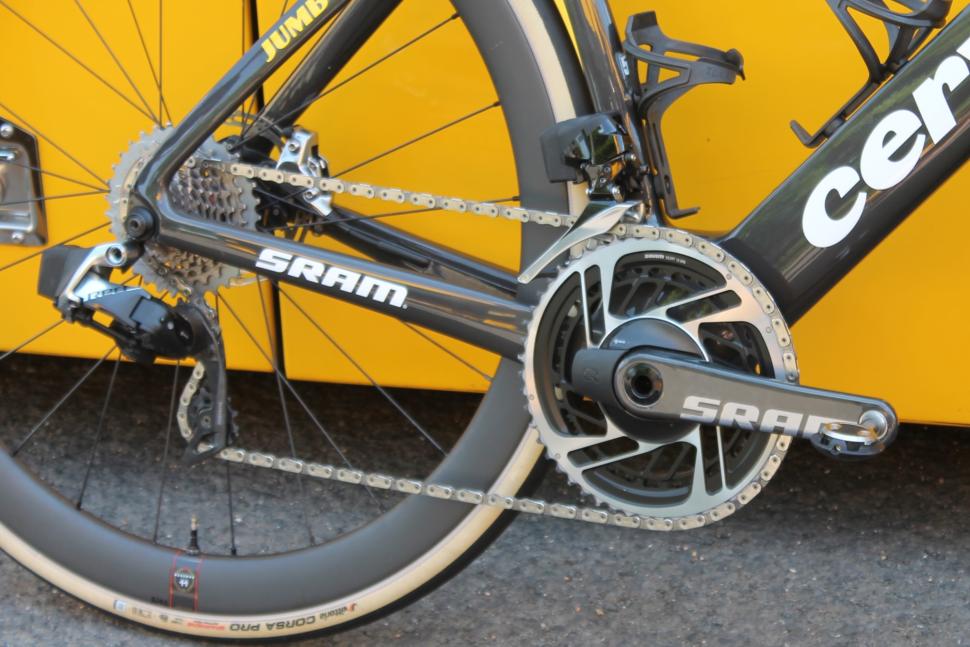
All the gear? Check out the gearing choices of the pros at the Tour de France
First Published Jul 5, 2023
Gearing choice in the Tour used to be easy, a standard chainset was the only way to go and cassette choices were limited at best. However, these days, with 12-speed options from Shimano, SRAM and Campagnolo all represented in the peloton, there's more choice than ever. We've had a nosey at the pros' bikes to see what they're using this year.
> Suffering on the hills? Find out how to get lower gears to make climbing easier
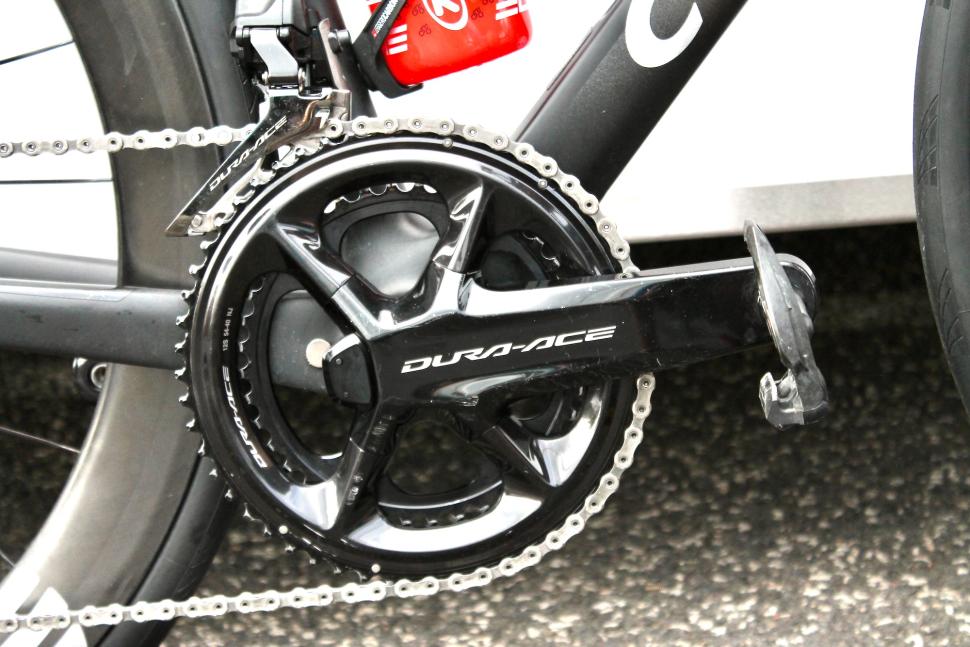
The peloton's gearing choices differ from many consumer bikes simply because the riders race at very high speeds and therefore need bigger gears to keep a comfortable cadence. Whereas most bikes you can buy come specced with 50/34t compact or 52/36t chainset, (or 48/35t and 46/33t on SRAM 12-speed groupsets paired with 10-tooth start cassettes) you'll typically find the peloton powering along on chainsets with larger chainrings.
Check out this article for a primer on the basics of gears and all the lingo
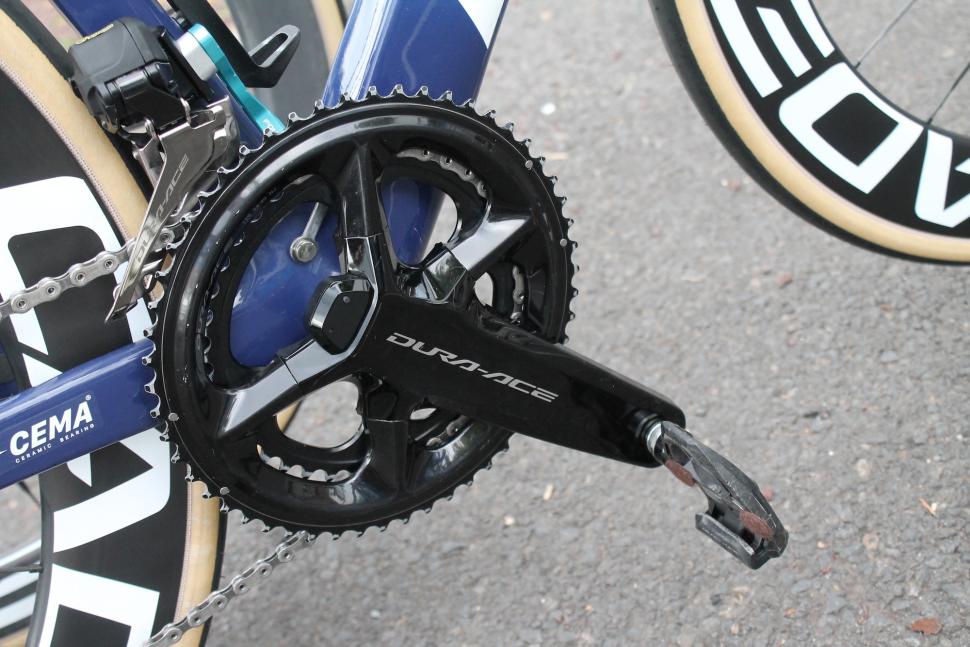
The most common chainset size in the pro peloton on normal stages is 54/40t. That's a standard Shimano Dura-Ace option, and most teams racing in the Tour de France use this groupset. This is the chainset from Dylan Groenewegen's Giant Propel (above), for example.
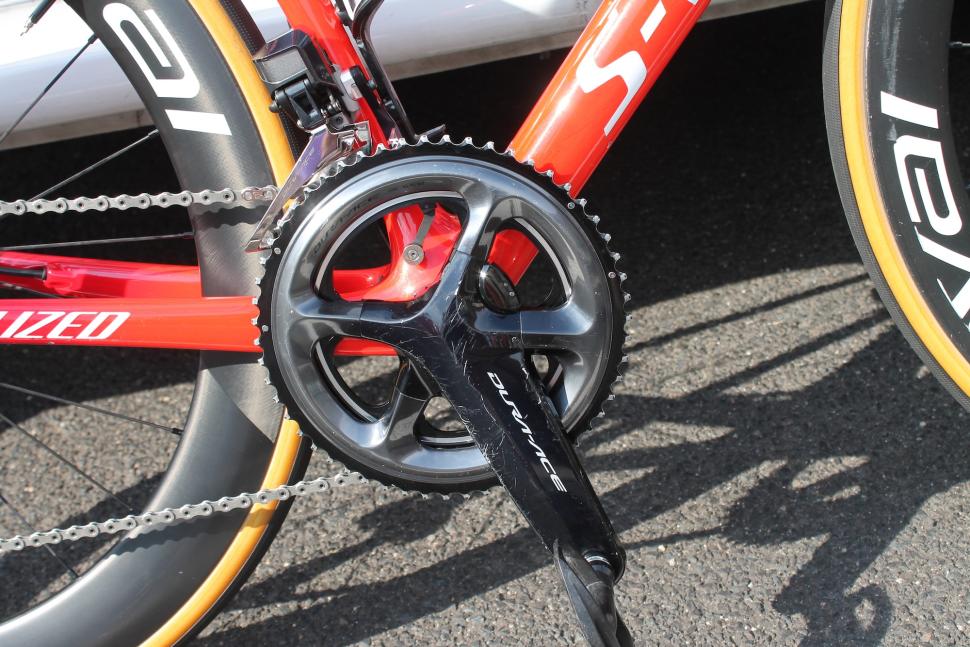
There are plenty of other choices, though. We spotted Edvald Boasson Hagen of Team TotalEnergies using this 55/42t chainset (above) which comes from the days when Shimano Dura-Ace was an 11-speed system.
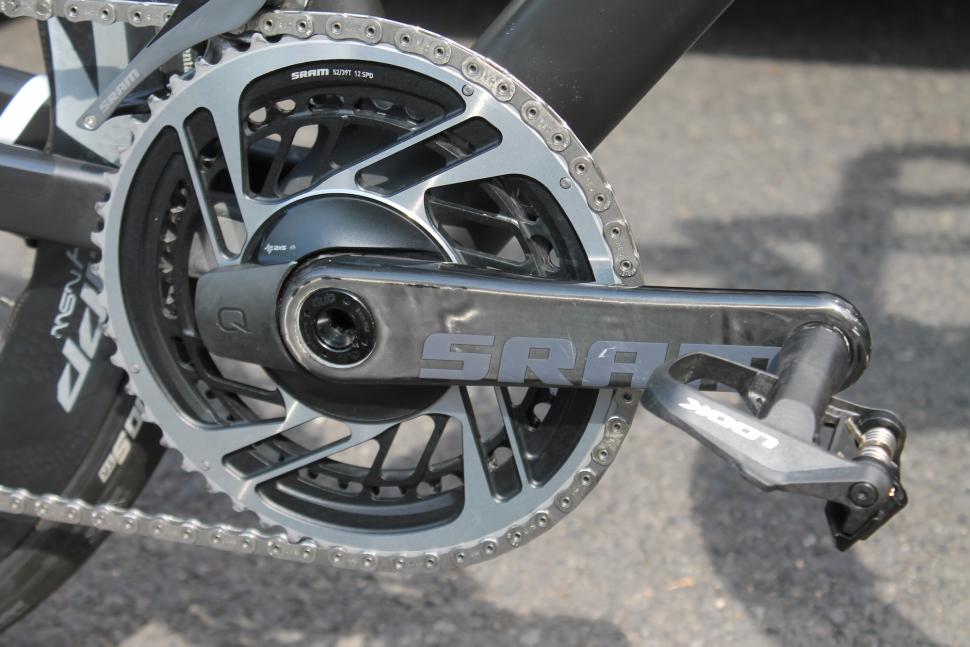
Enric Mas, who had to withdraw from this year's Tour after sustaining an injury during the first stage, was using a 52/39t SRAM chainset (above).
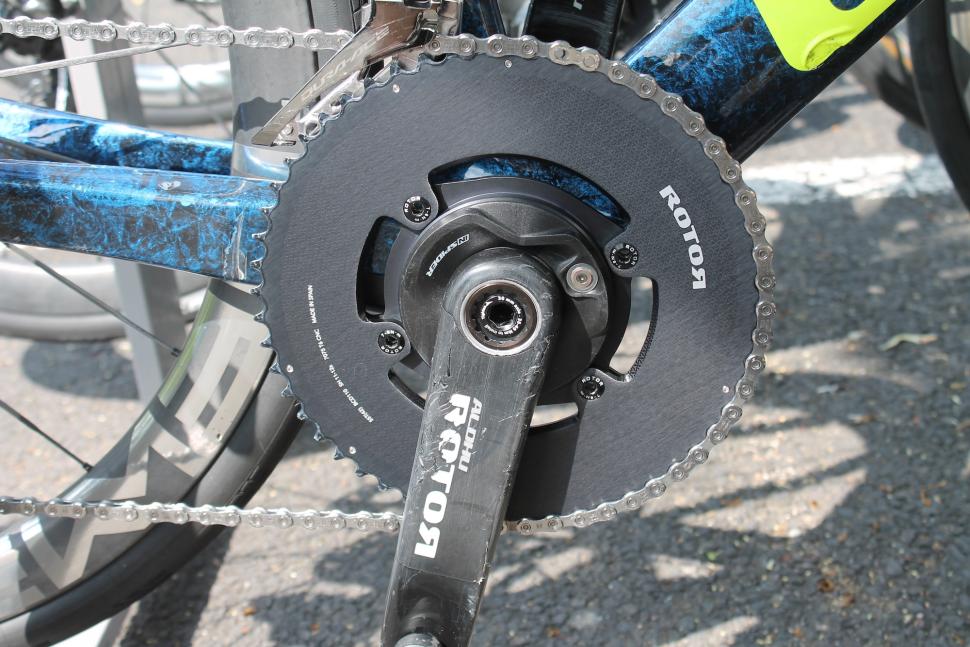
Intermarché - Circus - Wanty's Georg Zimmermann uses this 55/42T Rotor setup on his Cube Litening Aero.
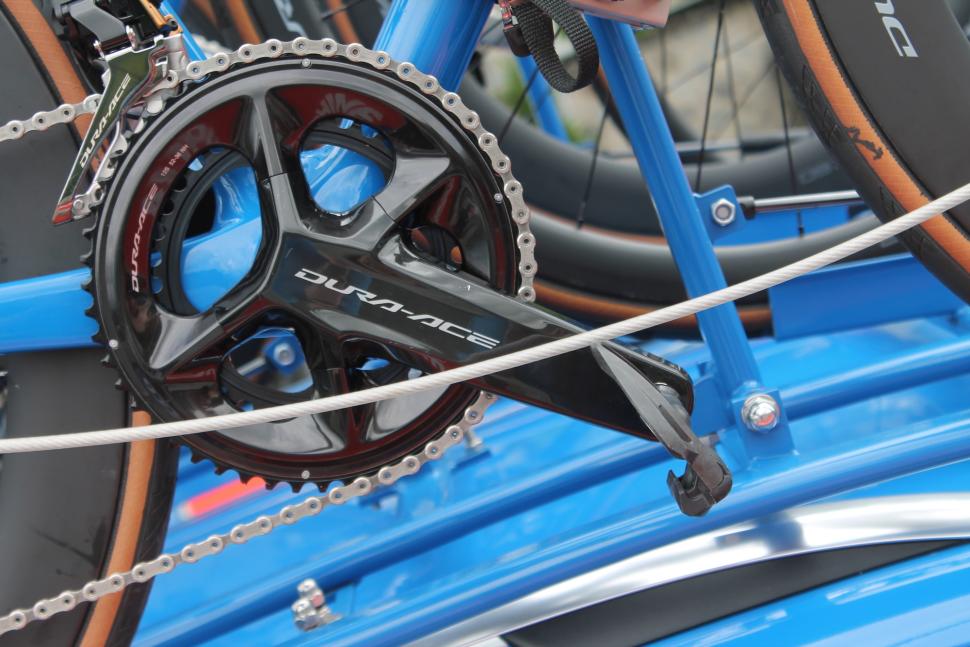
The Shimano neutral service bikes are fitted with 52/36T chainsets that give a broad spread of gear options for any rider who is unfortunate enough to require one.
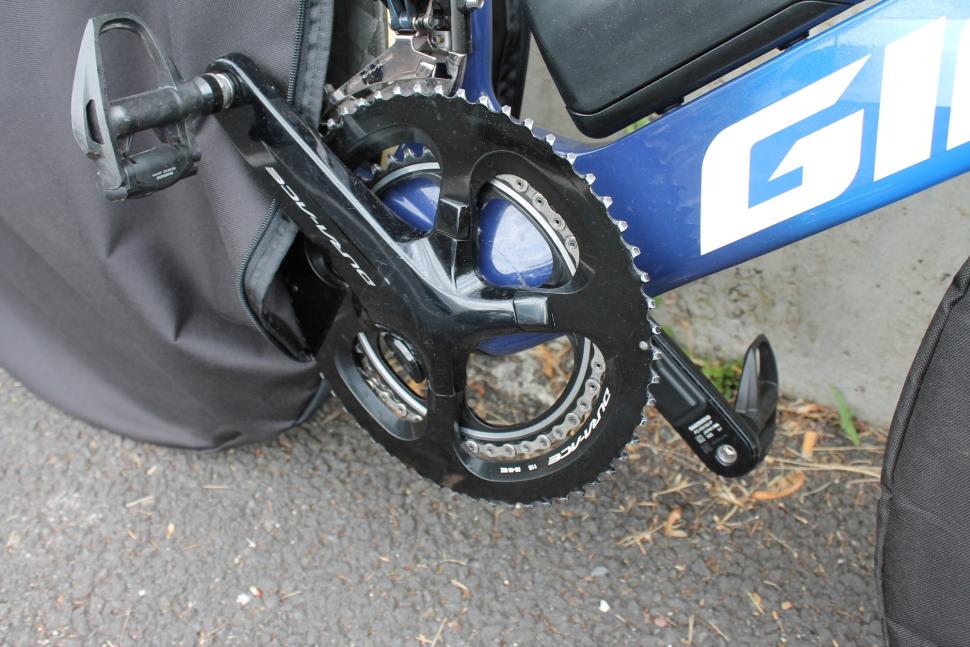
You'll find larger chainrings during the time-trial stages when riders are consistently moving at high speeds. For example, this (above) is Luke Durbridge's TT bike with 58/46t chainrings fitted.
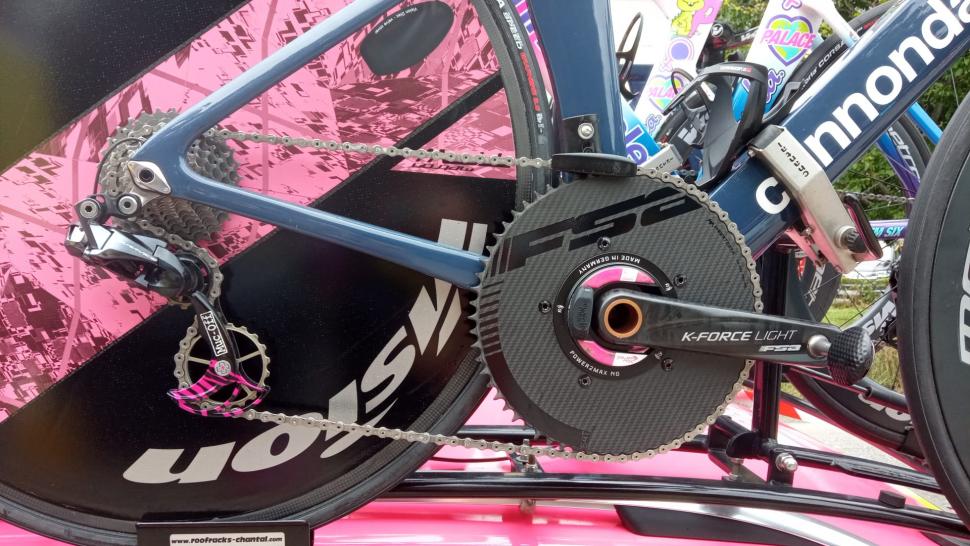
During last year's Tour de France, Stefan Bissegger was spotted using this 64 tooth chainring that is not available to the public.
Cassettes have varied much more over the years, largely as a consequence of the steady increase in gears, from the old days of 5-speed and 6-speed to the 12-speed setups that are currently used in the pro peloton.
As the number of gears has increased, so too has the range, with larger cassettes increasingly common, partly as a response to race routes that are getting ever harder as race organisers attempt to find even more cruelly savage mountains to send racers up.
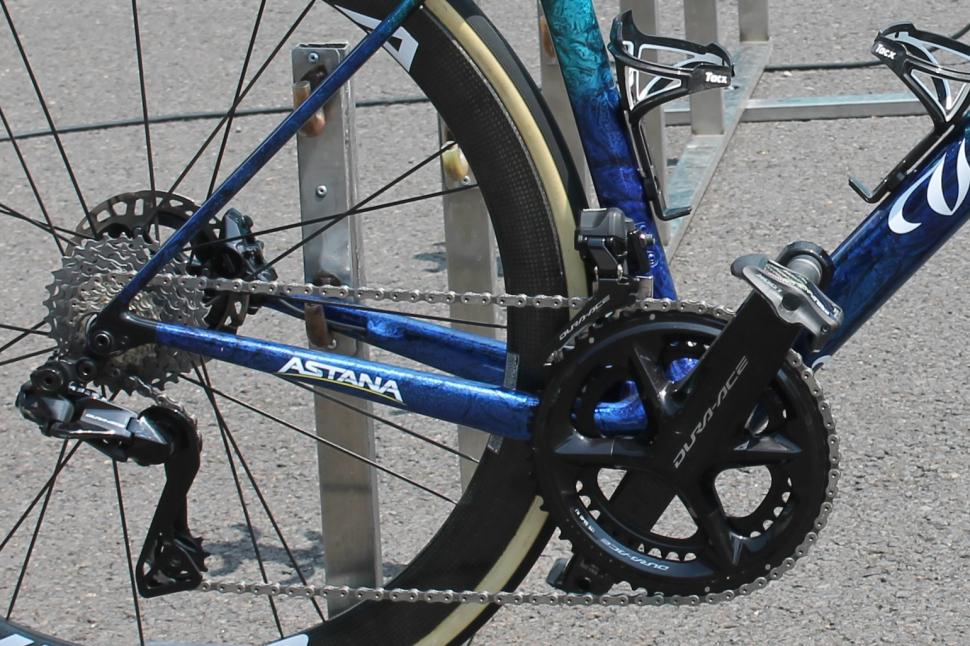
The increase in the number of gears also means that riders can cover those larger ranges with smaller jumps between sprocket sizes. This helps them keep a more even cadence as they move across the cassette.
When we visited the Critérium du Dauphiné recently, loads of pro bikes were fiitted with 11-30t and 11-32t cassettes. These are positively humongous compared with a few decades ago when you'd get an 11-21t cassette and, if you were lucky, 11-23t for the mountains.
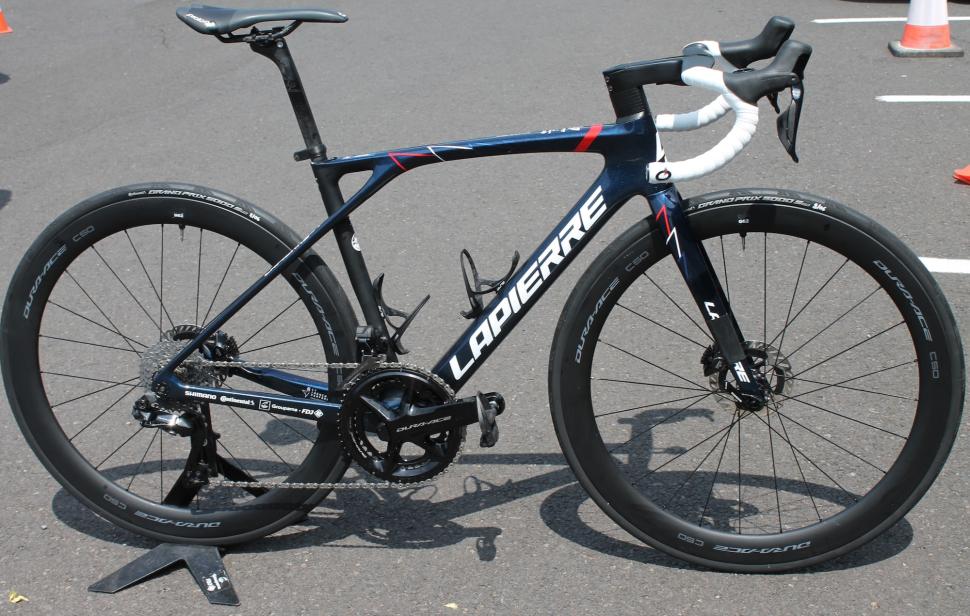
We saw quite a lot of 11-34t cassettes too, and that surprised us. David Gaudu's Lapierre Xelius SL (above), for example, was fitted with a 54/40t chainset and an 11-34t cassette. With a 40t inner chainring now more common than a 39t, it looks like more riders want a larger cassette to compensate on hillier roads.
Campagnolo has just updated its Super Record EPS groupset and now the cassettes come with a 10t smallest sprocket. The standard options are 10-25t, 10-27t and 10-29t.
> Campagnolo ditches iconic thumb shifter and goes wireless with new Super Record Wireless electronic groupset... and it'll cost you £4.5k
The largest sprockets on those cassettes might seem pretty small but at the same time Campagnolo has altered the size of its chainsets to compensate. They're available in 50/34t, 48/32t and 45x29t options.
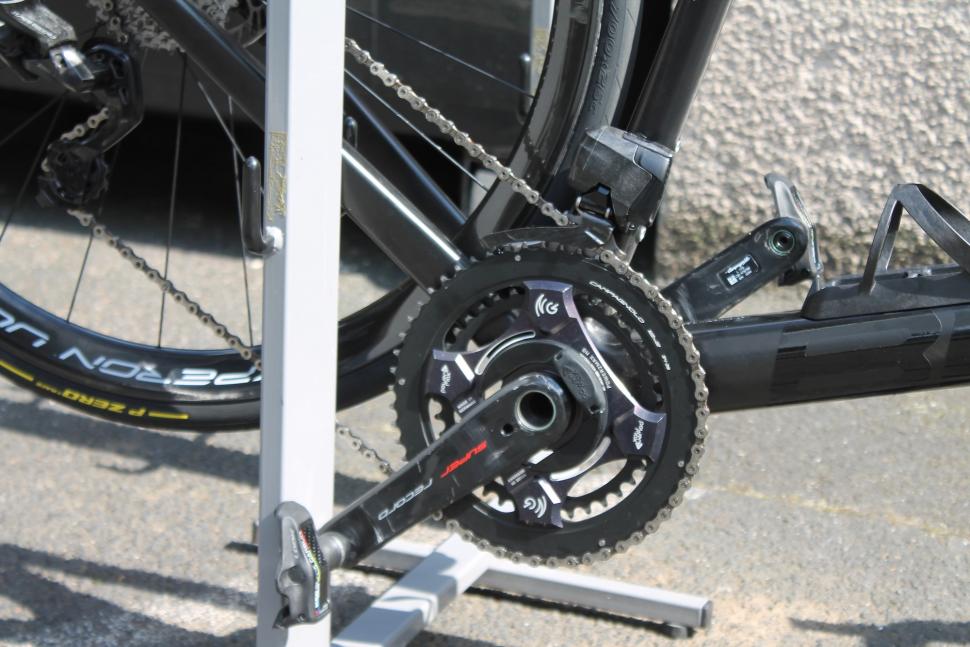
That said, we saw Ben O'Connor's BMC Teammachine (above) at the Dauphine fitted with new Campagnolo Super Record EPS shifters and derailleurs, with a 54/39t chainset and a larger cassette than any of those listed above.
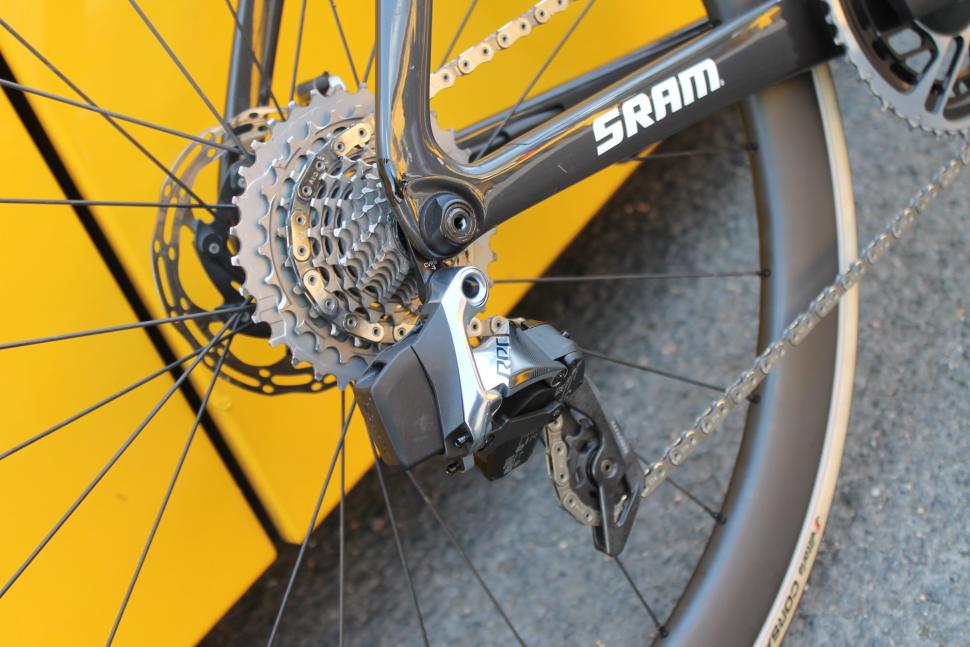
SRAM offers a 10-33t cassette for Red eTap AXS, and that's what we saw fitted to one of Jonas Vingegaard's bikes ahead of the Dauphiné, matched to a 52/39t chainset.
> Which chainset is right for you?
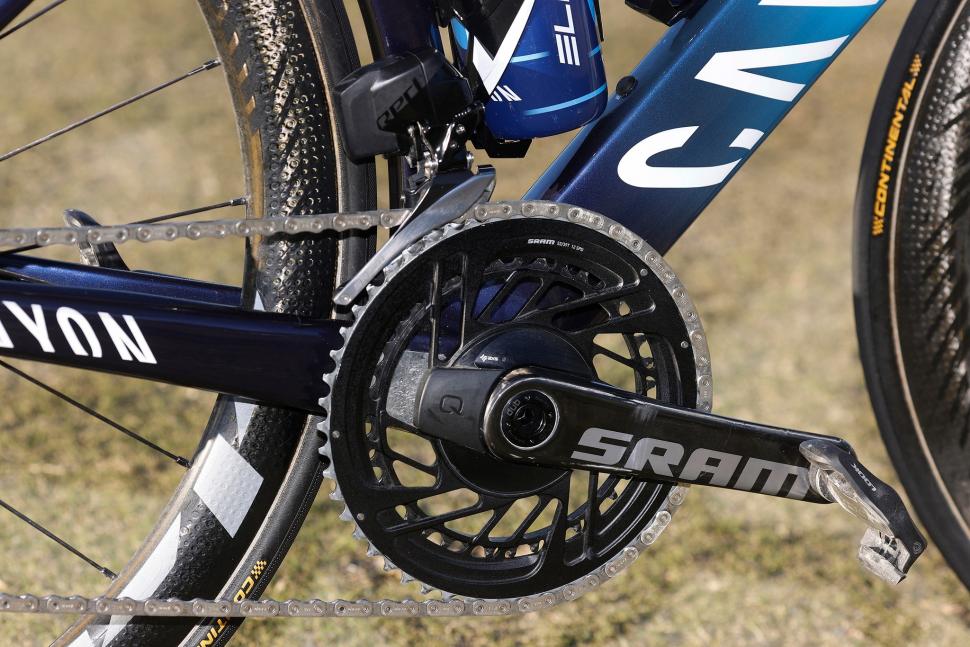
The use of that 10t sprocket means that SRAM chainsets don't need to be as large as Shimano's to achieve the same gear ratios (Shimano's smallest cog is 11t). However, as well as the 52/39t chainset Vingegaard was using, SRAM now offers 54/41t and 56/43t options.
What about 1x?
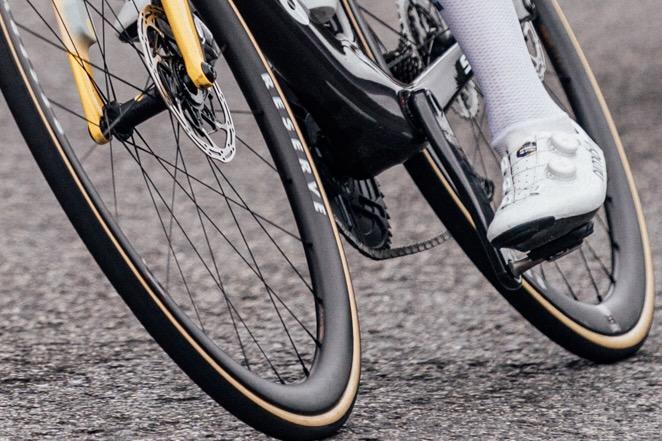
Pic: © Zac WiLLIAMS SWpix.com (t-a Photography Hub Ltd)
Jumbo-Visma switched from Shimano to SRAM for this season and we first saw Vingegaard experimenting with 1x at the Dauphiné.
> Jonas Vingegaard uses 1x gearing for Tour de France opening stages
A few riders have dabbled with 1x, with varying levels of success, and of course, there was the ill-fated Aqua Sport Blue team which solely used 1x drivetrains on 3T Strada bikes. The team boss at the time was quite scathing about either the drivetrain or the bike, or perhaps both.
There are benefits to a 1x system. There’s no duplication of gears – which is something you get with 2x groupsets – it can be lighter and more aerodynamic, and the lack of a front derailleur means there's one less component to fail.
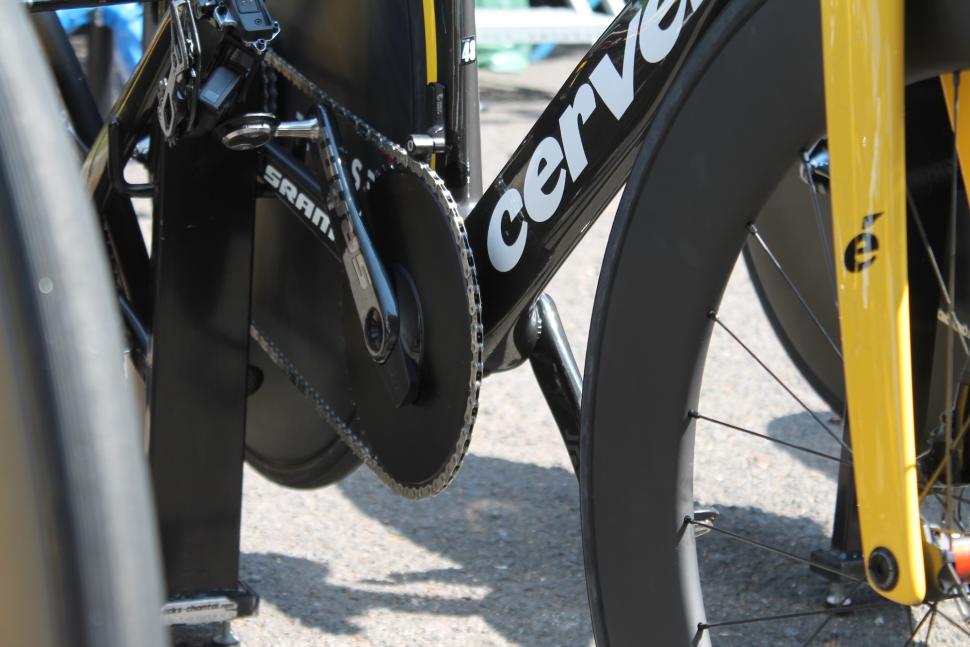
Jumbo-Visma uses single chainring setups on its time trial bikes (above) when it doesn't need a huge spread of gears.
However, Vingegaard and Van Aert have also used 1x for normal road stages with a Wolf Tooth LoneWolf Aero chainguide fitted to help keep the chain in place.
It's not as if Jumbo-Visma has chosen to give 1x a go just for flat courses; the first two stages of this year's Tour were pretty hilly. It'll be interesting to see if the team sticks with the tech throughout the race and, if not, the circumstances in which it turns to 1x.
SRAM insists that Jumbo-Visma's use of 1x isn't a marketing exercise, by the way. It's down to the team and the individual riders which of SRAM's components they decide to use.
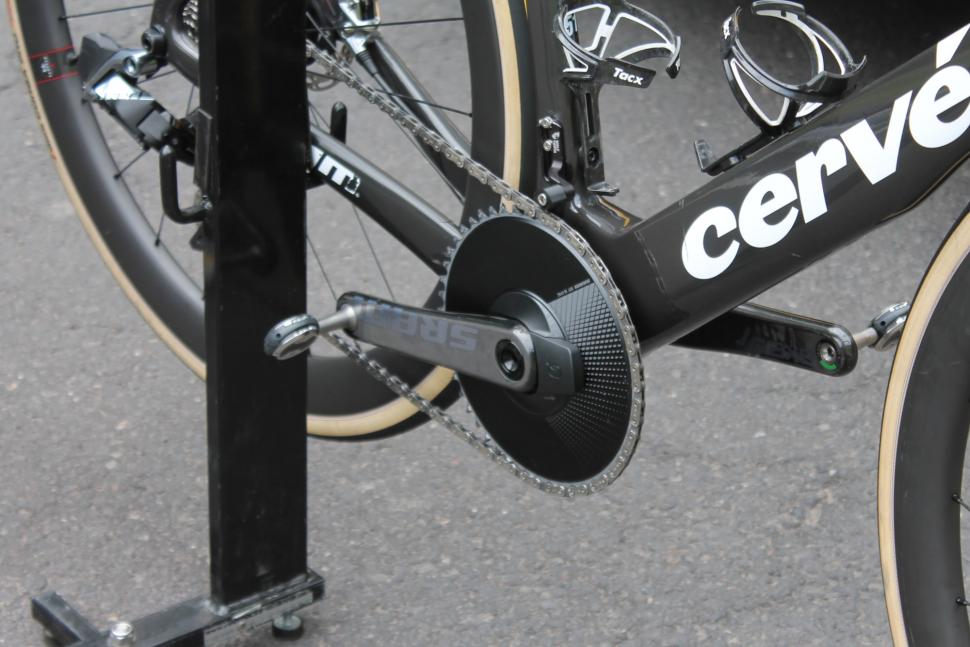
One issue with 1x is that you can still get some fairly sizeable jumps between the gears. A possible solution to this is the Classified system which basically moves the function of the front mech into the rear hub.
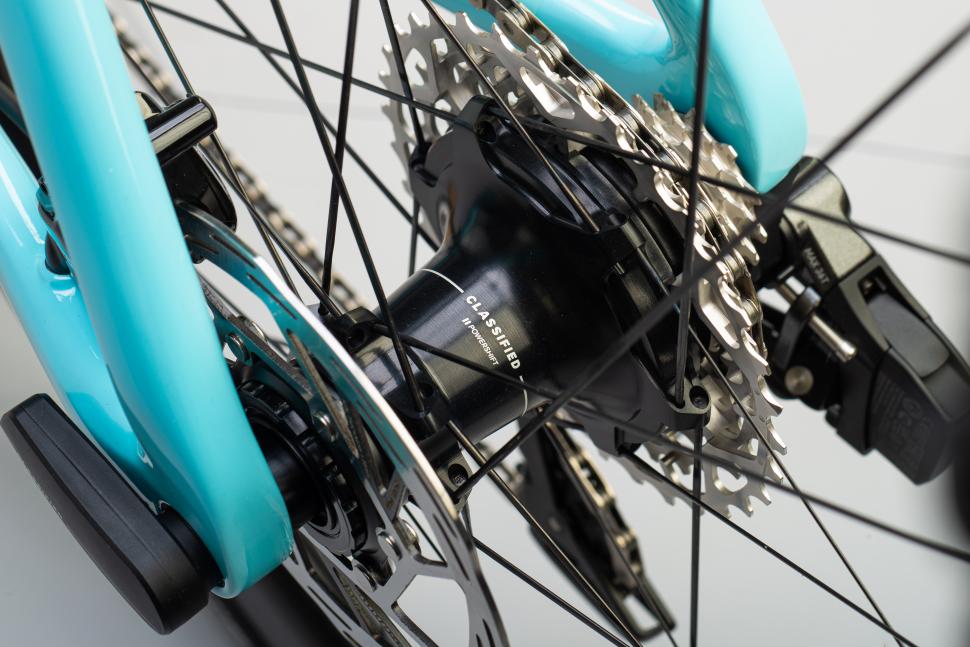
Classified's tech could also bring aero benefits and it has been used by a few teams. Uno X has tried it out in competition, for example, and Lotto-Dstny's Victor Campenaerts rode this year's Omloop Het Nieuwsblad with a Classified system on his bike.
The system raises some questions about wheel changes but could it be something we see in the Tour de France in the future?
> Check out Classified's innovative Powershift drivetrain
What about the rest of us?
Today’s pro road racers are provided with equipment vastly superior to 10-20 years ago, but it’s the range of gears that has been the most interesting trend as the groupsets have evolved. As the number of sprockets has increased, the gear range has increased. Are riders getting soft, are courses getting harder, or is the higher number of gears making it possible?
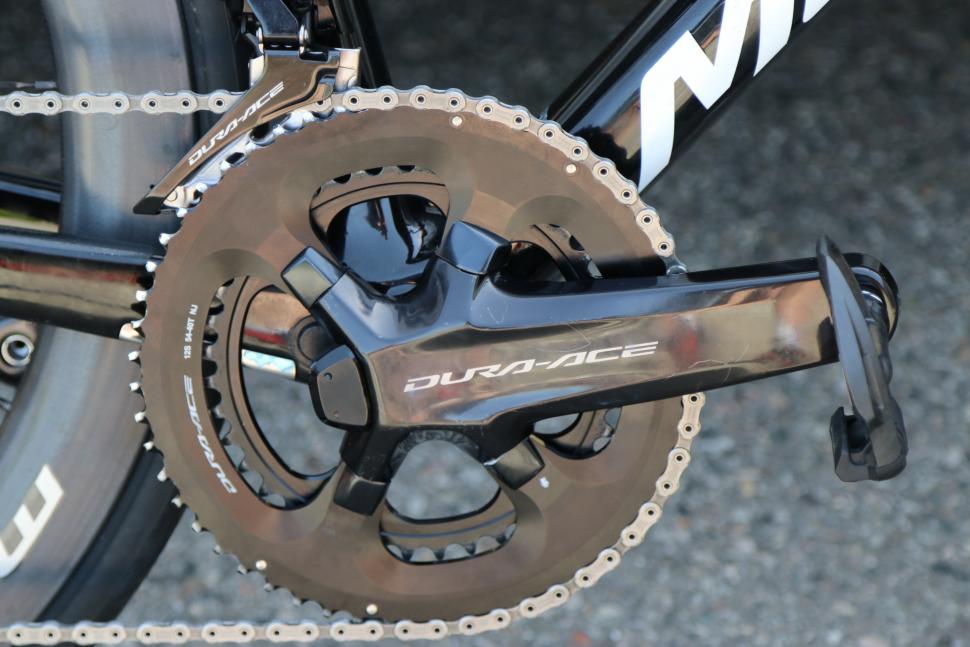
The three big groupset manufacturers are still focused on the needs of the pro racers and delivering groupsets to meet their needs, and then selling them to the public, but there just aren’t many normal people that need a 54-11 gear. The requirements of the pros are very different to people like you and me.
This is slowly changing though. Outside of the pro peloton, we're starting to see a shift in focus from the equipent manufacturers to meet the growing diversity of modern cyclists that are less influenced by pro racers and more by their riding, whether long-distance road rides or adventure and gravel bikepacking.
Largely thanks to adventure riding, we're now seeing much wider range groupsets with more realistically usable gear ratios for the many people that don't go racing every Sunday, but want gears to help them out on challenging terrain and let them conquer every hill.
Help us to fund our site
We’ve noticed you’re using an ad blocker. If you like road.cc, but you don’t like ads, please consider subscribing to the site to support us directly. As a subscriber you can read road.cc ad-free, from as little as £1.99.
If you don’t want to subscribe, please turn your ad blocker off. The revenue from adverts helps to fund our site.
Help us to bring you the best cycling content
If you’ve enjoyed this article, then please consider subscribing to road.cc from as little as £1.99. Our mission is to bring you all the news that’s relevant to you as a cyclist, independent reviews, impartial buying advice and more. Your subscription will help us to do more.
Jamie has been riding bikes since a tender age but really caught the bug for racing and reviewing whilst studying towards a master's in Mechanical engineering at Swansea University. Having graduated, he decided he really quite liked working with bikes and is now a full-time addition to the road.cc team. When not writing about tech news or working on the Youtube channel, you can still find him racing local crits trying to cling on to his cat 2 licence...and missing every break going...
Add new comment
25 comments.
No one other than a professional racing cyclist or an amateur of the very highest level needs an 11 tooth or even a 12 tooth sprocket, unless their big chainring is a 44 rather than a 50 or 52.
People tell themselves that they do because they want to pedal really fast down hill. But it's likely that their pedalling at the low wattages of ordinary cyclists merely increases their drag from the air, downhill; so they go slower than they would if they stopped pedalling, tucked in their knees to the frame and crouched in an elbows-in aero position.
As to the idea that a double or triple chainring giving duplicated gear ratios is somehow a disadvantage .... this too is an unthinking analysis.
The point of a double or triple chainring is to provide, from the same cassette, two or three gear ranges that are close enough to enable the rider to find the ideal cadence, whether for generally slowish ascents, mid-speed undulations or flats agin' the wind, or fast riding when the road is smooth & flat with the wind behind. It isn't to provide more gears but rather to provide better gear ranges for different terrains/speed ranges.
But our culture encourages sales of high end racey bike parts by seeming to promise the buyer of high-geared stuff that they too can be just as fast as them riders in the TdF by having a Dura-Ace 53/39 chainset and an 11-25 cassette. This is just a-one o' them daft "dreams" they install in the heads of folk far too blase about having their wallets emptied whilst paying no attention to the reality of their actual cycling abilities.
The annoying part for those wanting more realistic gears is that it's often very hard to find them. Because road bike frames tend to come with front braze-on fitting to suit chainrings from 48 - 56, rather than 44 - 50, you'r stuck with a 48 or (more probably) the 50 that the bike comes with. But can you buy a 14-34 cassette? Not really - you have to buy an 11- 34 cassette plus three Shimano cogs of 14, 15and 16 (to replace the 11, 13 & 15). This becomes expensive - and difficult to do as only SJS cycles seems to sell spare Shimano sprockets in Blighty, these days.
My own preferred and favourite gear range is a 50/39/30 chainset with a 15 - 36 cassette of 10 cogs. It goes as fast as I can go pedalling (without a significant downhill) in 50/15 (30 mph, briefly) but also allows a twiddle in a very low gear. Each chainring provides relatively close-ratio gears from the cassette, since there's only usable cogs and no wasted 11, 12, 13 or 14 that would never get used.
- Log in or register to post comments

I'm a very ordinary (and I mean very very very ordinary) 54-year-old cyclist and I use my 50/12 as my standard flat no wind gear to ride at around 23mph, on the bike that has a 52/11 I can certainly get a higher speed downhill than just tucking in until the speed starts to approach 50mph. Pardon me saying so but you seem to be rather solipsistic in your belief that what suits you is what should suit anybody and that anyone who disagrees is just a mug falling for marketing hype. We are all different, you know.
Rendel Harris wrote: I'm a very ordinary (and I mean very very very ordinary) 54-year-old cyclist and I use my 50/12 as my standard flat no wind gear to ride at around 23mph, on the bike that has a 52/11 I can certainly get a higher speed downhill than just tucking in until the speed starts to approach 50mph. Pardon me saying so but you seem to be rather solipsistic in your belief that what suits you is what should suit anybody and that anyone who disagrees is just a mug falling for marketing hype. We are all different, you know.
At 23 mph in 50/12 you'll be revving at mid-60s rpm. That's a hard way to pedal unless you're a body builder.
At 120rpm in 50/11, you'd only be doing 44mph, so you must have very whizzable legs to get to 50mph whilst pedaling!
Perhaps you need to practice tucking in a bit if you can't increase speed quite dramatically by getting more aero? To increase downhill speed above around 30mph just by pedalling harder, you'd have to be inputting a rather large number of watts - certainly more than those of "a very very ordinary" cyclist.
You can call hard facts about gearing, aero positions and so forth "solipsistic" but facts are uncaring of our mere opinions, seeing as how they're quite hard to avoid or change.
Cugel wrote: At 23 mph in 50/12 you'll be revving at mid-60s rpm. That's a hard way to pedal unless you're a body builder.
As a result of a lot of leg weight work as a rugby player I do have rather large pins - think Chris Hoy rather than Froome, though without an ounce of the talent of either - and I find 65-70 a comfortable cadence at that speed. Which just goes to prove what I said, we're all different and it's nonsense to issue blanket statements like "No one other than a professional racing cyclist or an amateur of the very highest level needs an 11 tooth or even a 12 tooth sprocket."
Cugel wrote: At 120rpm in 50/11, you'd only be doing 44mph, so you must have very whizzable legs to get to 50mph whilst pedaling!
If you look again I said that was on the bike with 52/11 and I get close to 130rpm before spinning out on a downhill, which I don't think is terribly unusual or "whizzable".
Cugel wrote: facts are uncaring of our mere opinions
That is very true, but most of what you wrote was opinion based on what you think is an ideal way to ride.
Rendel Harris wrote: Cugel wrote: At 23 mph in 50/12 you'll be revving at mid-60s rpm. That's a hard way to pedal unless you're a body builder.
Fact-based based on my experience, that of many others and that forced on anyone who employs various gear ratios and positions on a bike, I think you'll find.
But a mental experiment is also available. Consider the gearing of professional cyclists able to output 400 watts continuously then work out what gearing might, scaled, be appropriate for everyday cyclists with power output capbilities more between 100 and 200 watts.
Will the latter somehow be able to emulate the 400 watters just by having the same gear ratios? Some think so, going by their claims. This is not so much "just a different opinion" as "magical thinking".
Rendel Harris wrote: Cugel wrote: facts are uncaring of our mere opinions
Let's face it, the reason why most go about with cassettes starting with 11 teeth (soon to be 10 or even 9!) is that its very, very difficult to buy anything else. And nearly every road, gravel, touring or audax bike sold as such comes with such a cassette.
You can buy a 14-28 cassette from Mr Shimano. But no 14 - 34 cassette - you have to make your own franken-cassette from a 14-28 plus an 11-34; or buy individual alternative cogs. This is costly.
In short, the reason most have 11- summick cassettes is because of marketing, driven by the fashions of professional racing (also determined by marketing). "Reasons" given by ordinary cyclists to justify their 11 toofers seem, to me, to be "rationalisations after the fact" (of being caught by a fashion-net).
It reminds me of the highly successful marketing trick concerning cycling helmets - no decent proof they achieve anything but a lot of profits for manufacturers (not to mention the polluting landfill) and increased "accidents" due to risk compensation thinking .... but millions buy, wear and defend them.
I knew it wouldn't be long before we got back on to those dark forces of the global commerce conspiracy and their evil plan to reprogram the worker drones with their "marketing".
This is simply drivel and your determination to say that anyone who disagrees with your opinion as to the correct gear ratio is falling for a marketing ploy is risible. What is the marketing advantage to Shimano of selling 11 toothed smallest ring cassettes? Do you think they are making a few bob on the micrograms of metal saved?
If you want a 14-34 11sp cassette, buy a Miche Primato and stop telling everybody else that they are wrong and falling for a sucker punch by The Man just because they prefer a different gear ratio to you.
I commute with 11-34 and 50/34 and usually average about 75rpm. My speed averages out about 25kph (according to Garmin) I moved to that setup because it was the cheapest option that I knew would fit on my bike. It is commuting, so I do the same route every day and don't move out of the 50. I am able to drop to the 11 when the headwind isn't too strong, but usually I don't get down there. My cadence tops out about 105 on some of the uphill sections. I am in exercise clothing, arrive sweaty and very much treat it as my daily exercise routine. I am not a pro.
I commute on 52/36 chainrings with an 11-28t cassette and I'm usually in the 52/11 on the flat if the road is clear. And I'm just a 48-year old hobby cyclist.
CumbrianDynamo wrote: I commute on 52/36 chainrings with an 11-28t cassette and I'm usually in the 52/11 on the flat if the road is clear. And I'm just a 48-year old hobby cyclist.
What speed are you doing and, as a result, what's your cadence, in that gear?
When I were a lad, 382 years ago, even professionals like that Merckx, had 52 X 13 as their top gear. They still managed to race at speeds not that much slower than today's professionals.
When I raced, often in races on the flat that averaged 27mph+, I managed to do so on a 52X14 or even 15 top gear. This didn't win me any sprints but it got me to the finish only a few seconds behind those who did sprint to victory.
Of course, I don't mind if you want to go about in 52 X 11 at 55rpm cadence but when it means I can't buy the cassette I want because all the fellows with "all the gear" only want to have the same gears as the bloke wot won Le Tour, it gets a bit tedious.
About 45km/h, cadence about 80. Is that acceptable to you?
CumbrianDynamo wrote: About 45km/h, cadence about 80. Is that acceptable to you?
Your flat road commuting pace equates to about 21m30s minutes for a 10 mile TT. That's pretty fast (particularly as I don't suppose you commute on tri-bars, TT wheels, etc.)
As I'm commuting it's not a speed I sustain for particularly long distance thanks to the hazards you might expect on a city rush hour journey, but I need the 11 when I have enough clear and flat bus lane to be able to get to around 30mph. Wouldn't know about riding TT as I've never done one, but on a good commuting day on my sub-8kg carbon bike it'll take me about 30 mins to travel about 9 miles in London traffic with a couple of hundred metres of ascent.
www.bikecalc.com/gear_speed may be of interest here.
80rpm in 52/11 is almost 50kph.
Recent hour record breaking bikes had around the equivalent of a 52x11 gear, pedalled at about 100rpm. I guess MAMILs are more likely to be in the 80-90rpm range - much less over any distance doesn't seem very efficient.
Dnnnnnn wrote: www.bikecalc.com/gear_speed may be of interest here.
Cugel wrote: My own preferred and favourite gear range is a 50/39/30 chainset with a 15 - 36 cassette of 10 cogs. It goes as fast as I can go pedalling (without a significant downhill) in 50/15 (30 mph, briefly) but also allows a twiddle in a very low gear. Each chainring provides relatively close-ratio gears from the cassette, since there's only usable cogs and no wasted 11, 12, 13 or 14 that would never get used.
In my opinion, nce the gear ratio goes much below 1:1 then you can't pedal any mr beause the front wheel keeps lifting off the ground.
wycombewheeler wrote: Cugel wrote: My own preferred and favourite gear range is a 50/39/30 chainset with a 15 - 36 cassette of 10 cogs. It goes as fast as I can go pedalling (without a significant downhill) in 50/15 (30 mph, briefly) but also allows a twiddle in a very low gear. Each chainring provides relatively close-ratio gears from the cassette, since there's only usable cogs and no wasted 11, 12, 13 or 14 that would never get used.
Is that a bald opinion (one with no experience-hair), a potted opinion from a cycling website or one based on your own experience?
My own experience is that gears below 1:1 are very good at enabling a pedal up those very long and steep ascents to be found in many locations across Blighterdom. This also seems to be the experience of tens of thousands of touring cyclists, over the years, including me on my many cross-Pennine trips with rear panniers but no front 'uns.
I've not yet seen a tourist or any other slow-twiddler o' the hills go tit-over-arse from the bike whilst twiddling up the steeps (and I've frequented many such steeps) despite their 24 ring and 34 cog.
Cugel wrote: No one other than a professional racing cyclist or an amateur of the very highest level needs an 11 tooth or even a 12 tooth sprocket, unless their big chainring is a 44 rather than a 50 or 52.
Rather simplistic to state that. Try living in the alps and you will rapidly find the average cyclist with a 50/34T and 11/34 setup is now the most common. As a 50 is needed, so is the 11 to compensate for the lack of a bigger ring.
philsinclair wrote: Cugel wrote: No one other than a professional racing cyclist or an amateur of the very highest level needs an 11 tooth or even a 12 tooth sprocket, unless their big chainring is a 44 rather than a 50 or 52.
The reason all those Alpine cyclists have 50/34 and 11/34 is that it's rather difficult to buy anything else with lower gears, in a road bike.
The touring cyclists I know, though - those who understand the need for lower gears up steep/long hills because of their loads - tend to buy from places like Spa, where chainsets of 44-34-24 are sold in significant numbers. A 44 ring with the ubiquitous 11 tooth sprocket is at least a usable gear at an efficient cadence.
What missing bigger ring does the 11 tooth with a 50 ring compensate for?
As a 50 year old 77kg 3.8w/kg rider, as far as I'm concerned my 11 & 12 tooth sprockets are effectively spacers that help with my chain line. I run 11-28 and 11-30 11 speed cassettes (with 50/34 or 36 front) but would happily give up the 11 tooth for tighter mid-gear ratios.
On my gravel bike I've got 46/30 at the front and 11-34t at the rear. I find this suits me very well cycling on the road. I can comfortably ride at any speed from walking pace up to 35 mph.
My cadence is usually around 90 though, if it was lower then I'd want a higher top gear.
Reminder that unless you are putting out 5.5 watts per kg you shouldn't be making gearing decisions based on what the pros are riding.
To be fair, the article says that.
Indeed it does, hard to overstate though. You see so many ordinary people who wholeheartedly believe that they need gearing to pedal at 40mph and sacrifice an enjoyable ride to get it.
Latest Comments
She was crushed under the wheels of a 4-axle 32T truck with a specification for off road use - & the driver carried on for 53 metres before a...
I built the cycle routes around here between 1986 and 1994. Quite a lot of vegetation seems to have reduced sightlines here, and the path from...
There are some serious sharp turns with steep ramps where the riverside route goes inland just West of the hotel plus the sharp non radiussed turns...
Just catching up with this. Its now coming up for 5 years since another young woman, also cycling from Shawlands into Glasgow in the morning was...
Maybe Bioracer would be better to target amateur and commuter riders with their product?
Understandably, you say this rack isn't compatible with non-round or carbon seatposts, yet one of the two bikes pictured with it clamped to their...
"Better than drugs." nice dig Simon
Orbea Orca for me, decent company ethos too.
Remember too that aero gravel bikes are a recent development. That makes them much more palatable.
Realistically, it's going to take year to fix. Unless we have several weeks without rain...like that will happen
Tour de France Winning Bikes by Year (1903 to 2023)
36 different bike brands won the Tour de France in 110 editions. In this article, cycling fan Alex Lee breaks down the top 12 bike brands that have won at least 3 times.
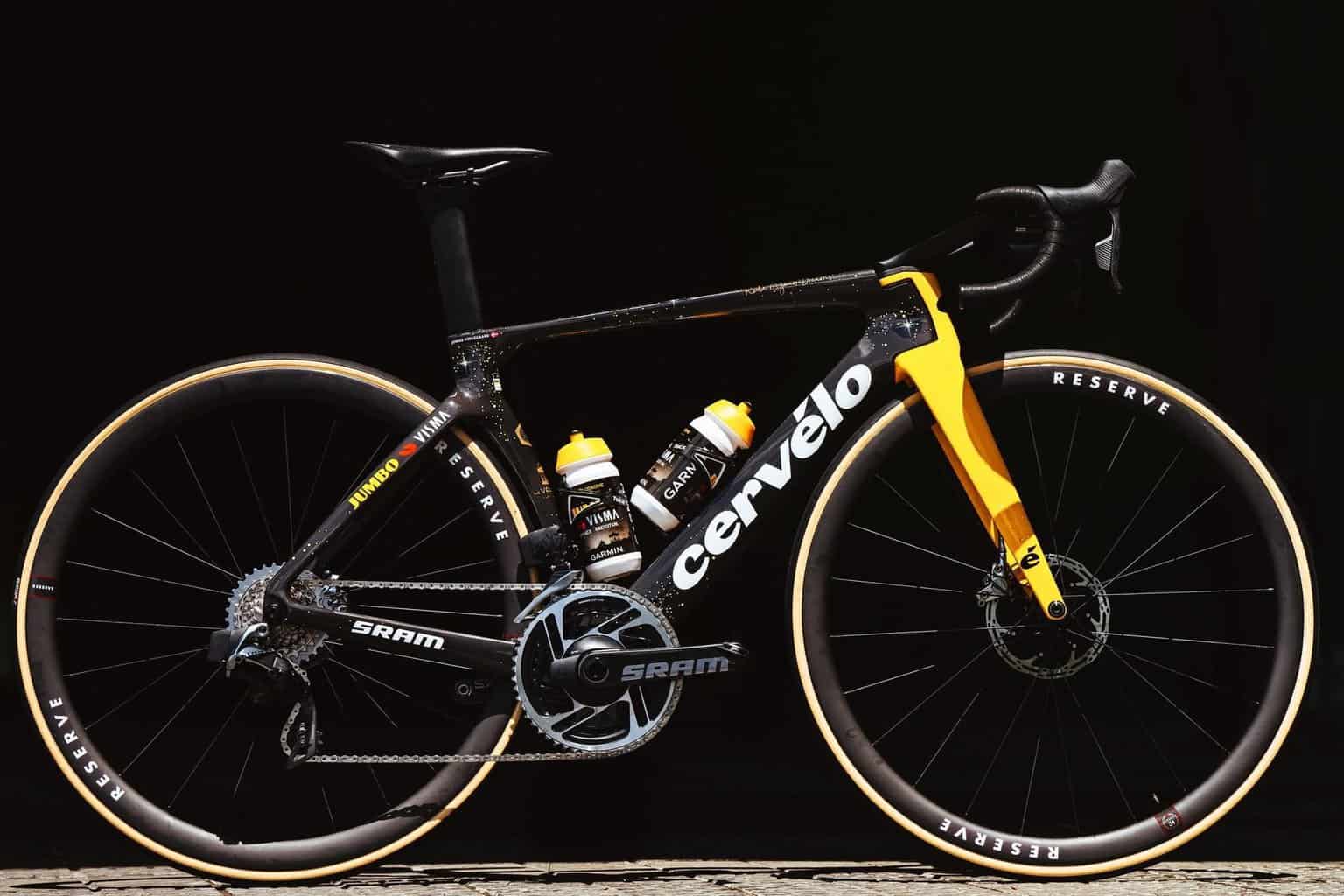
Jonas Vingegaard rode a Cervélo bike to his second Tour de France overall win in 2023 with SRAM Red eTap AXS electronic groupset and Reserve Wheels.
Depending on the stage profile, Jonas Vingegaard’s bike can be a Cervelo R5, S5, or P3.
- Cervélo R5 is an all-rounder, lightweight road race bike for the mountains.
- Cervélo S5 is an aero bike for the flat stages.
- Cervélo P5 is a time trial bike that Jonas rode to win the Stage 16 ITT.
Full specifications and setup of Jonas Vingegaard’s bike.
Cervelo bikes
2023 Cervelo R5 vs S5 vs Caledonia 5 vs Soloist
Cervelo S5 Frame Geometry (2018-2023)
Cervelo Soloist Frame Geometry (2022-2023)
Cervelo Caledonia Frame Geometry (2021-2023)
Cervelo Aspero Frame Geometry (2019-2023)
2023 Cervelo R5 Size Charts and Guide
Pinarello – 15 wins
L’auto – 10 wins, peugeot – 10 wins, gitane – 9 wins, trek – 10 wins, alcyon – 7 wins, eddy merckx – 5 wins, automoto – 4 wins, bianchi – 3 wins, colnago – 3 wins, helyett – 3 wins, la sportive – 3 wins, tour de france winning bikes by year.
Throughout 110 editions (up to 2023), the Tour de France has been won by 36 different bike brands . Many of these brands are unknown to cycling fans today. Few bike brands, such as Colnago, Pinarello , Specialized , and Trek , are synonymous with cycling fans today.
The road bike industry has undergone massive change and innovation in the past 20 years by introducing new technologies such as electronic shifting , carbon fiber frames, disc brakes, and tubeless tires .
This article will go back in history and explore all the Tour de France winning bikes .
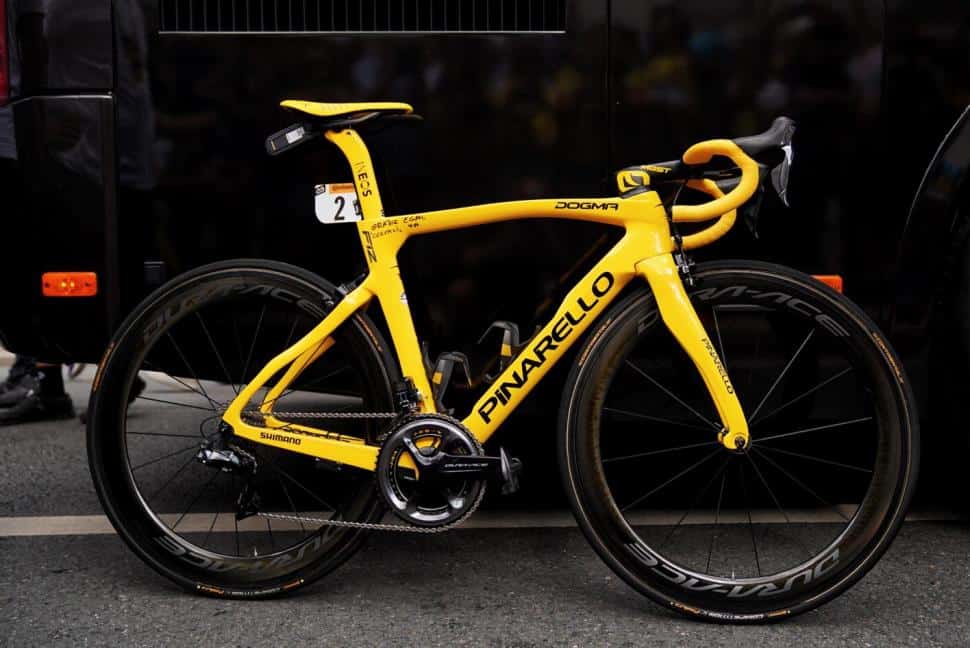
Pinarello has a long history in cycling, dating back to 19534, when it was founded by Giovanni Pinarello in Treviso, Italy. With 15 Tour de France wins, Pinarello is the most successful bike brand at the Tour de France.
Pinarello’s dominance at the Tour de France can be summed up in two eras.
- Mid-1990s. Miguel Indurain won four consecutive Tour de France from 1992 to 1995, followed by Bjarne Riis (1996) and Jan Ullrich (1997).
- Mid-2010s. Team Sky (Ineos-Grenadiers) won seven Tour de France with Bradley Wiggins (2012), Chris Froome (2013, 2015, 2016, 2017), Geraint Thomas (2018), and Egan Bernal (2019).
Today, Pinarello’s top-of-the-line bike is the Pinarello Dogma F .

L’Auto (now L’Equipe) is not a bike brand but the French newspaper that started the Tour de France in 1903.
From 1930 to 1939, Henri Desgrange, the newspaper’s owner, required all riders to paint their bikes’ downtube with L’Auto as part of the marketing campaign and publicity stunt to increase the race profile.
During that period, riders competed based on national teams, so there wasn’t any commercial conflict of interest.

Today, most of us know Peugeot as the French automotive brand. Peugeot started making bicycles way back in 1882 and won their first Tour de France with Louis Trousselier in 1905 and their last win came in 1977 with Bernard Thévenet.
In the past 50 years, the bicycle arm of Peugeot has gone through various ownership. Today it’s part of Cycleuope, which owns bike brands such as Bianchi and Gitane.
Here’s an interesting fact; Peugeot has a complete bike lineup from road to mountain, city, kids, and electric bikes.

2023 Tour de France Bikes and Gear
2023 Tour de France Sunglasses Brands and Models Guide
2023 Tour de France Helmets Brands and Models Guide
2023 Tour de France Bike Brands and Models Guide
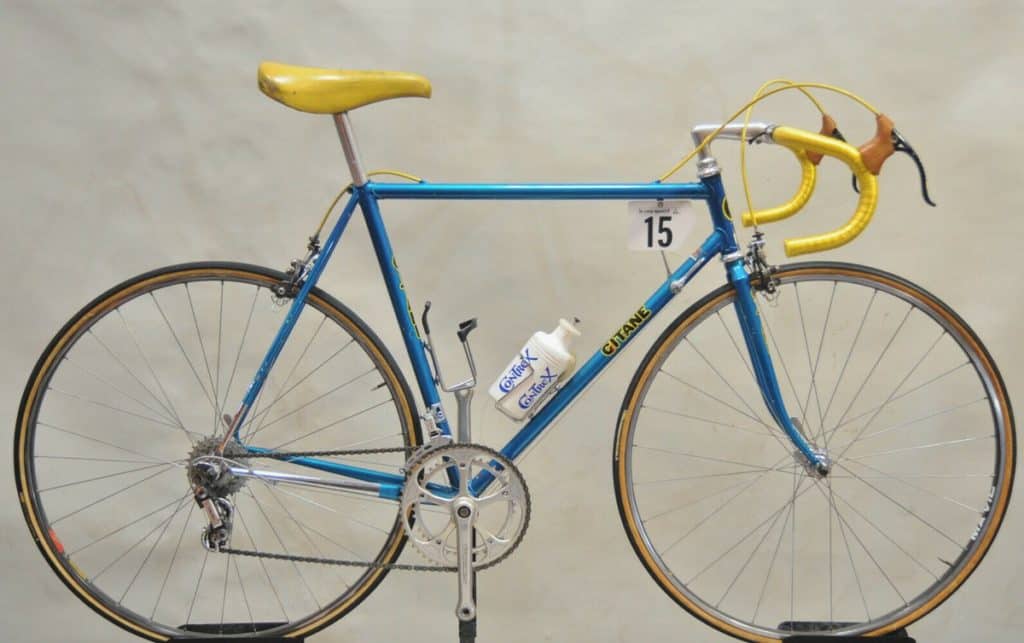
Gitane is a French bike brand synonymous with racing from the mid-1960s to the mid-1980s. All nine of Gitane’s Tour de France wins occurred during this period with legendary French riders such as Bernard Hinault (4), Jacques Anquetil (2), Laurent Fignon (2), and Belgian Lucien Van Impe (1).
Today, Gitane is part of Cycleuope, which owns the Bianchi and Peugeot bike brands. Gitane produces mostly city and mountain bikes today. They don’t have much presence outside of France.
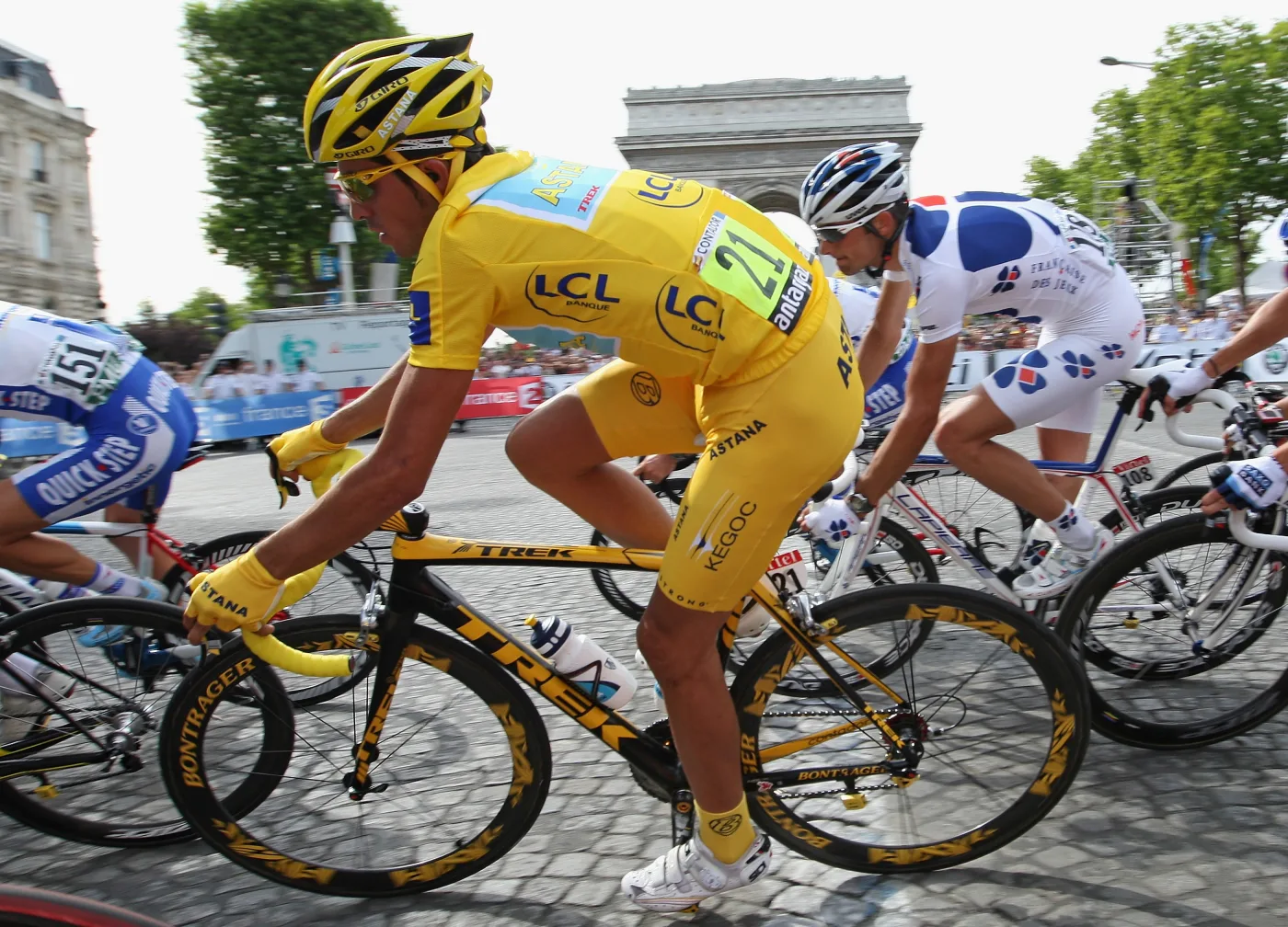
Founded in 1976, Trek is one of the leading bike brands today with its men’s and women’s World Tour teams.
Trek’s first Tour de France win was in 1999 by Lance Armstrong. For the next seven years until 2005, Lance Armstrong dominated the Tour de France, helping to raise Trek’s profile in the United States and worldwide. In 2012, all seven of Lance’s Tour de France wins were nulled.
Trek’s other three Tour de France wins were with Alberto Contador in 2007, 2009, and 2010 although the 2010 win was later nulled.
Trek offers the riders three types of road bikes; Trek Emonda (lightweight), Trek Madone (aero) and Trek Domane (endurance), and the Trek Speed Concept (TT).
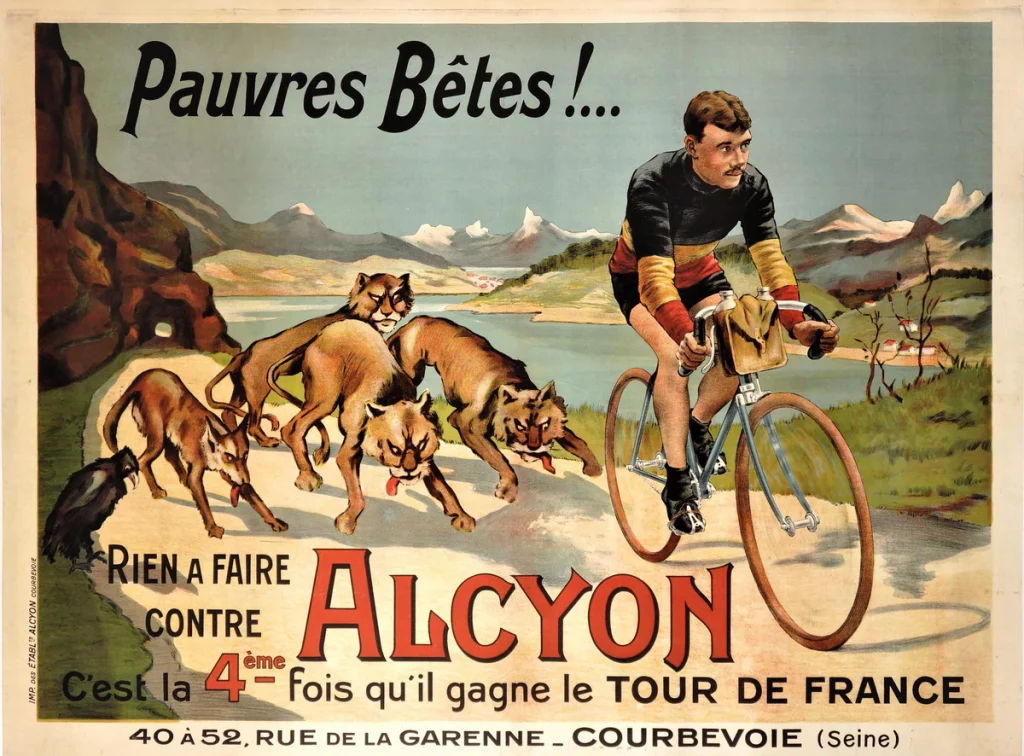
Alcyon was a French bicycle, motorcycle, and automotive brand active from 1903 to 1954. They sponsored their own cycling team from 1905 to 1959 under different names such as Alcyon-Dunlop, Alcyon-Soly, Alcyon-Armor, and Alcyon-Leroux
Their first Tour de France win was in 1909 with François Faber, a Luxembourgian rider. Their last win was in 1929 with Belgian Maurice De Waele. From 1930 onwards, the Tour de France organizers required the teams to paint their bikes’ downtube with L’Auto, the newspaper that started the Tour de France.
2023 Tour de France Riders’ Gear
Wout van Aert’s Red Bull Helmet at the 2023 Tour de France
Mark Cavendish’s Sunglasses at 2023 Tour de France
Mark Cavendish’s Shoes at 2023 Tour de France
Mark Cavendish’s Bike at 2023 Tour de France
Jasper Philipsen’s Bike at 2023 Tour de France
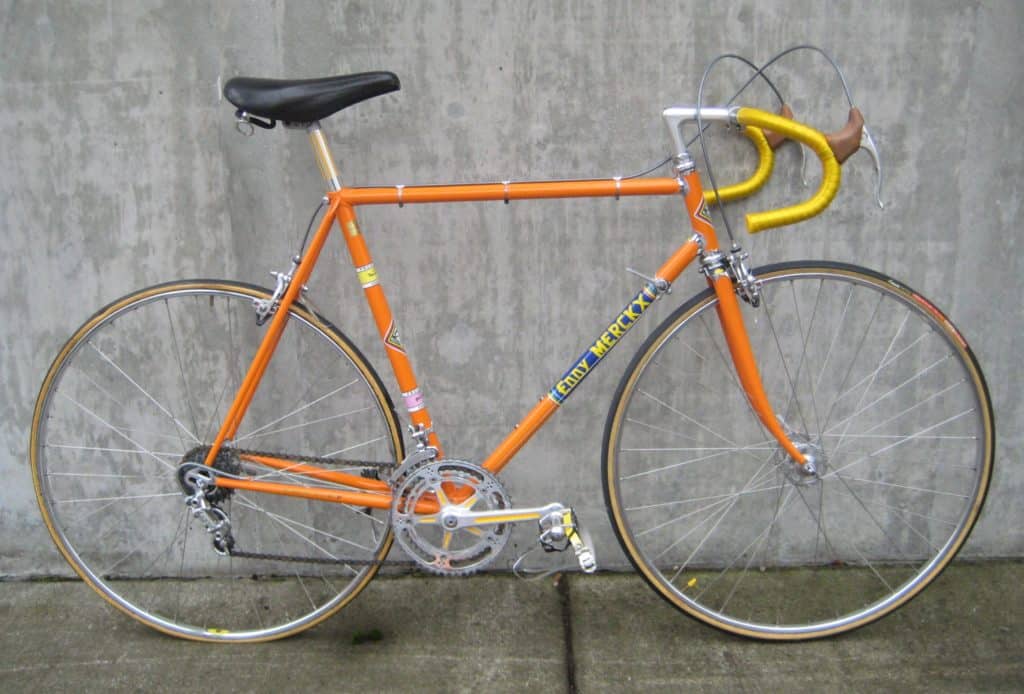
Eddy Merckx is no stranger to cycling fans. He’s widely known as the most successful cyclist of all time , winning the Tour de France (5 times), Giro d’ Italia (5 times), and 34 Tour de France stages .
The Eddy Merckx bike brand was only started in 1980 after he retired. Eddy Merckx was riding bikes built by Masi and Kessels with his name painted on the downtube for his five Tour de France wins.
In 2008, Eddy Merckx sold all his shares in the company to Sobradis, a Belgian holding company. In 2017, another Belgian company, Race Productions, which owns Ridley Bikes, took over Eddy Merckx after struggling with sales for the past decade.
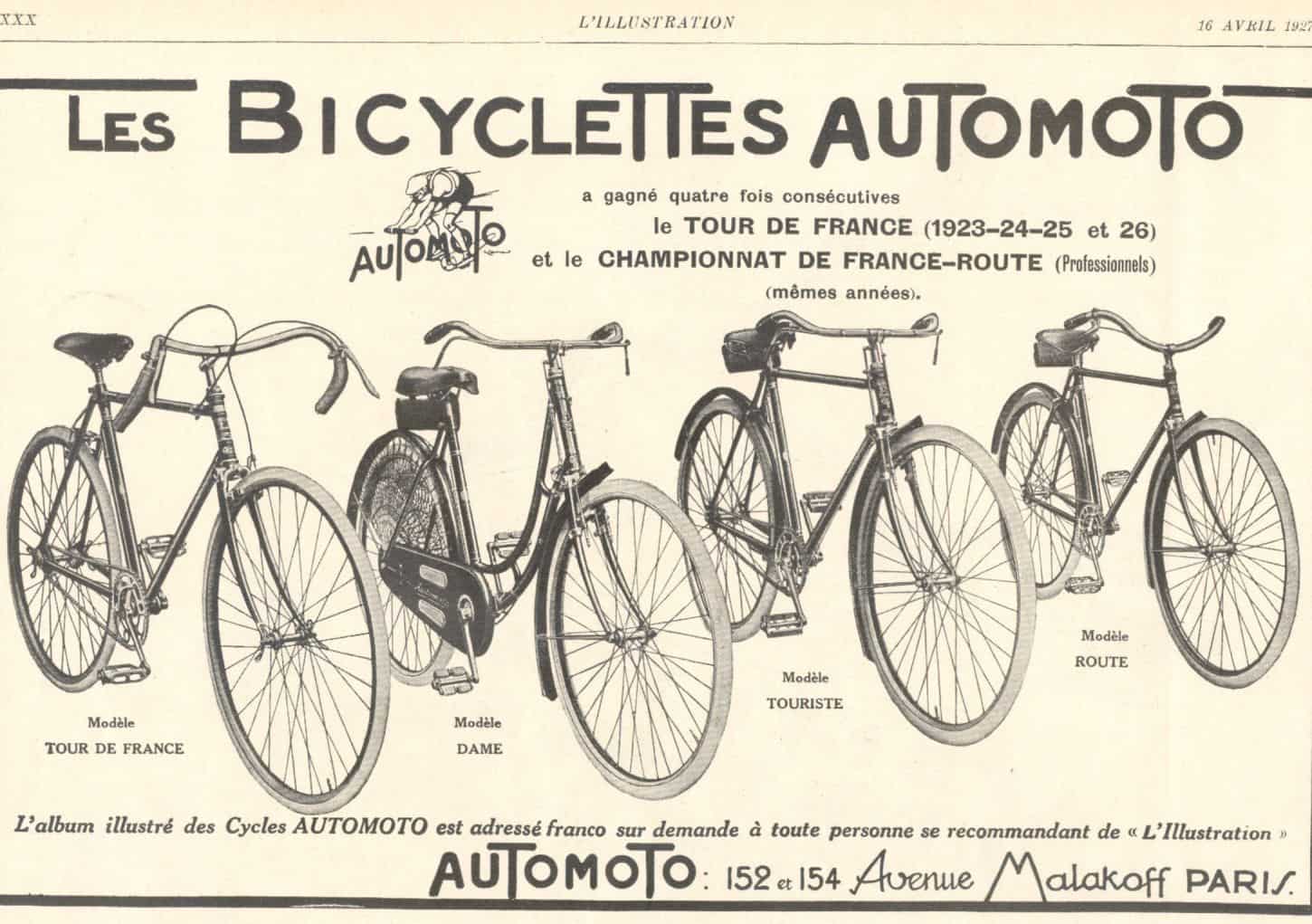
Automoto was a French bicycle and motorcycle manufacturer that started in 1902. It was the dominant bike brand in the mid-1920s, with four consecutive Tour de France wins from 1923 to 1923 with three different riders.
In 1930, it was bought by Peugeot and sadly discontinued in 1962.
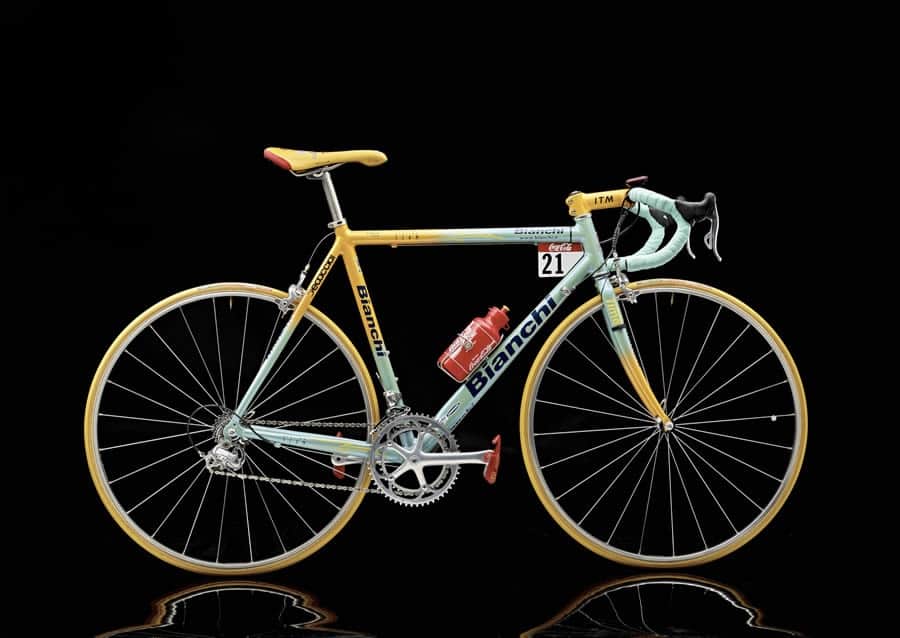
Bianchi is the oldest bicycle manufacturing company today. It was founded in Italy back in 1885 by Edoardo Bianchi who was a 21-year-old medical instrument maker.
All of Bianchi’s three Tour de France wins were achieved by Italian riders. Fausto Coppi won in 1949 and 1952 and Marco Pantini won in 1998. Bianchi was present at the World Tour with Team Jumbo-Visma (2014 to 2020) and Team BikeExchange (2021.
Team Arkea-Samsic will ride the Bianchi Oltre (aero) and Bianchi Specialissima (lightweight) at the 2023 Tour de France.
Today, Bianchi bikes are known for their Celeste color, also known as Bianchi Green.
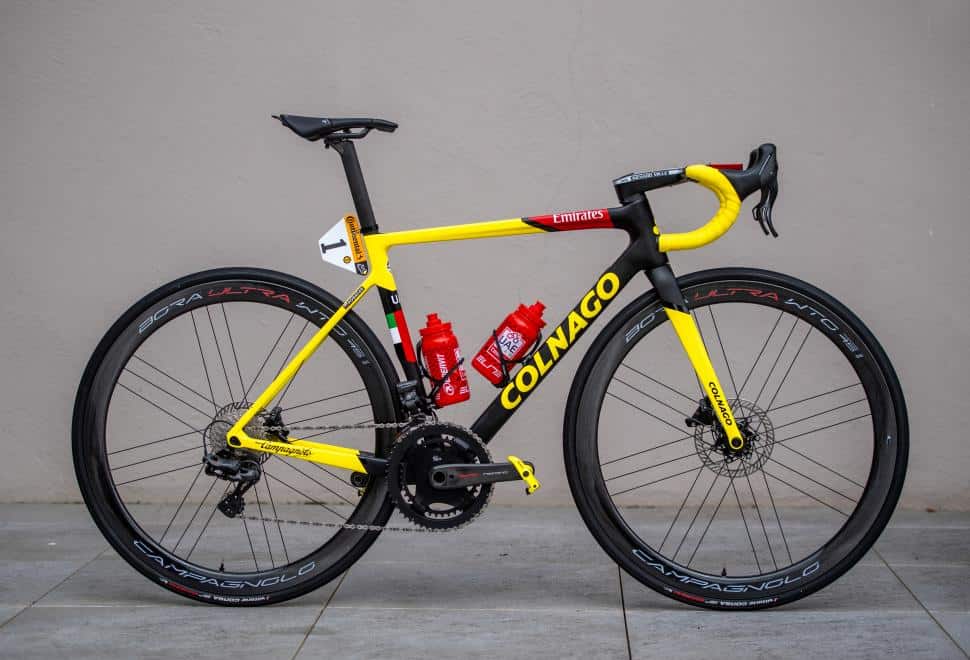
Colnago has a long history, dating back to 1952. It was founded by Ernesto Colnago near Milan, Italy. In May 2020, Chimera Investments LLC, based in the UAE, acquired a majority stake in Colnago.
Colnago’s first Tour de France win was in 1960 by Italian rider, Gastone Nencini. It was a long 60-year wait for their second win until Tadej Pogačar won two consecutive Tour de France in 2020 and 2021. He also won the Best Young Rider and Climber Classification in these two years riding the Colnago V3Rs .
In 2023, Tadej Pogačar will be riding the Colnago V4Rs in an attempt to win his third Tour de France General Classification .
Tour de France Race Guide
2023 Tour de France on TV Broadcasts Availability
2023 Tour de France Prize Money Breakdown
How is the 2023 Tour de France Time Limit Calculated?
What is the meaning of Tour de France Jersey Colors?
Why is the Tour de France So Popular?
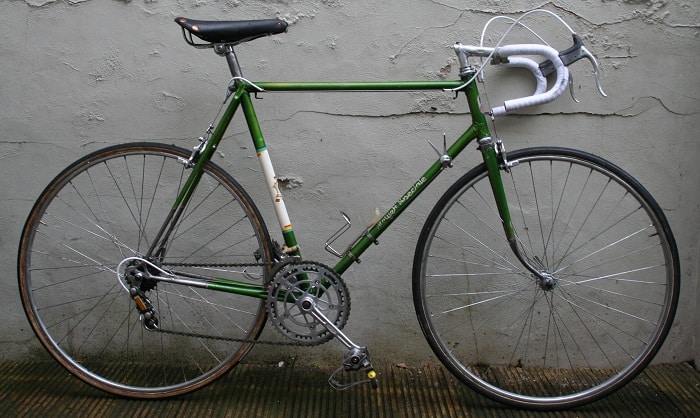
Helyett is a little-known French bicycle manufacturer started by the Picard brothers in 1926. It took its name from a lead character from a late 19th-century play, Miss Helyett, which is why the Helyett logo has a young women’s face on it.
Frenchman, Jacques Anquetil won three of his five Tour de France onboard a Helyett bike in 1957, 1961, and 1962.
La Sportive’s three Tour de France wins occurred right after World War 1, from 1919 to 1921. Right after the war, Europe was in bad shape and many bicycle manufacturers were either out of business or didn’t have the manufacturing capabilities.
The remaining brands include Alcyon, Armor, Automoto, Clément, La Française, Gladiator, Griffon, Hurtu, Labor, Liberator, Peugeot, and Thomann came together. They provided more than half the peloton with various bicycles and components so that the Tour de France can take place.
Once each brand recovered from the aftermath of World War 1, La Sportive disbanded in 1922.
Tour de France Records and Stats
How Many Rest Days in the 2023 Tour de France?
How Many Riders at the 2023 Tour de France?
How Many Stages in the 2023 Tour de France?
Tour de France Time Trial Winners’ Average Speed
What is the 2023 Tour de France Distance?
What is the Fastest Average Speed at the Tour de France?
Which Rider the Most Tour de France Appearances?

Alex Lee is the founder and editor-at-large of Mr. Mamil. Coming from a professional engineering background, he breaks down technical cycling nuances into an easy-to-understand and digestible format here.
He has been riding road bikes actively for the past 12 years and started racing competitively in the senior category during the summer recently.
Mr. Mamil's content is for educational and entertainment purposes only. The content is not a substitute for official or professional advice. Please do your own due diligence.
Mr. Mamil participates in the Amazon Services LLC Associates Program, an affiliate advertising program designed to provide a means for us to earn fees by linking to Amazon.com and affiliated sites. We also participate in various other affiliate programs, and at times we earn a commission through purchases made through links on this website.
Privacy Policy
Website Terms
© Mr. Mamil, 2023
- MAGAZINE OFFERS
- BIKE INSURANCE
- Best Products
- Maintenance
- Accessories
- Long-Term Reviews
- BikeRadar Podcast
- First Look Friday
- Bike of the Week
- Tech Features
- Routes and Rides
- Bike Galleries
- BikeRadar Bargains
- Buyer's Guides
- Fitness & Training
- Sizing & Fit
- Mountain Biking UK
- Cycling Plus
Tour de France bikes 2023: who’s riding what?
All the bikes and tech on display at the 2023 Tour De France
Jean Catuffe/Getty Images
Paul Norman
The 2023 Tour de France covers 3,404km (2,115 miles) over its 21 stages. That’s 54km more than last year’s Tour.
However, the bigger news is that time trial kilometres are down from two time trials totalling 53km last year (including the Prologue) to just one at 22.4km this year. It finishes at 974m in altitude and has a 2.5km Cat 2 climb to the finish, with an average 9.4 per cent gradient.
For several years, there's been an individual time trial on the penultimate stage, but this year, it’s on the Tuesday of the final week.
Given how a time trial can upset the final result, as in the 2023 Giro d’Italia, or cement it, as in last year’s Tour, it’s a surprising move.
That means the teams’ road bikes are increasingly to the fore. As usual, there’s some very flashy tech on show and we can expect more to be announced in the run-up to the Grand Départ and probably to be unearthed by the sharp-eyed as the race proceeds.
Read on for a complete list of the bikes in this year’s Tour de France, along with the kit they’re fitted with, and our pick of some of the new bikes and tech to keep an eye out for at the 2023 Tour de France .
Also check out our guide to prize money in this year's race, our explainer on leaders jerseys , a comprehensive Tour de France jargon buster and our round-up of how to watch the Tour , wherever you are in the world.
Tour de France 2023 bike brands
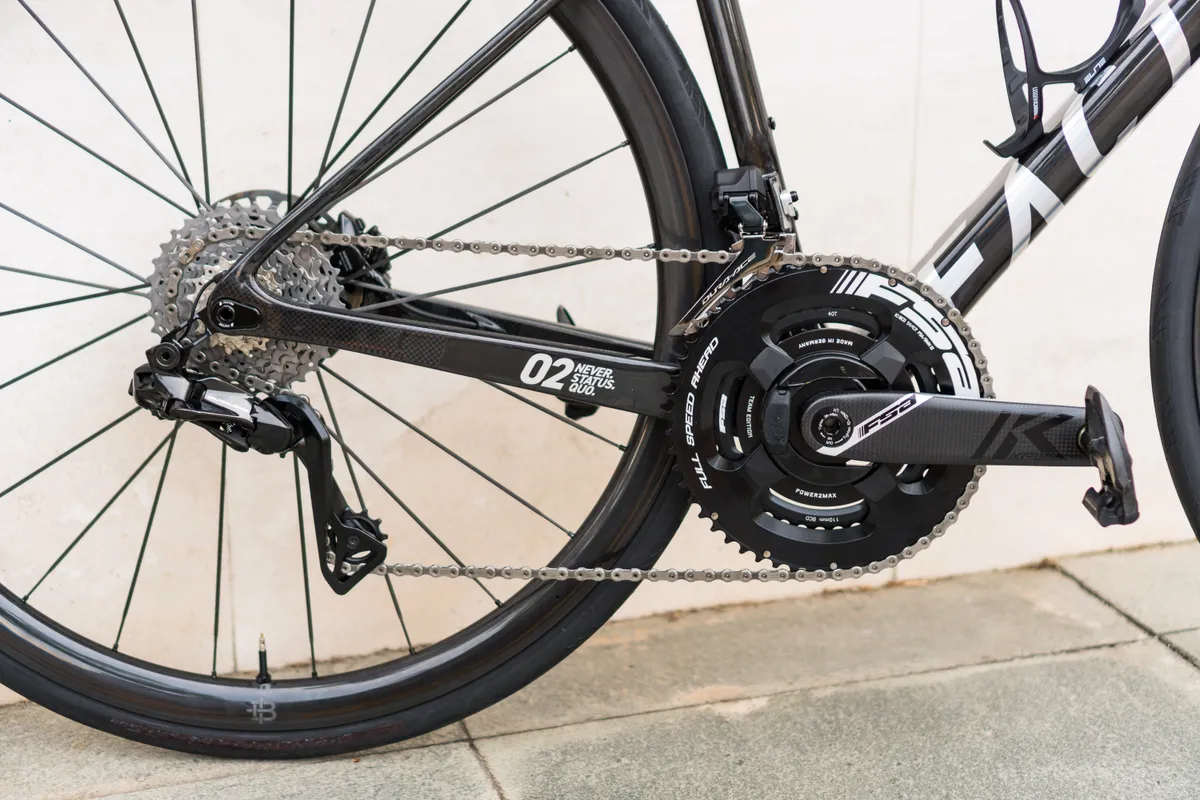
The 2023 Tour de France peloton is made up of 22 teams of eight, 176 riders in total. The 18 WorldTour squads receive an automatic invitation to compete, while four second-tier Pro Continental teams get a wildcard invitation. Between them, 19 bike brands are represented.
That’s two up on last year’s Tour, although the majority of brands are the same as in last year’s race. Even Ridley and Factor, who saw their teams demoted to the UCI’s second division, are back this year thanks to wildcard invitations for Lotto-Dstny and Israel-Premier Tech respectively.
New bike brands this year are Bianchi, Look and Dare, while out this year is De Rosa. Specialized continues to sponsor three teams, as in 2022, but Canyon is down from three to two.
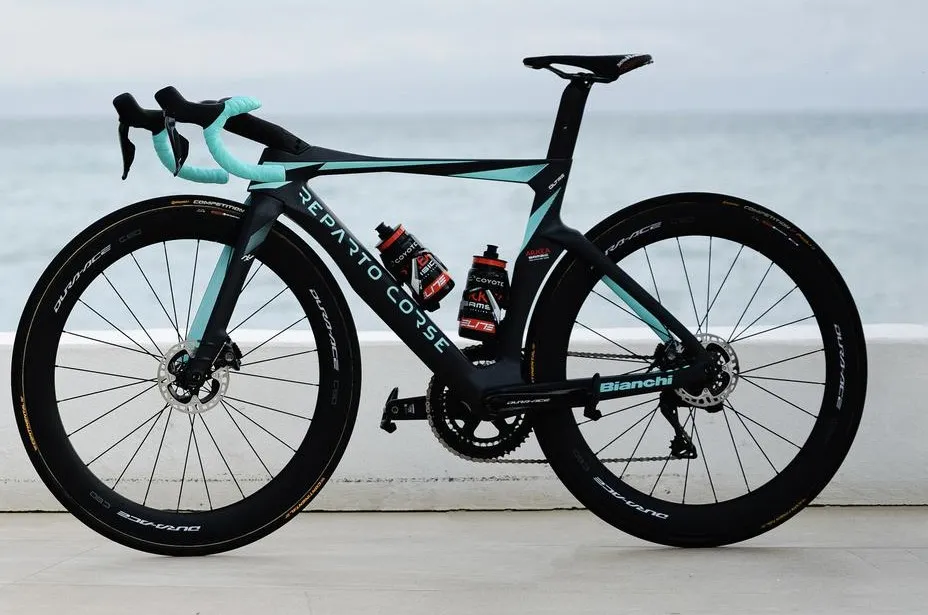
Bianchi was absent last year, but is back with Arkéa-Samsic. It had its first race win back in 1899 and its bikes were ridden by Fausto Coppi, Felice Gimondi and Marco Pantani as well as a who’s who of other top-drawer racers, so it’s a prestigious return for the brand. On the other hand, De Rosa is an equally famous name from cycling’s past that has departed the Tour.
Bike brands represented at the 2023 Tour de France:
- Bianchi : Team Arkéa-Samsic
- BMC : AG2R Citroën Team
- Cannondale : EF Education-EasyPost
- Canyon : Alpecin-Deceuninck, Movistar Team
- Cervélo : Jumbo-Visma
- Colnago : UAE Team Emirates
- Cube : Intermarché-Circus-Wanty
- Dare : Uno-X Pro Cycling
- Factor : Israel-Premier Tech
- Giant : Team Jayco-AlUla
- Lapierre : Groupama-FDJ
- Look : Cofidis
- Merida : Bahrain Victorious
- Pinarello : Ineos Grenadiers
- Ridley : Lotto-Dstny
- Scott : Team DSM-Firmenich
- Specialized : Bora-Hansgrohe, Soudal-QuickStep, TotalEnergies
- Trek : Lidl-Trek
- Wilier Triestina : Astana-Qazaqstan
Read on for more details of each team’s bikes, wheels and other kit.
What’s new in Tour de France tech?
New bike launches.

Since last year’s Tour, the Colnago Prototipo ridden to second place by Tadej Pogačar has finally become the Colnago V4Rs and been released for us to review – and anyone with deep enough pockets to buy.
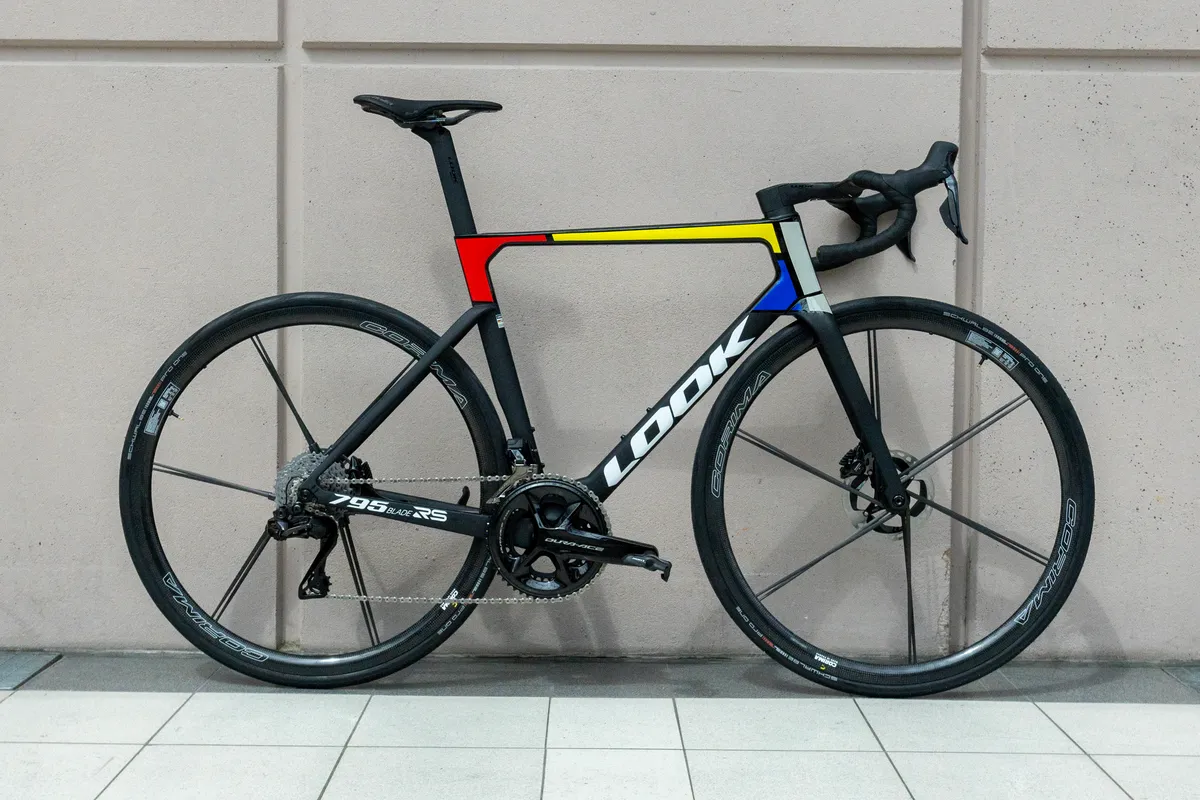
Rather like the Colnago, the new Look 795 Blade RS ridden by Team Cofidis has been in plain sight for months, but was only officially launched earlier in June.
Its profile is similar to many other pro bikes with front-end integration, aero tubes and dropped seatstays, but is a departure from Look’s previous pro-level race bikes.
As per the usual playbook, Look says the new bike is stiffer and more aero.
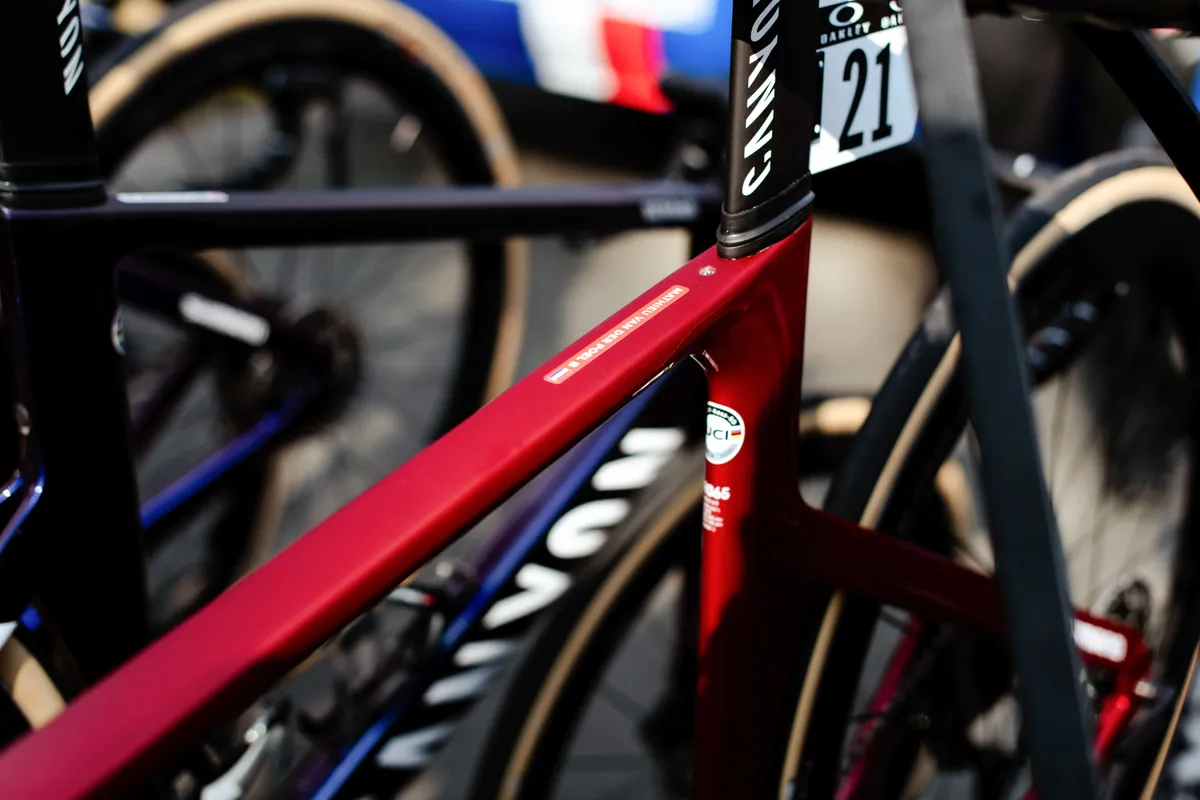
There are more subtle changes to the Canyon Aeroad . Canyon has yet to announce details, but there are slight changes to the tube profiles and the seatpost clamp has moved from the rear of the seat tube to the top of the top tube.

The changes to the Cannondale SuperSix EVO are equally small but significant, with the fourth generation of the bike lighter and more aero – and in LAB71 format significantly more expensive.
Other new bikes bubbling under include an update to the Factor O2 VAM , BMC's new aero road bike and a new Ridley bike , also aero.
One thing all these bikes have in common is there's not a cable or brake hose in sight. In part, that's down to all the groupsets ridden now having wireless connections between the shifters and the derailleurs.
It's also due to the brake hoses running exclusively internally. Since they're invariably hydraulic, there's no loss of braking efficiency, however sharp the bends and no matter how convoluted the routing becomes.
Tubeless wheels and tyres have mostly taken over
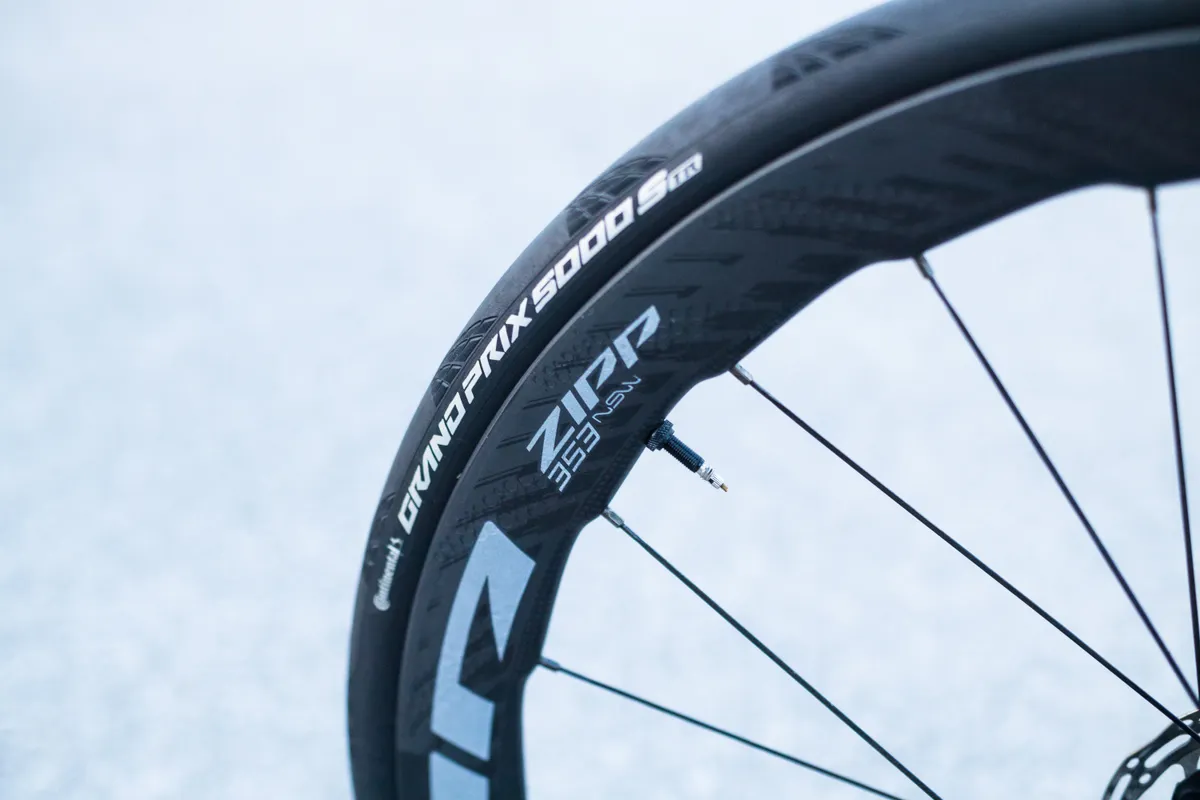
Almost all teams are now running tubeless tyres in place of the pros’ favourite tubulars. There are good reasons for this beyond the lack of potentially carcinogenic and addictive solvents in the tub cement (more of an issue for the team mechanics than the riders).
Matej Mohorič of Bahrain Victorious has claimed tubeless tech can lower rolling resistance by up to 15 watts per tyre. Paired with the latest aero wheel designs, that’s a huge margin.
You’re also less likely to need a wheel swap at a crucial point in the race, with sealant helping to cope with punctures, although unlike tubs you can’t ride a flat tyre to the finish or while waiting for the team car to give you a wheel swap.
28mm tyres are also increasingly taking over from 25mm, even on the smooth tarmac generally enjoyed on the Tour. Riders often sub in time trial tyres for road tyres, due to their lighter weight, although they in general offer less puncture protection than the best road bike tyres .
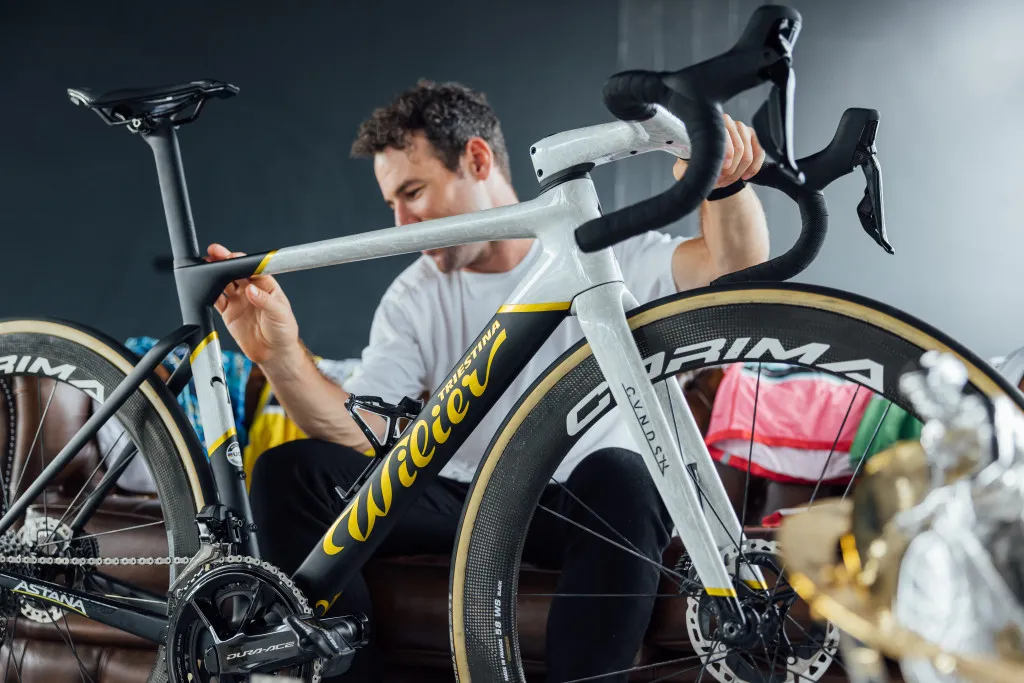
One team that has remained on tubs is Astana-Qazaqstan, although it’s in the process of swapping from Corima wheels that don’t offer a tubeless rim, to HED which does.
Component choices

As in previous years, Shimano dominates the teams’ drivetrain choices, with just three teams on SRAM (Jumbo-Visma, Movistar, Lidl-Trek) and one (AG2R-Citroën) on Campagnolo – one down on 2022 with the defection of UAE Team Emirates to Shimano at the beginning of 2023.
There's more on Campagnolo Super Record below, but an unlaunched update to SRAM Red AXS has been spotted. With SRAM focusing on the launch of its updated Force AXS groupset earlier in 2023, it seems likely that a new version of Red AXS will be announced sooner rather than later.
We've seen an increasing acceptance of single chainrings in races earlier in the season, such as Paris-Roubaix , and that may extend to flatter stages in the Tour, when the small chainring is little used.
Expect 2x setups to take over in the mountains again though, yet even there Primož Roglič showed that a single ring with a wide-range cassette was a winning option.
There’s more variation in wheels than drivetrains, with the aforementioned Corima and HED, as well as Reserve, Vision, DT Swiss, Roval, Newmen, Black Inc, ENVE, Bontrager, Zipp and Cadex all represented.
Campagnolo goes wireless
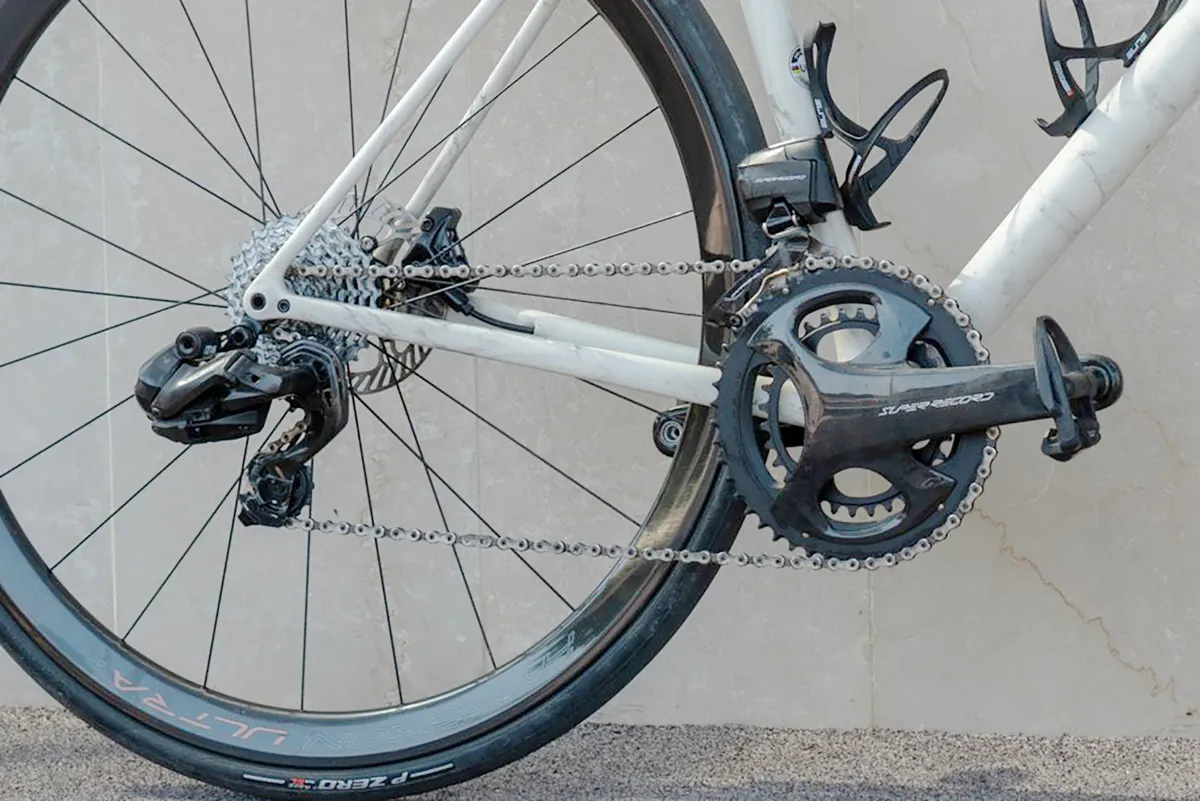
Campagnolo is providing its Super Record groupset to just one team this year, AG2R Citroën. However, it has dispensed with wires, with the recent launch of the new Super Record Wireless groupset.
As with SRAM Red AXS , the consumer version of Super Record Wireless uses smaller chainrings paired to cassettes starting with a 10-tooth sprocket and rising to just 29 teeth as the largest sprocket option. However, the pros are likely to stick to closer ratios for all but the toughest stages.
There are a couple of interesting things to watch out for here: first, are all the riders using the latest Wireless groupset?
When Shimano Dura-Ace went 12-speed last year, there were still teams using the older 11-speed Dura-Ace long after the official launch, due in large part to the new groupset’s scarcity.
Will Campagnolo have got its manufacturing and distribution ducks in a row better than Shimano?
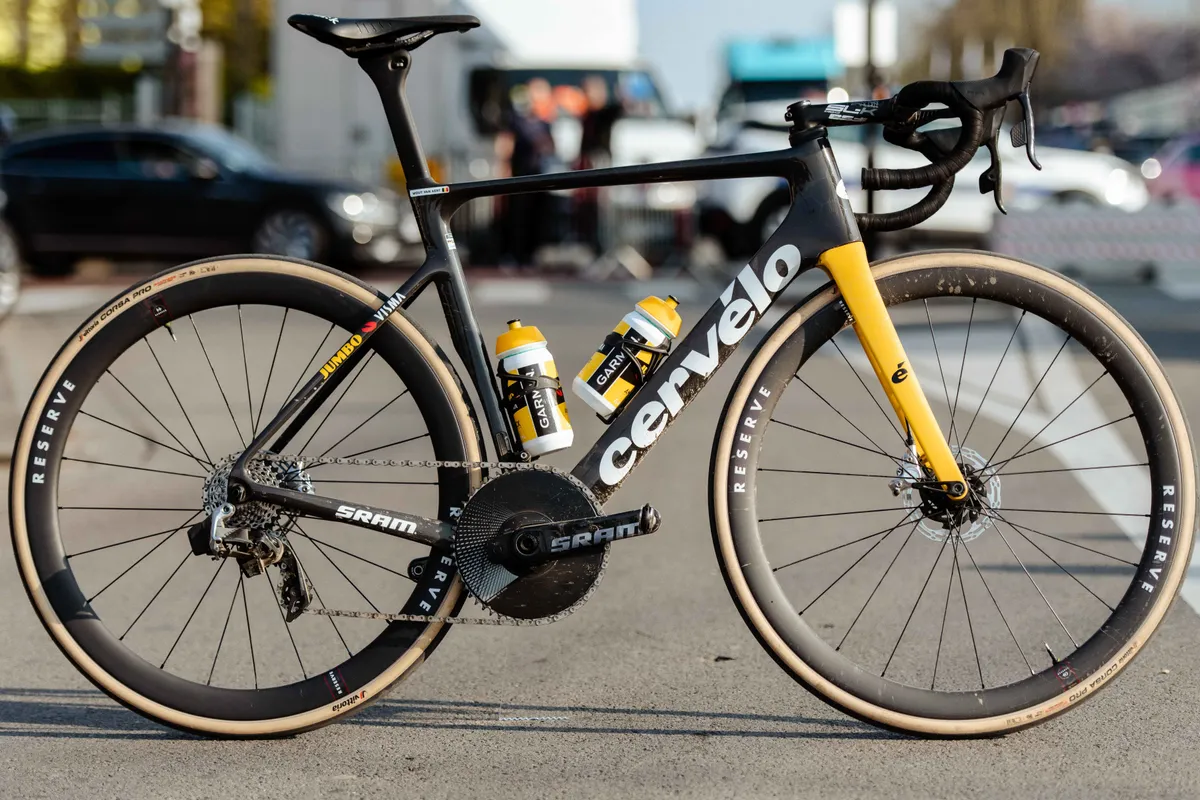
Second, with SRAM Red AXS, there are a series of chainring options designed specifically for the pros, which are larger than the chainrings on the complete cranksets available for consumer purchase.
That’s partly because pros like to push larger gears at their elevated riding speeds (winner Jonas Vingegaard averaged over 42kph throughout the entire Tour last year).
It’s also because the chainline and the degree of curvature of the chain as it passes over the jockey wheels and cassette make small, but significant, differences in drivetrain friction. Therefore, riding in a larger sprocket nearer the middle of the cassette is an easy marginal gain. It’s also the reason why OSPW systems are used by the pros.
Will we see AG2R Citroën riders using larger chainrings, perhaps borrowed from the previous generation of Super Record, with Campagnolo Super Record Wireless at the Tour?
Tour de France 2023 bikes
All 18 WorldTour teams ride the Tour de France and every one of them gets the pick of the best bikes from their sponsors’ ranges. That includes all teams using 12-speed wireless/semi-wireless electronic groupsets on their road bikes and a choice of top-spec carbon wheels.
The invited Pro Continental teams (Israel-Premier Tech, Lotto-Dstny, TotalEnergies, Uno X) too are on top-spec bikes and equipment – there’s no second best here.
Read on for a breakdown of who’s riding what.
AG2R Citroën Team (ACT)

- Framesets: BMC Teammachine SLR01/Timemachine Road/Timemachine (TT)
- Drivetrain: Campagnolo Super Record Wireless
- Wheels: Campagnolo Bora WTO/WTO Ultra
- Finishing kit: BMC, Power2Max, Look, Pirelli, Fizik, Elite, Wahoo
Alpecin-Deceuninck (ADC)
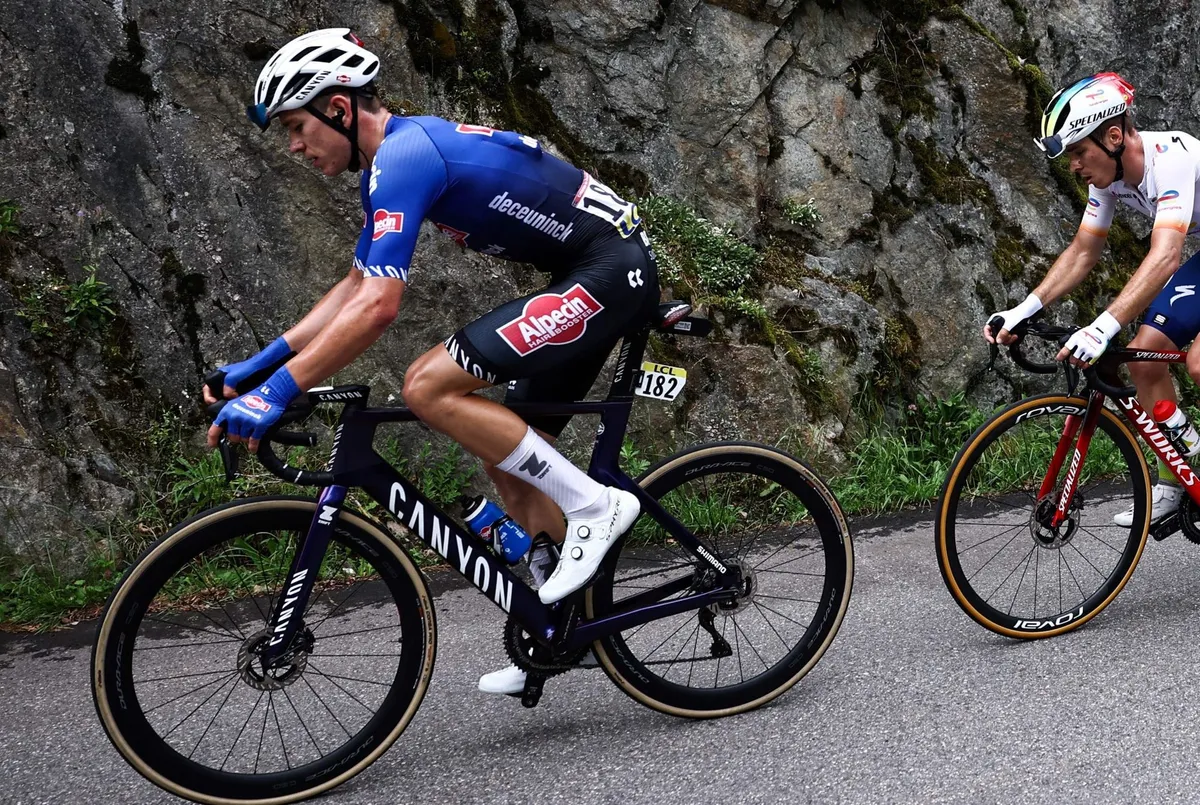
- Bikes: Canyon Ultimate CFR/Aeroad CFR/ Speedmax CFR Disc (TT)
- Groupset: Shimano Dura-Ace
- Wheels: Shimano
- Finishing kit: Canyon, Shimano, Vittoria, Selle Italia, Elite, Wahoo
Astana-Qazaqstan (AST)

- Bikes: Wilier Triestina Filante SLR/0 SLR/Turbine (TT)
- Groupset: Shimano Dura-Ace/SLF Motion jockey wheels and bottom bracket
- Wheels: Corima/HED
- Finishing kit: Wilier, Look, Vittoria, Prologo, Tacx, Garmin
Bahrain Victorious (TBV)
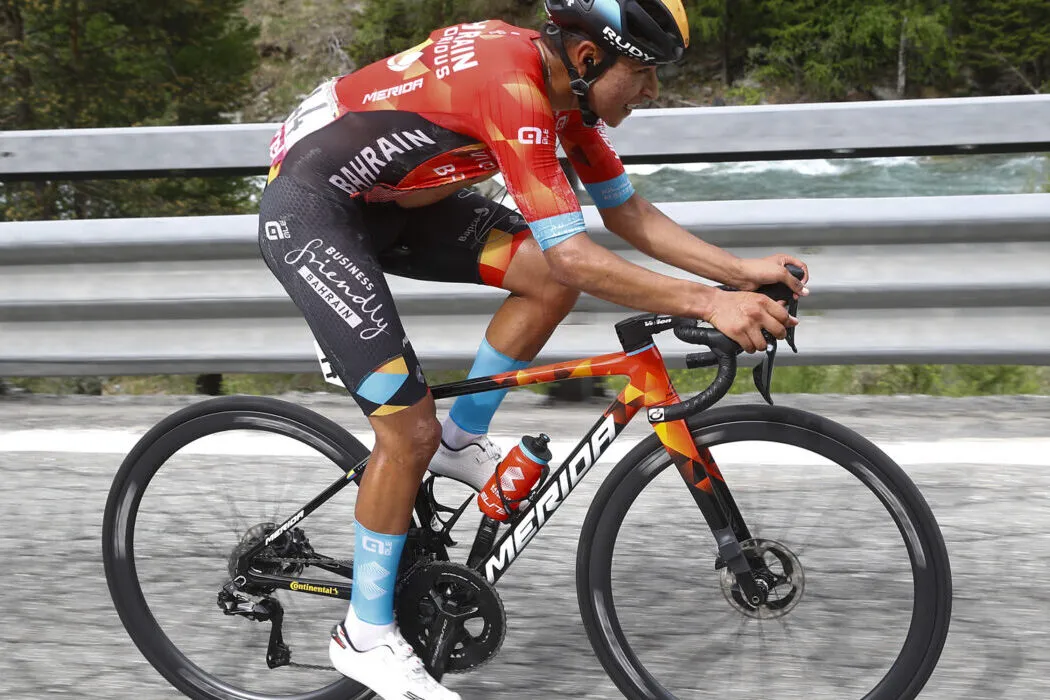
- Bikes: Merida Scultura Disc Team/Reacto Disc Team/Time Warp (TT)
- Wheels: Vision Metron
- Finishing kit: FSA/Vision, Continental, Prologo, Elite
Bora-Hansgrohe (BOH)
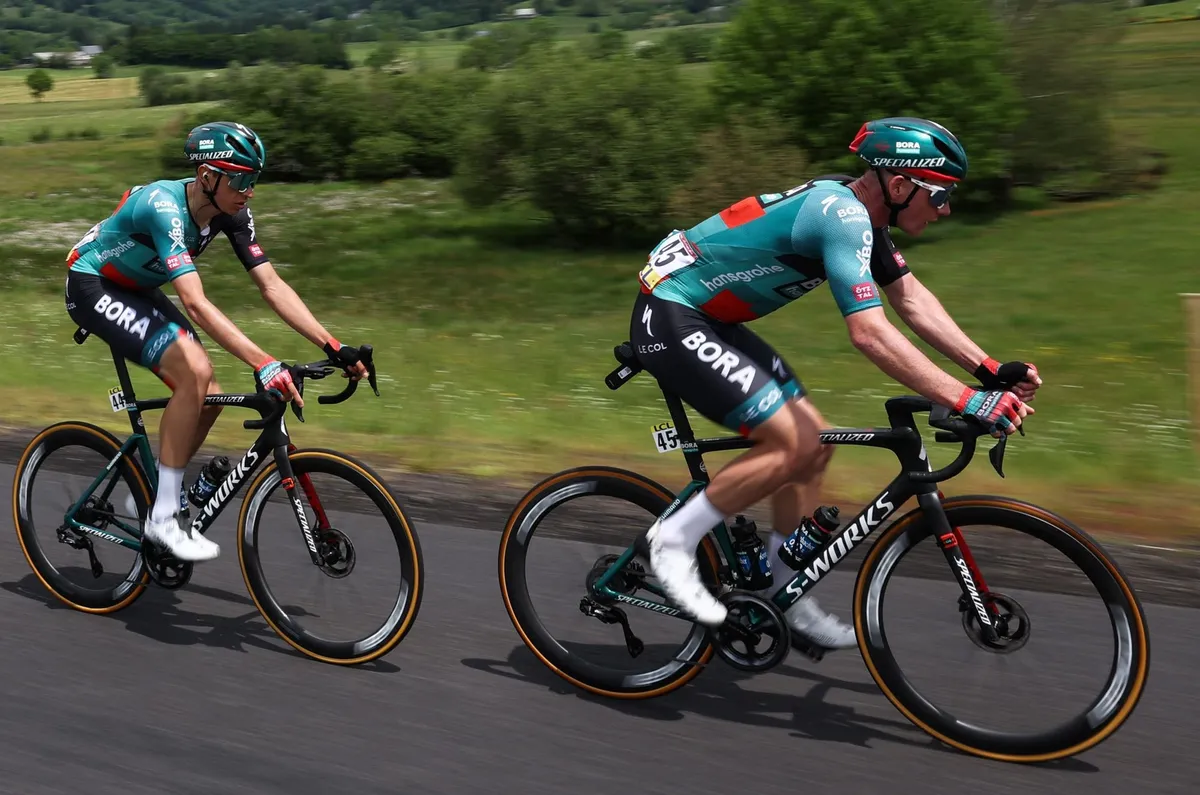
- Bikes: Specialized S-Works Tarmac SL7/Shiv (TT)
- Wheels: Roval
- Finishing kit: Roval, Specialized, Wahoo
Cofidis (COF)
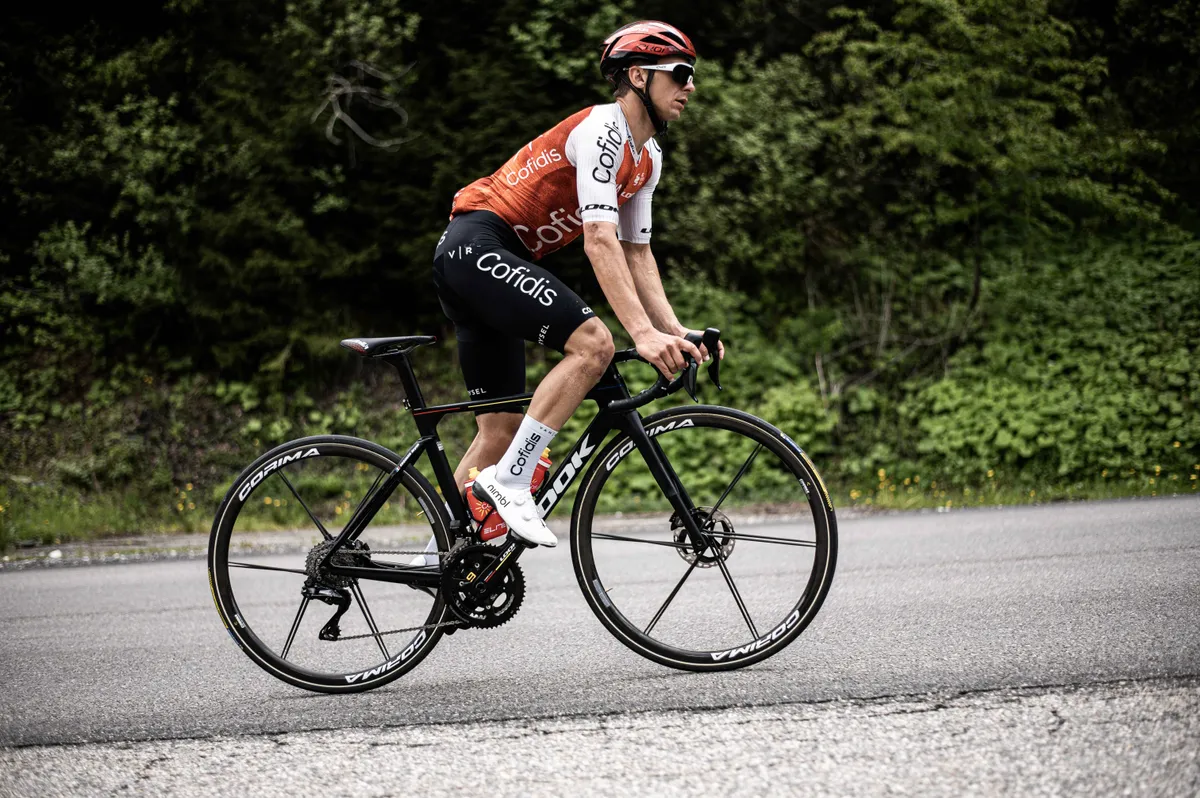
- Bikes: Look 795 Blade RS/796 Monoblade RS (TT)
- Wheels: Corima
- Finishing kit: Look, SRM, Michelin, Selle Italia, Elite, Wahoo
EF Education-EasyPost (EFE)

- Bikes: Cannondale SuperSix EVO/SystemSix/SuperSlice (TT)
- Finishing kit: FSA/Vision, Wahoo Speedplay, Vittoria, Prologo, FSA, Tacx, Wahoo
Groupama-FDJ (GFC)
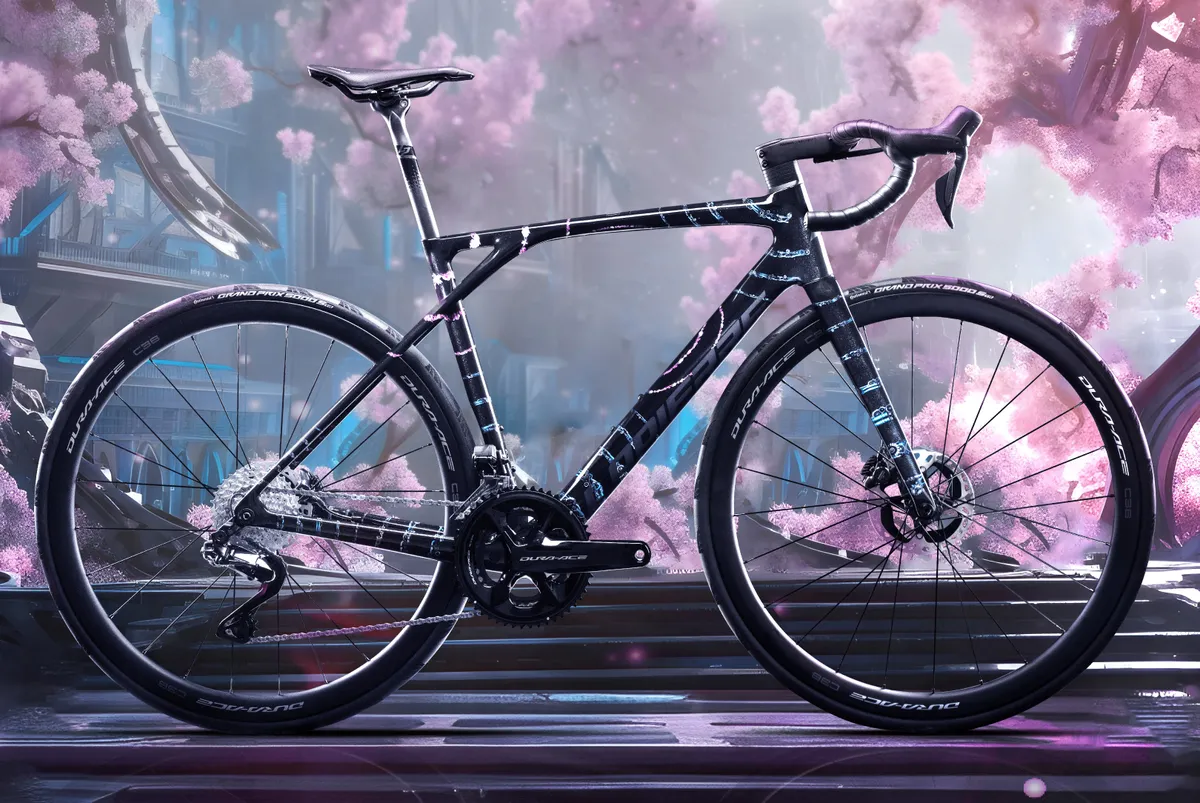
- Bikes: Lapierre Xelius SL 10.0/Aircode DRS/Aérostorm DRS (TT)
- Wheels: Shimano Dura-Ace / PRO
- Finishing kit: PRO, Continental, Prologo, Elite, Garmin
Ineos Grenadiers (IGD)
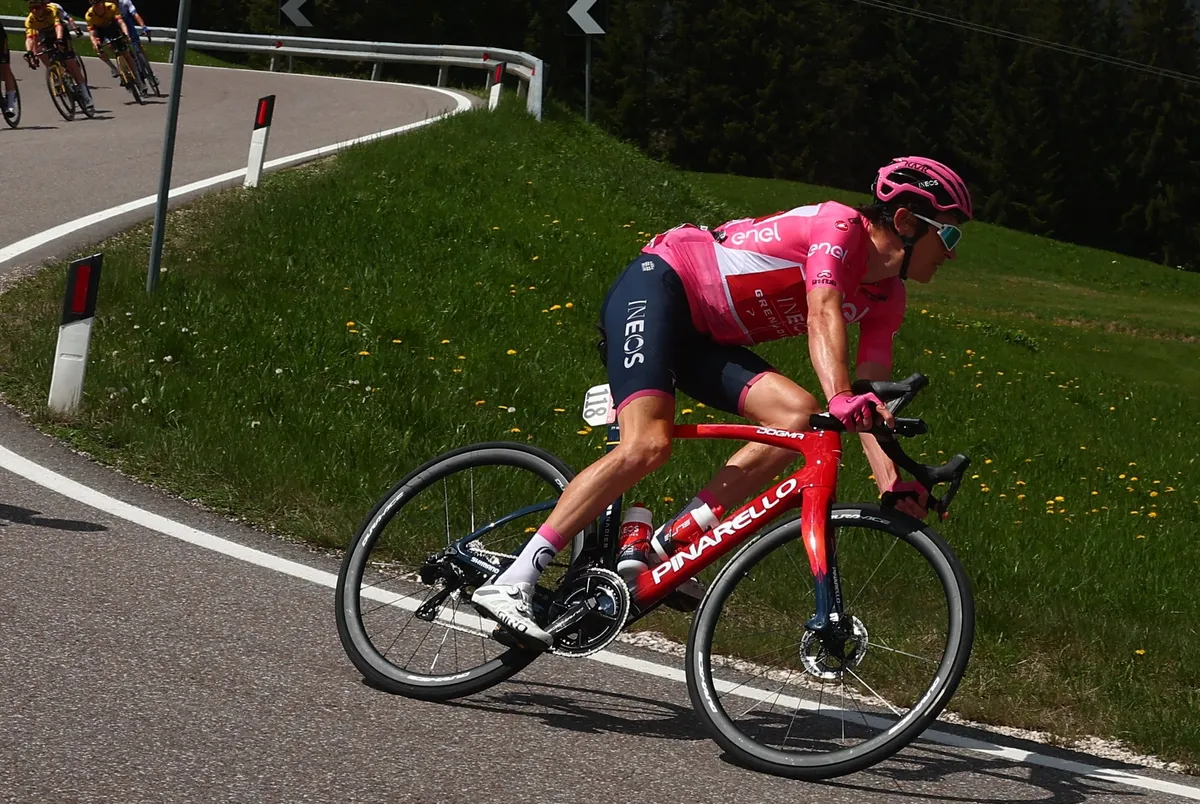
- Bikes: Pinarello Dogma F/Bolide (TT)
- Wheels: Shimano Dura-Ace/Princeton Carbonworks
- Finishing kit: MOST, Continental, Fizik, Elite, Garmin
Intermarché-Circus-Wanty (ICW)
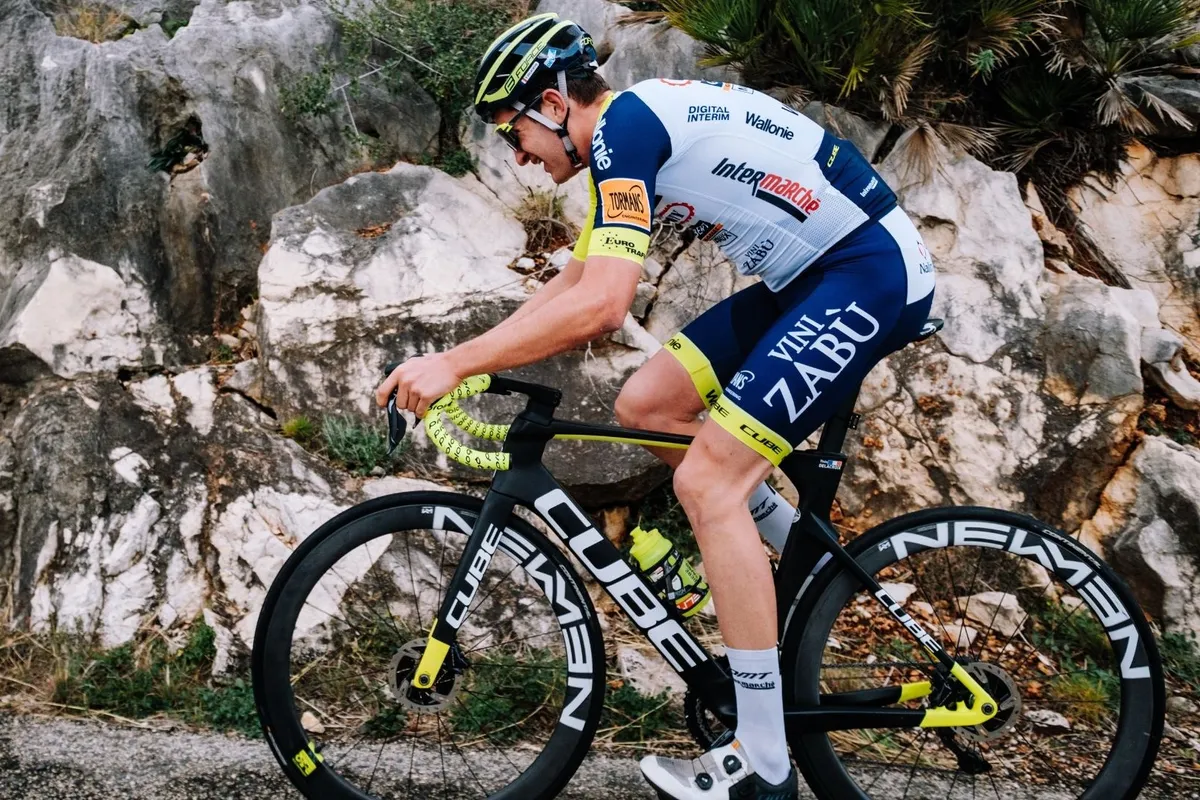
- Bikes: Cube Litening C:68X Pro/Aerium (TT)
- Wheels: Newmen Advanced SL
- Finishing kit: Cube, Look, Continental, Prologo, Elite, CeramicSpeed, Bryton
Israel-Premier Tech (IPT)

- Bikes: Factor Ostro VAM / O2 VAM / Hanzo (TT)
- Groupset: Shimano Dura-Ace/FSA chainset
- Wheels: Black Inc
- Finishing kit: Black Inc, Rotor, Maxxis, Selle Italia, CeramicSpeed, SwissStop, Elite, Hammerhead
Jumbo-Visma (TJV)
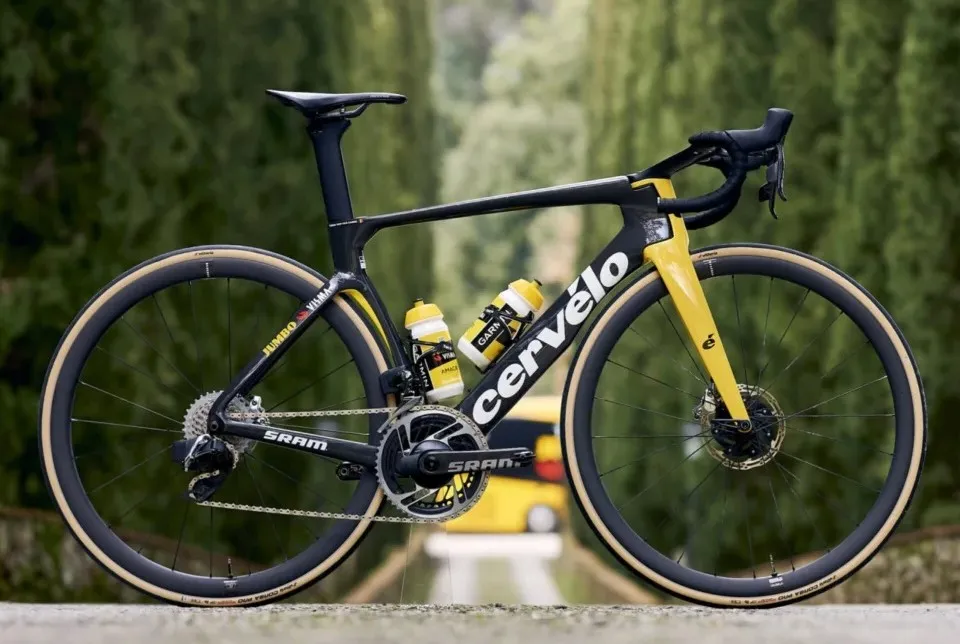
- Bikes: Cervélo R5 Disc/S5/P5 (TT)
- Groupset: SRAM Red eTap AXS
- Wheels: Reserve 52/63
- Finishing kit: Cervélo, Wahoo Speedplay, Vittoria, Fizik, Tacx, Garmin
Lidl-Trek (LTK)
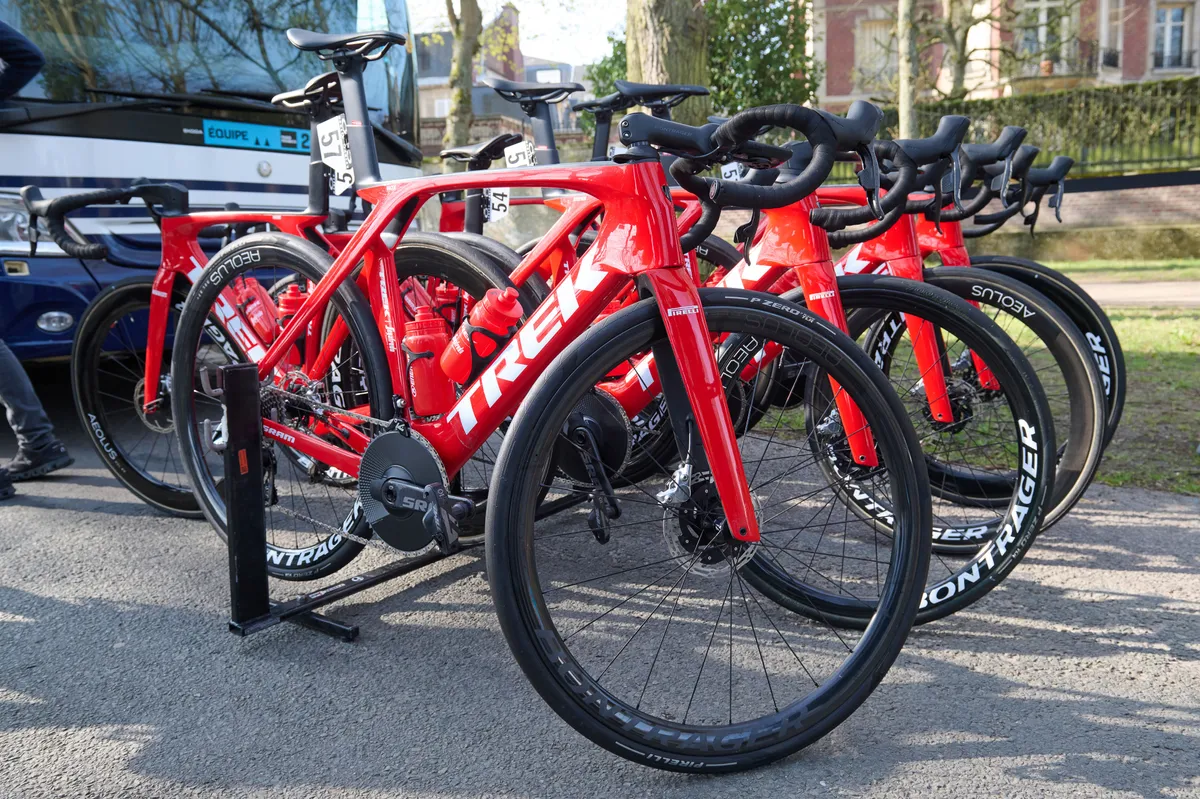
- Bikes: Trek Émonda SLR/Madone SLR/Speed Concept (TT)
- Wheels: Bontrager Aeolus
- Finishing kit: Bontrager, Time, Pirelli, Wahoo
Lotto-Dstny (LTD)
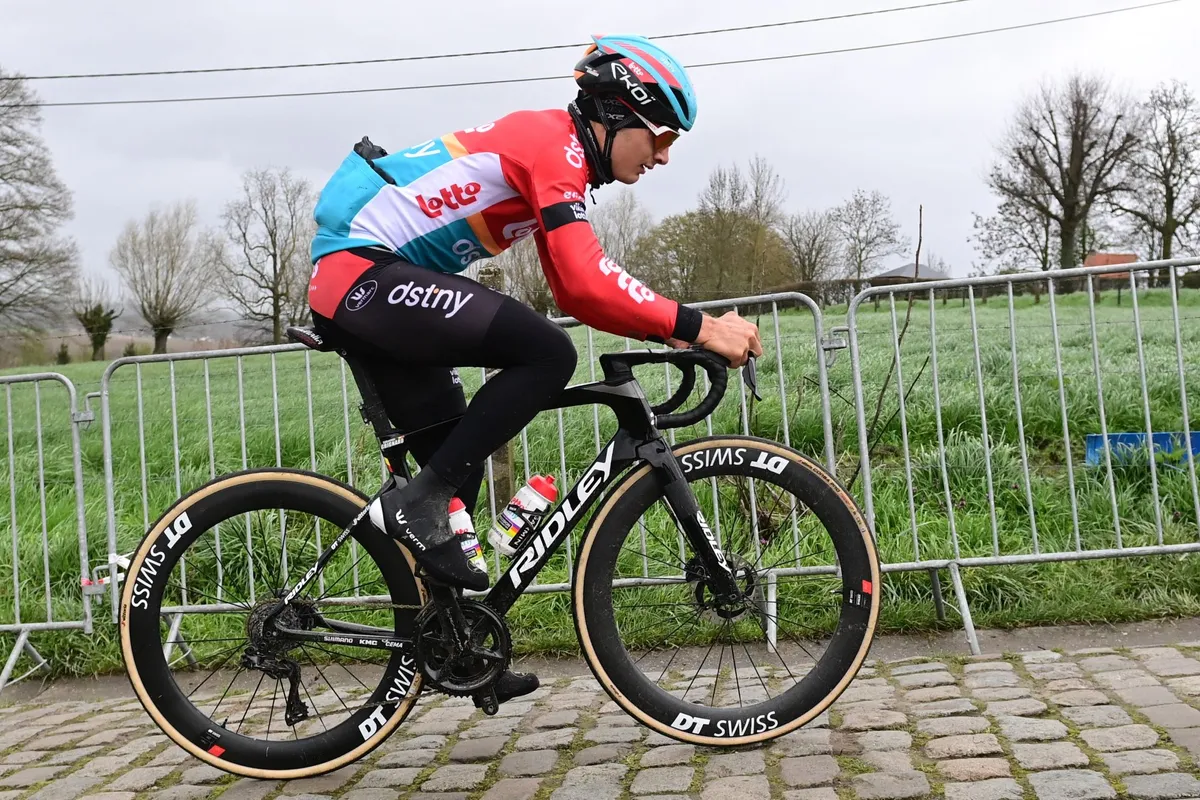
- Bikes: Ridley Noah Fast Disc/Helium SLX Disc/Dean Fast (TT)
- Groupset: Shimano Dura-Ace/Cema bearings
- Wheels: DT Swiss
- Finishing kit: Deda, 4iiii, Vittoria, Selle Italia, Tacx, Garmin
Movistar Team (MOV)
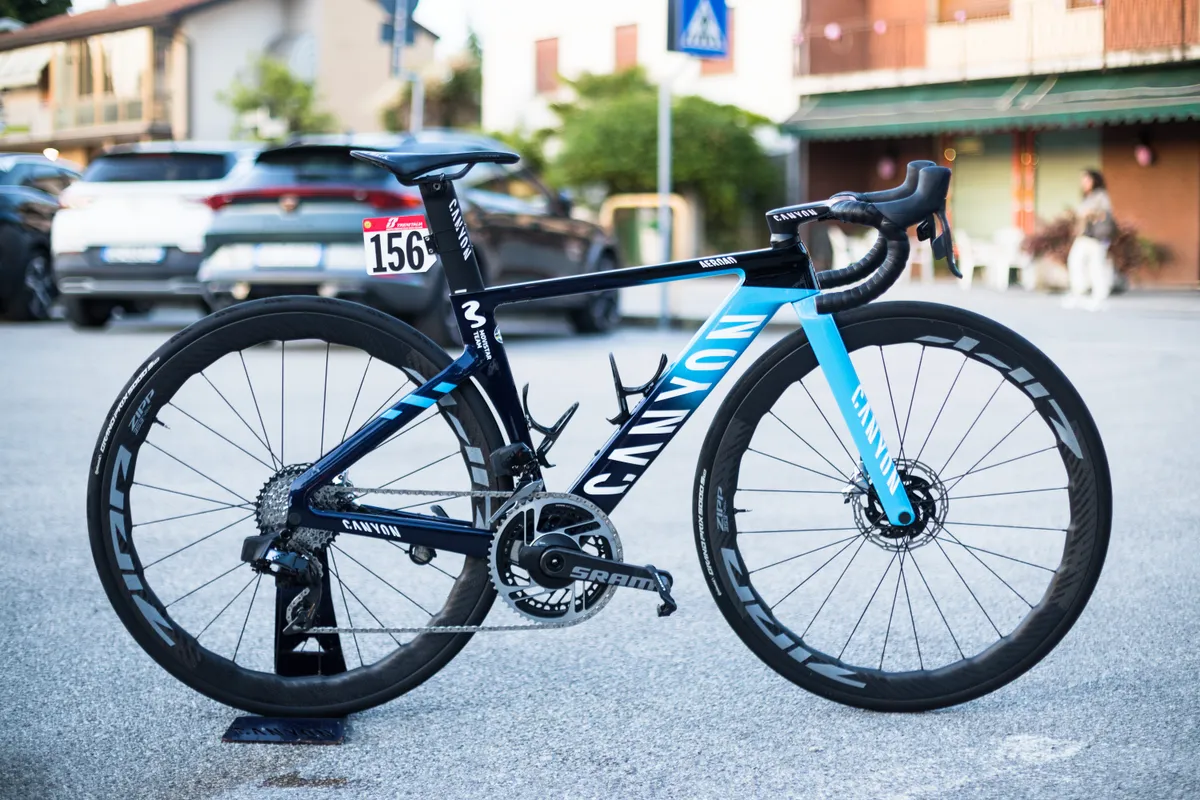
- Bikes: Canyon Aeroad CFR/Speedmax CF SLX (TT)
- Wheels: Zipp
- Finishing kit: Canyon, Look, Continental, Fizik, Lizard Skins, Garmin
Soudal-QuickStep (SOQ)

- Bikes: Specialized S-Works Tarmac SL7/Roubaix/Shiv (TT)
- Finishing kit: Roval, Specialized, CeramicSpeed, Tacx, Supercaz, Garmin
Team Arkéa-Samsic (ARK)
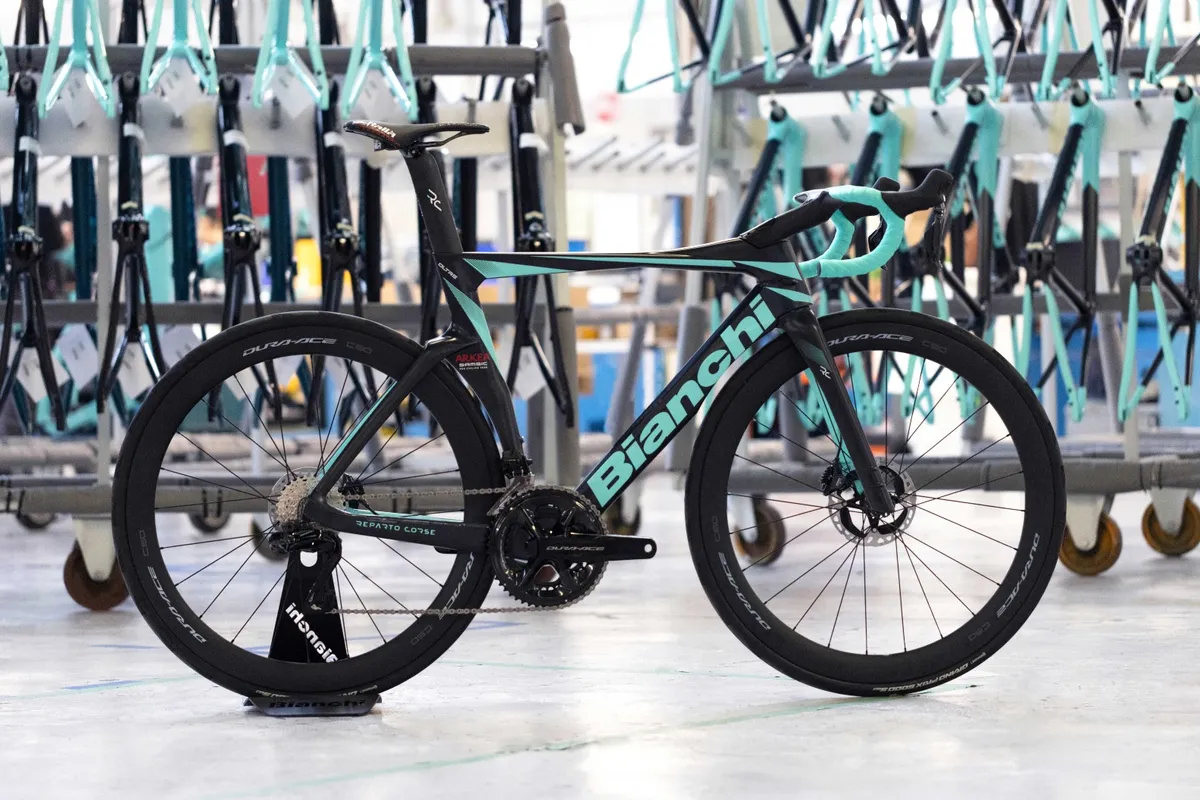
- Bikes: Bianchi Specialissima/Oltre RC/Aquila (TT)
- Finishing kit: Bianchi, Continental, Selle Italia, Elite, Wahoo
Team DSM-Firmenich (DSM)
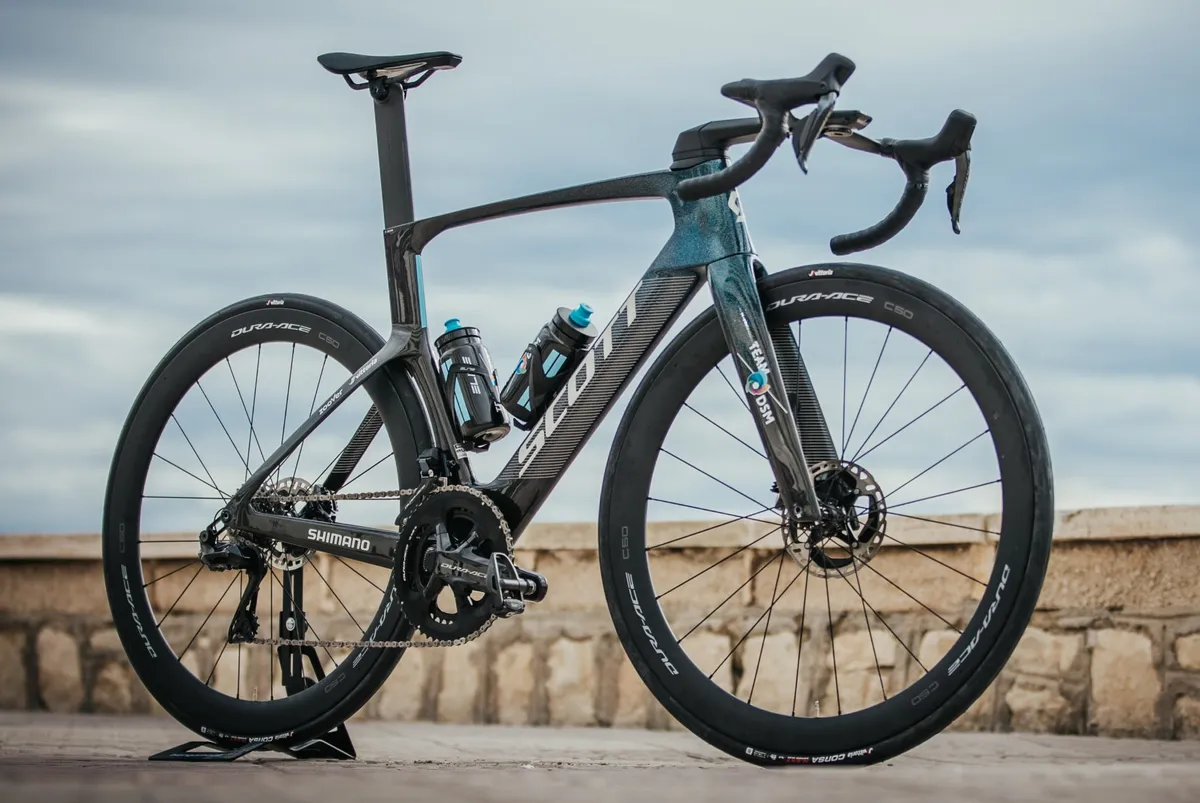
- Bikes: Scott Foil RC/Plasma 5 (TT)
- Wheels: Shimano Dura-Ace
- Finishing kit: Syncros, Vittoria, Elite, Wahoo
Team Jayco-AlUla (JAY)

- Bikes: Giant Propel Advanced Disc/TCR Advanced SL Disc/Trinity Advanced Pro (TT)
- Wheels: Cadex 36, 42, 65
- Finishing kit: Cadex, Giant
TotalEnergies (TEN)
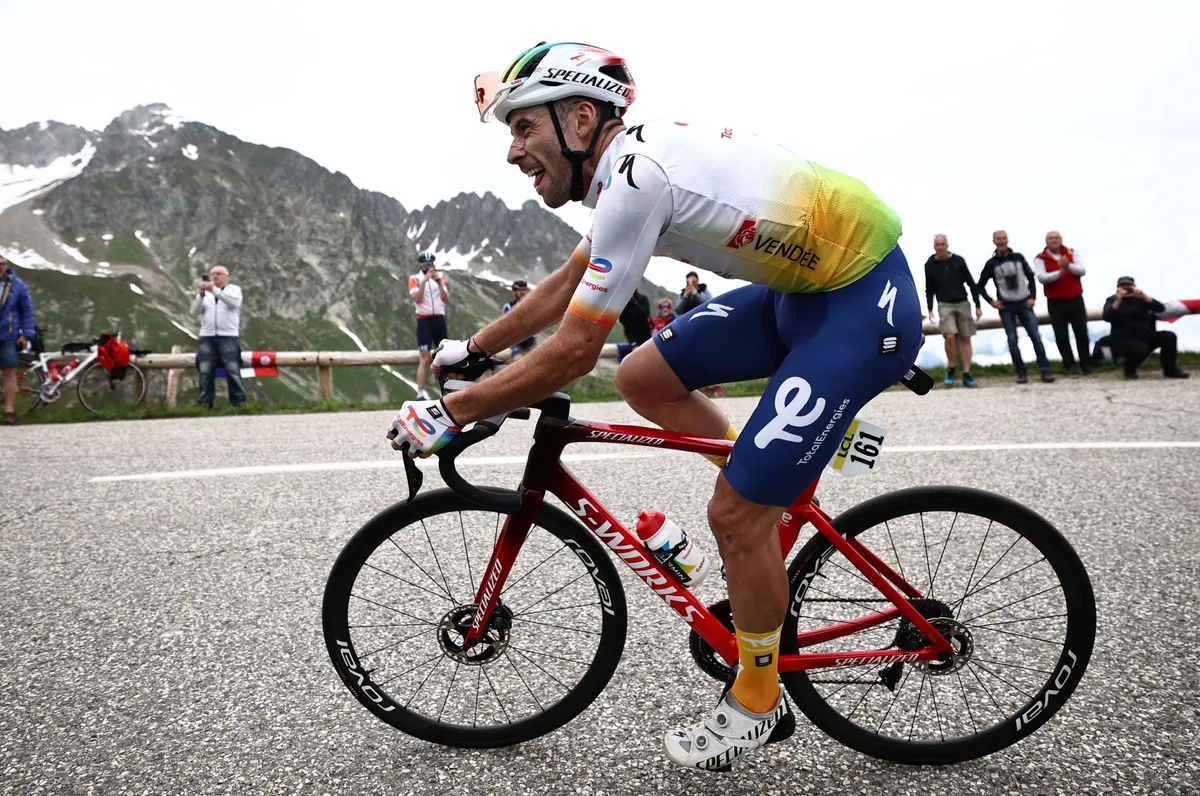
- Finishing kit: Roval, Specialized, Tacx, Garmin
UAE Team Emirates (UAD)
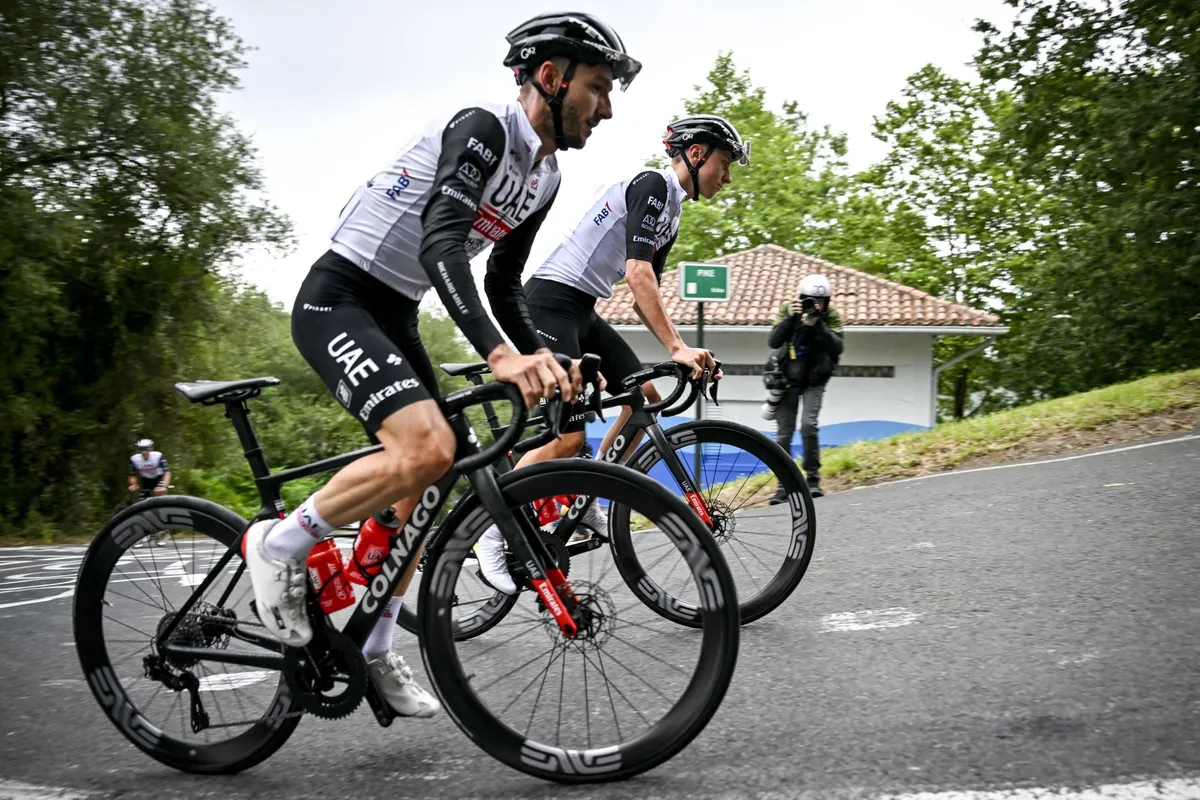
- Bikes: Colnago V4Rs/K.one (TT)
- Wheels: ENVE
- Finishing kit: Colnago, Look, Continental, Prologo, Elite, Wahoo
Uno-X Pro Cycling (UXT)
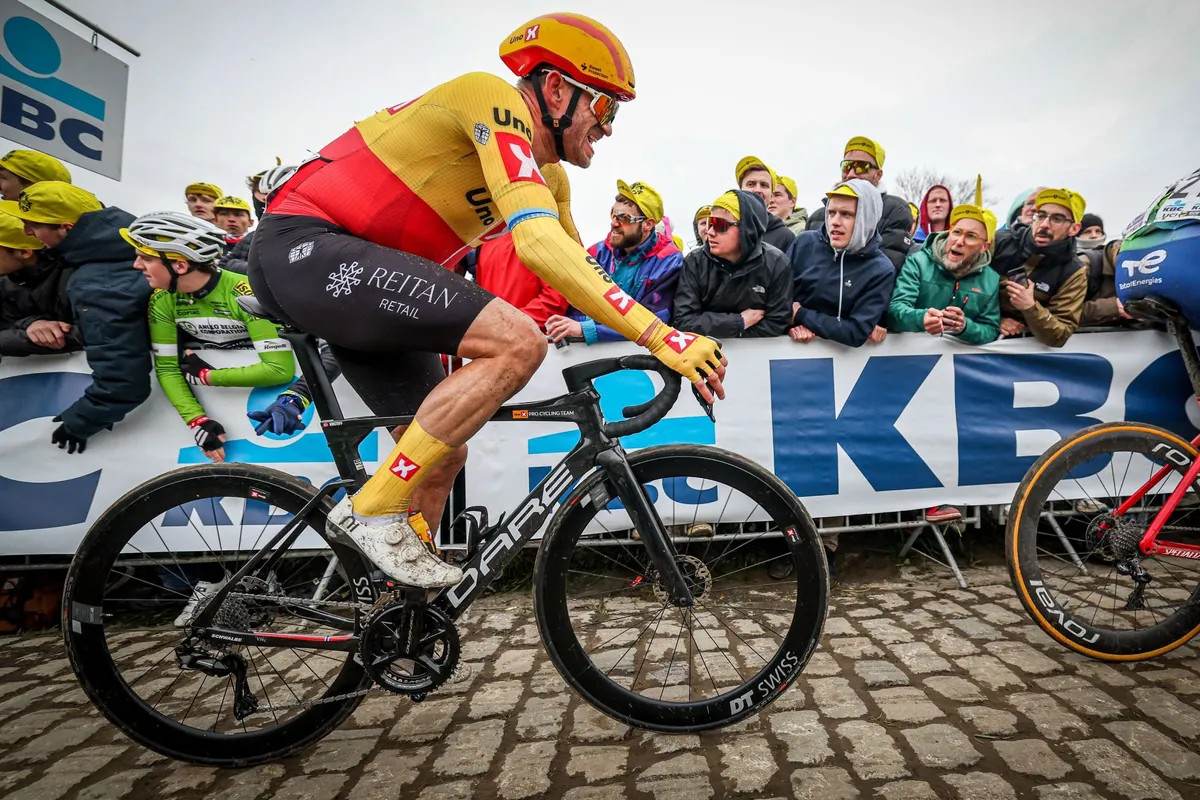
- Bikes : Dare VSRu/TSRf (TT)
- Finishing kit: Dare, Schwalbe, Pro, CeramicSpeed, Elite, Garmin
Share this article

Deputy editor

- Terms & Conditions
- Subscribe to our magazines
- Manage preferences

IMAGES
VIDEO
COMMENTS
1993 Tour de France Quick Facts. The 1993 Tour had 20 stages plus a prologue that totaled 3,714.3 kilometers. It was ridden at an average speed of 38.709 km/hr. 180 riders started and there were 136 classified finishers. This was Miguel Indurain's third consecutive Tour victory.
The 1993 Tour de France was the 80th edition of the Tour de France, taking place from 3 to 25 July.It consisted of 20 stages, over a distance of 3,714 km (2,308 mi). The winner of the previous two years, Miguel Induráin, successfully defended his title.The points classification was won by Djamolidine Abdoujaparov, while the mountains classification was won by Tony Rominger.
In 1993, Lance Armstrong rode this iconic bike to secure his first-ever stage win at the Tour de France and to triumph at the World Cycling ... s Butterfly Madone was designed by British artist Damien Hirst to celebrate Armstrong's comeback at the 2009 Tour de France. The bike was eventually auctioned off for half a million dollars, making it ...
There were 20 teams in the 1993 Tour de France, each composed of 9 cyclists. The first 14 teams were selected in May 1993, based on the FICP ranking; in June 1993, six additional wildcards were given; one of the wildcards was given to a combination of two teams (Chazal and Subaru). The Subaru team did not want to be part of a mixed team, so Chazal was allowed to send a full team.
Miguel Indurain is the winner of Tour de France 1993, before Tony Rominger and Zenon Jaskuła. Djamolidine Abduzhaparov is the winner of the final stage.
is the winner of Tour de France 1993, before and . is the winner of the final stage.
Mario Cipollini is the winner of Tour de France 1993 Stage 1, before Wilfried Nelissen and Laurent Jalabert. Miguel Indurain was leader in GC.
Results of the cycling race Tour de France GC in 1993 won by Miguel Induráin Larraya before Tony Rominger and Zenon Jaskuła. CyclingRanking. Rankings . Riders. Overall 1869 - 2024; ... Tour de France 1993 | General Classification . 80th edition. General Classification. 3 July 1993 - 26 July 1993. Rider Team Time; 1. Miguel INDURÁIN LARRAYA ...
Chiappucci has wisely declined the kamikaze role in this Tour de France, but has nominated a couple of other riders. They are Tony Rominger and Alex Zulle, two Swiss who this year have dominated ...
Stage 2 » Les Sables-d'Olonne › Vannes (227.5km) Wilfried Nelissen is the winner of Tour de France 1993 Stage 2, before Djamolidine Abduzhaparov and Mario Cipollini. Wilfried Nelissen was leader in GC.
Cycling - Tour de France 1993 - Results. Sport Betting; Yearly calendar; ... Tour de France 1993. France - 3 July 1993 - 25 July 1993. General Classification - 25 July 1993. 1: Miguel Indurain Larraya (SPA) Banesto - Pinarello: 95h57'09'' 2: Tony Rominger (SWI) Clas - Cajastur: 4'59'' 3:
12 ARTUNGHI Marco * (DNF #11) 13 CHIESA Mario. 14 PULNIKOV Vladimir. 15 ROCHE Stephen. 16 ROSCIOLI Fabio. 17 ROSSI Remo * (OTL #4) 18 SØRENSEN Rolf. 19 TAFI Andrea. DS BOIFAVA Davide, QUINTARELLI Sandro.
Start: July 3rd 1993 End: July 25th 1993 Number of stages : 20 Number of participants : 180 Number of finishers : 136 Distance : 3714 km Average speed : 38.709 km General classification of the 1993 Tour de France
Bjarne Riis is the winner of Tour de France 1993 Stage 7, before Maximilian Sciandri and Johan Museeuw. Johan Museeuw was leader in GC.
Results of all of the stages and the GC in the cycling race Tour de France in 1993. CyclingRanking. Rankings . Riders. Overall 1869 - 2024; Top 10 Year Avg Ranking; 2024; 2023; Yearly 1869 - 2024; Teams. Overall 1869 - 2024; ... Tour de France 1993 | Stage Overview 80th edition. 3 July 1993 - 26 July 1993. Date Stage Winner Distance; 03/07 ...
Djamolidine Abduzhaparov is the winner of Tour de France 1993 Stage 18, before Frankie Andreu and Rolf Sørensen. Miguel Indurain was leader in GC.
The 1993 Tour de France was the 80th edition of the Tour de France, taking place from 3 to 25 July. It consisted of 20 stages, over a distance of 3,714 km (2,308 mi). The winner of the previous two years, Miguel Induráin, successfully defended his title. The points classification was won by Djamolidine Abdoujaparov, while the mountains ...
The Tour DuPont was a cycling stage race in the United States held annually between 1989 and 1996, initially called the Tour de Trump in the first two years. It was intended to become a North American cycling event similar in format and prestige to the Tour de France.The tour's names came from its sponsors, first the businessman (and later U.S. President) Donald Trump and then later DuPont.
Time trial technology has come a very long way in the past 40 years, and this special time trial gallery tells the story of the design and development of the time trial bike, equipment and ...
Tour de France 2 individual stages (1993, 1995) Stage races. Tour de Luxembourg (1998) Tour DuPont (1995, 1996) One-day races and Classics. ... Greg LeMond, Irish cycling legend Sean Kelly and five time Tour champion Miguel Induráin were the most important cyclists at the event. LeMond said it was a good reason to get cyclists together, went ...
By Dan Chabanov Published: Mar 28, 2024. Save Article. Paris-Roubaix is an event steeped in cycling history, lore, and tradition, held annually in April, often on Easter Sunday, it's the second ...
25. Gearing choice in the Tour used to be easy, a standard chainset was the only way to go and cassette choices were limited at best. However, these days, with 12-speed options from Shimano, SRAM and Campagnolo all represented in the peloton, there's more choice than ever. We've had a nosey at the pros' bikes to see what they're using this year.
Jonas Vingegaard rode a Cervélo bike to his second Tour de France overall win in 2023 with SRAM Red eTap AXS electronic groupset and Reserve Wheels.. Depending on the stage profile, Jonas Vingegaard's bike can be a Cervelo R5, S5, or P3. Cervélo R5 is an all-rounder, lightweight road race bike for the mountains.; Cervélo S5 is an aero bike for the flat stages.
A complete list of the bikes raced by each team in the 2022 Tour de France, along with the groupsets, wheels and finishing kit they're fitted with.